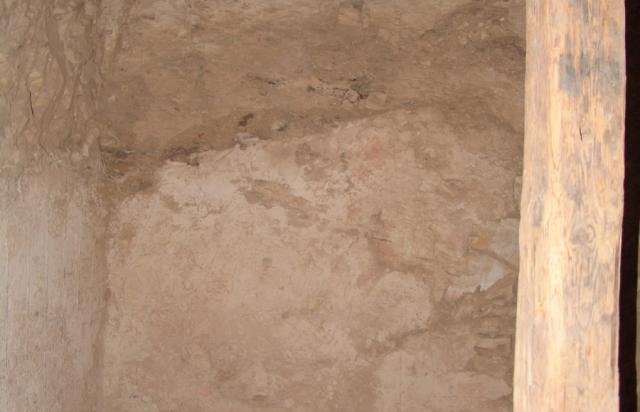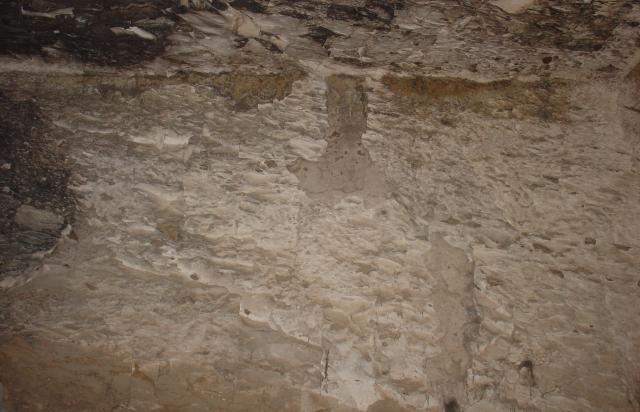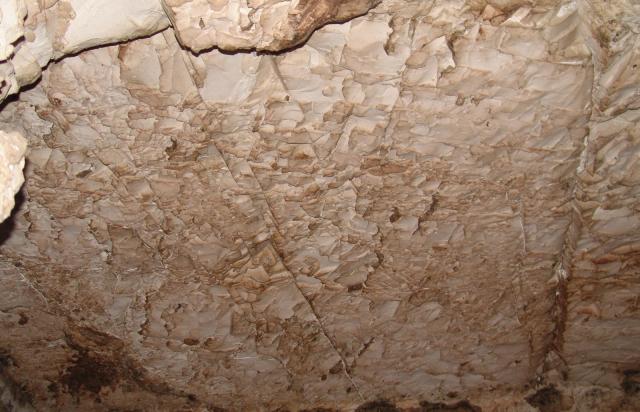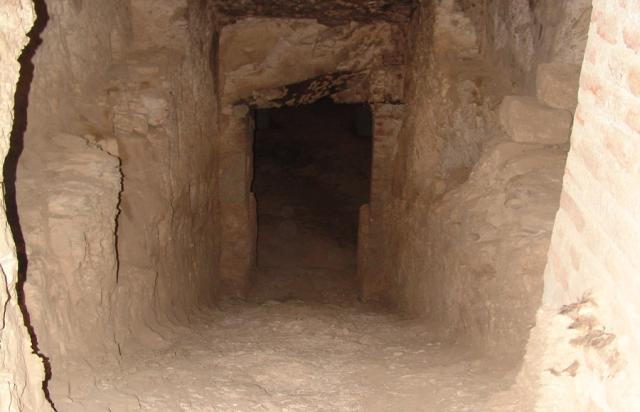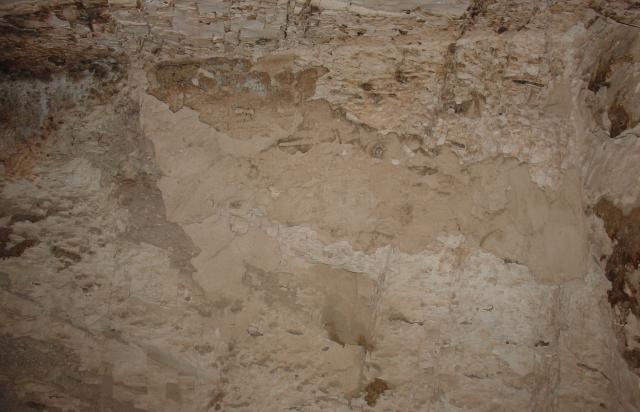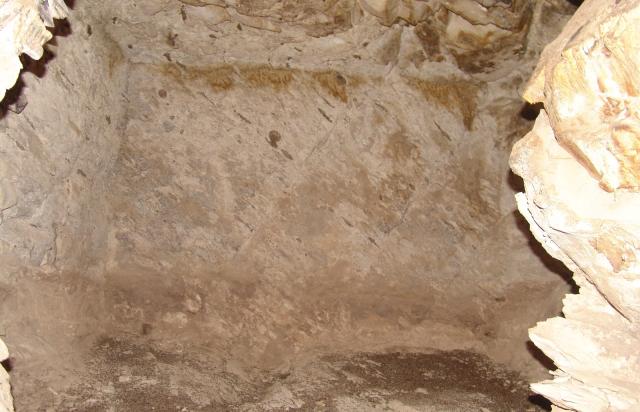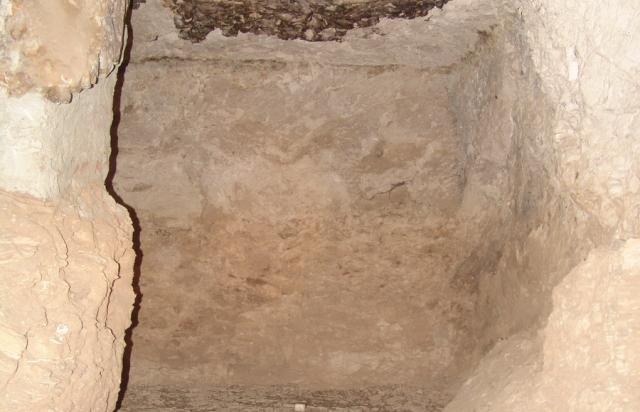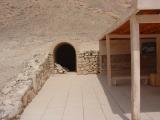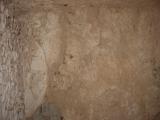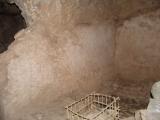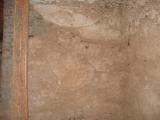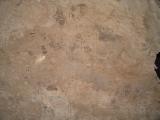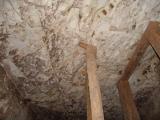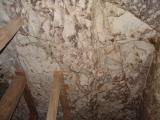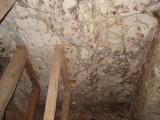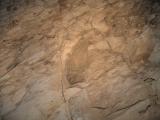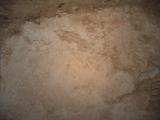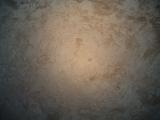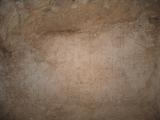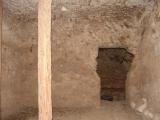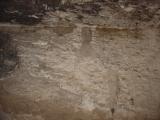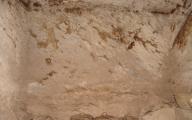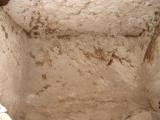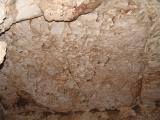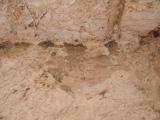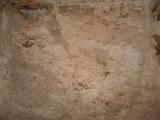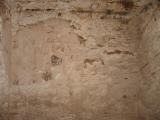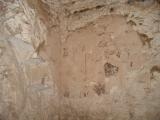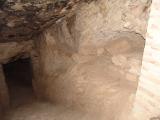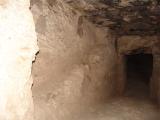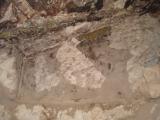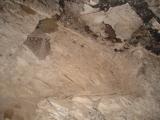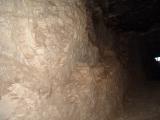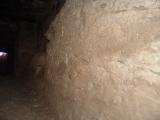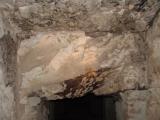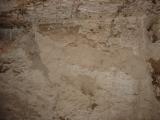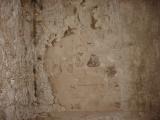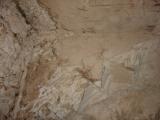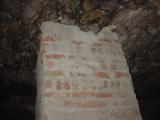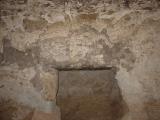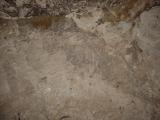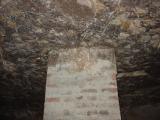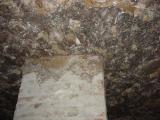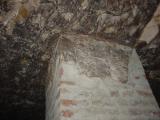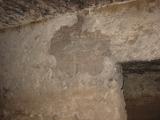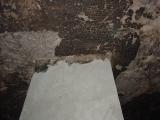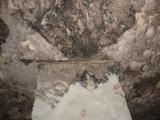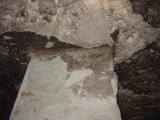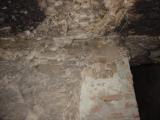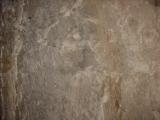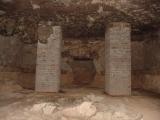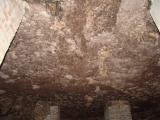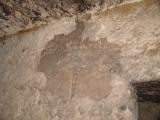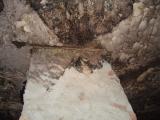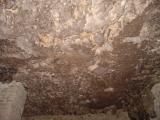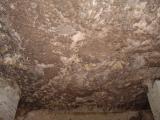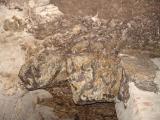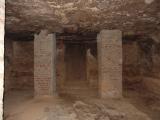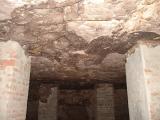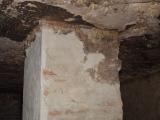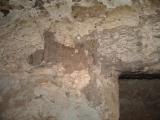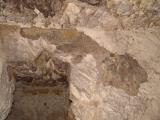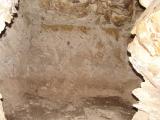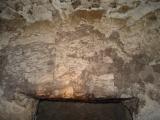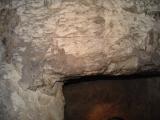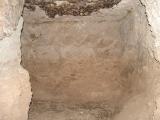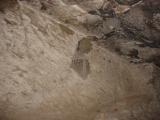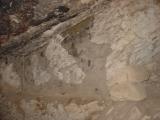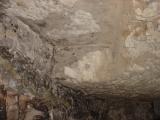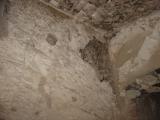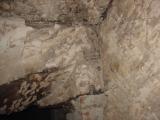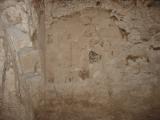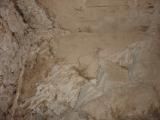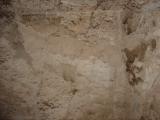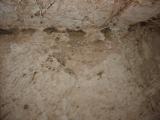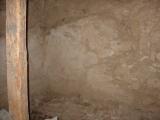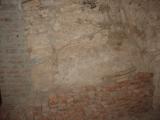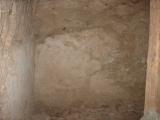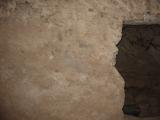QV 80
Queen Tuy
Entryway A
See entire tombA steep stepped Ramp covered by a modern masonry arch provides access to the tomb.
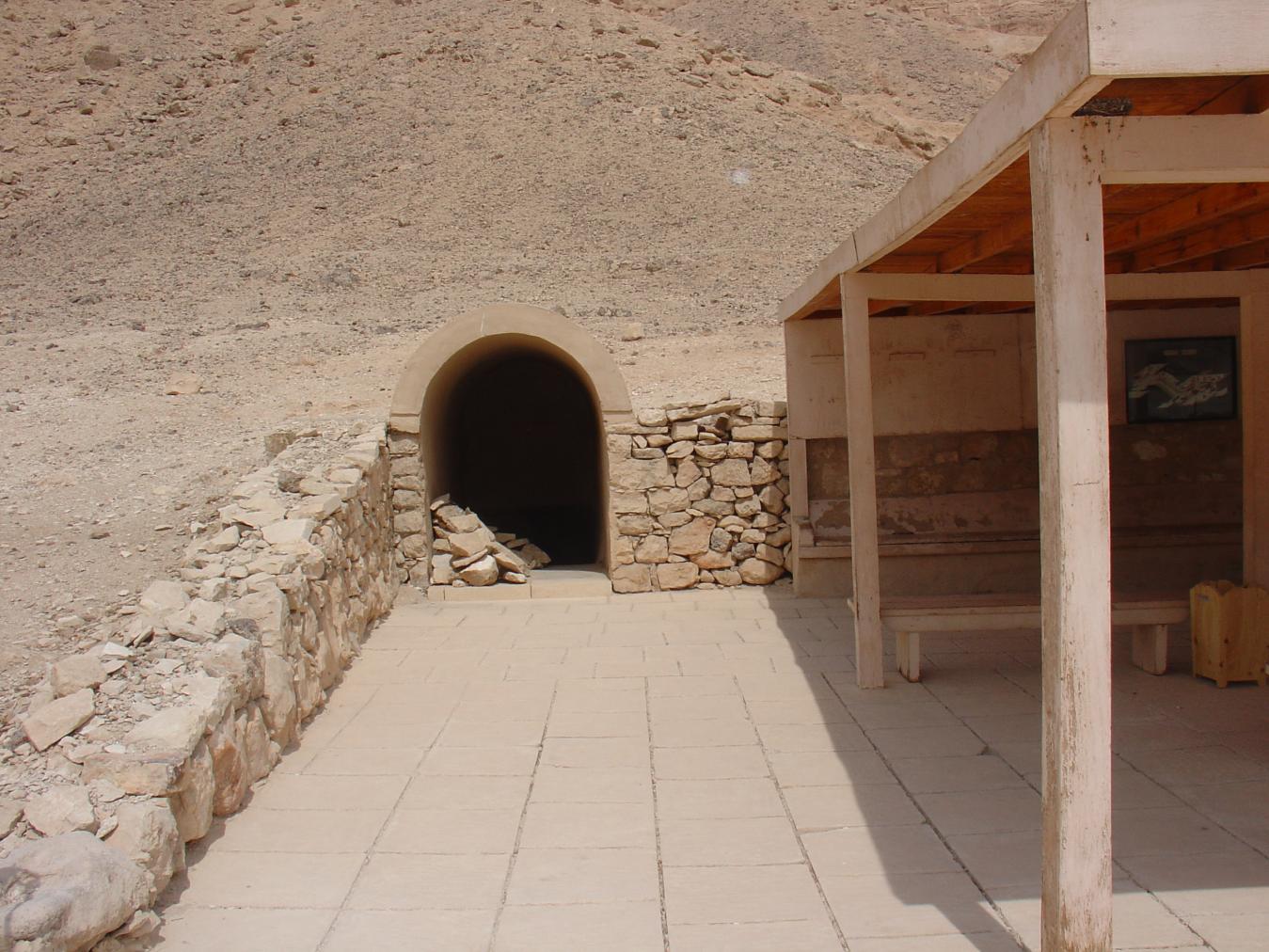
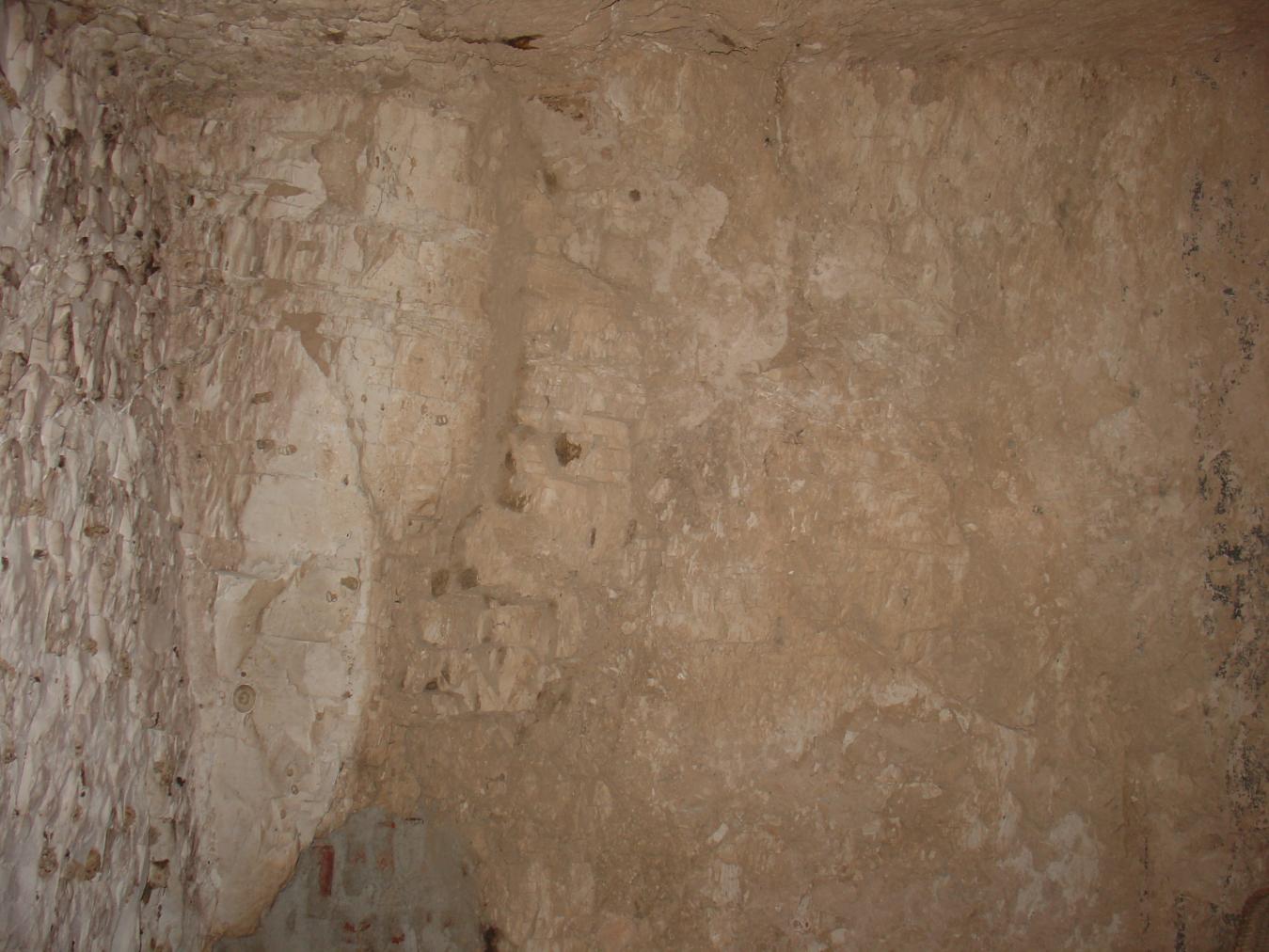
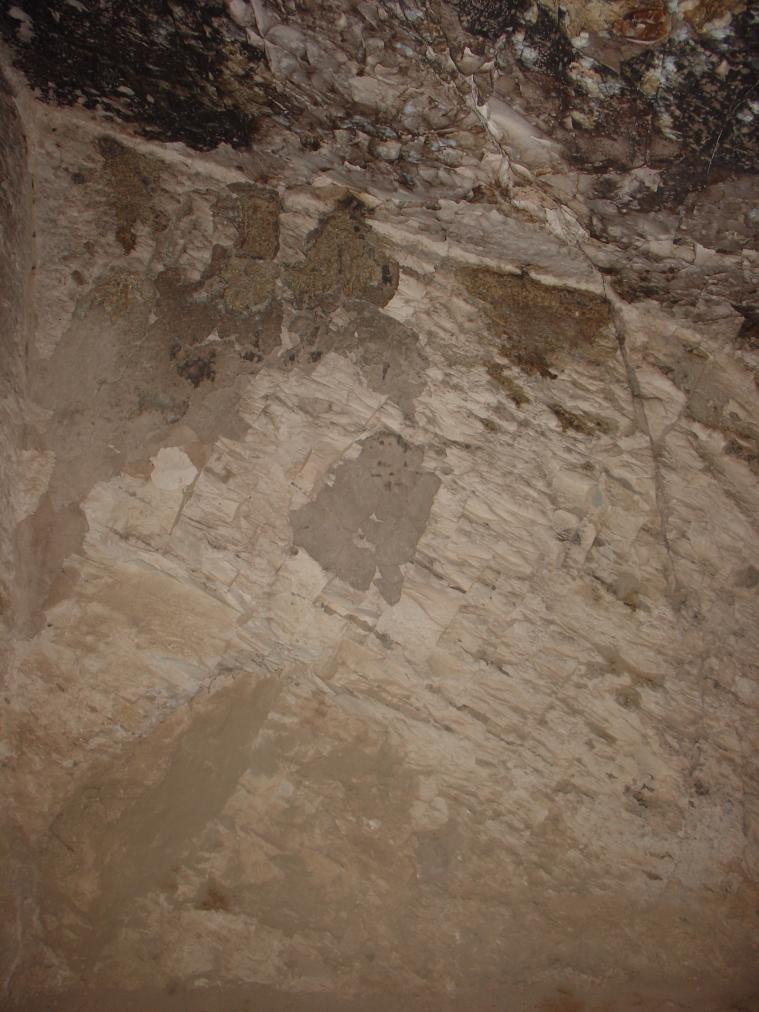
Gate B
See entire tombThis gate provides access to the tomb and has been reconstructed. A metal grill door with mesh now prevents entry to the tomb.
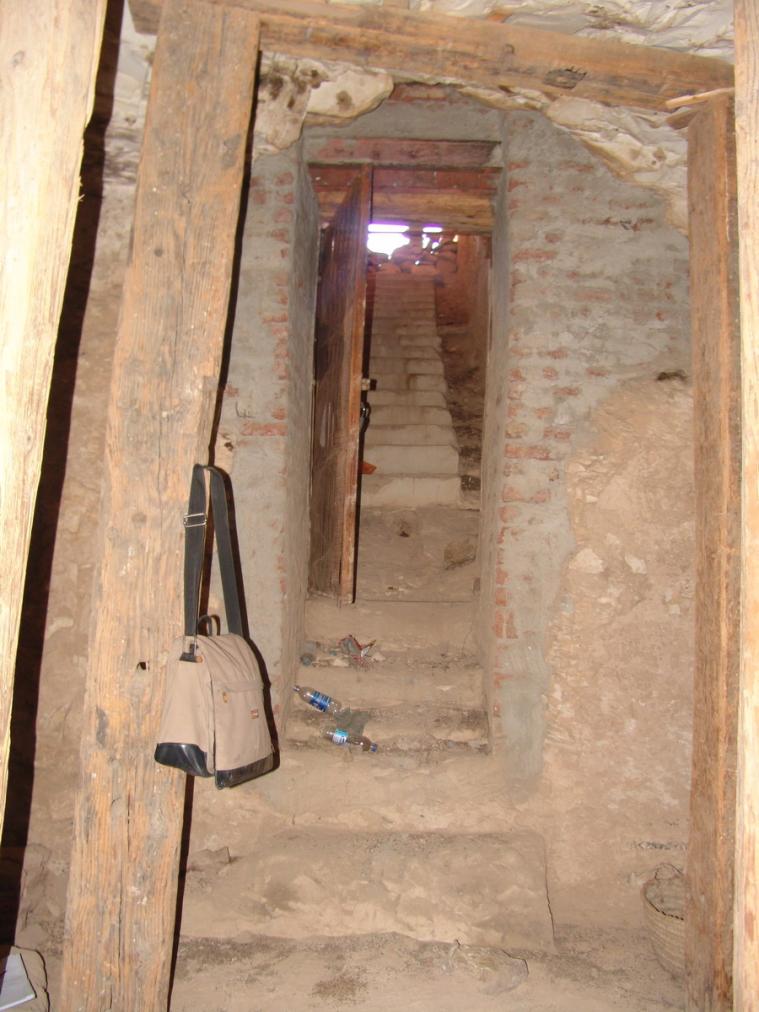
Chamber B
See entire tombThis chamber is orientated east-west and lies perpendicular to the tomb's axis. Two side chambers lie to the east and the west. Five wooden posts and two beams have been installed to support the ceiling as it has three major fractures. A large area of painting survives in the southeast corner where the lower half of the wall appears to have been protected from the fire, perhaps due to the over plastering that occurred during the later reuse of the tomb.
Only fragmentary remains of the decoration survive in this chamber. This includes a scene on the southern wall of Isis adoring the western mountain with two baboons adoring the sun, columns of text on the eastern wall, and remains of text and an unidentifiable ibis-headed deity on the western wall.
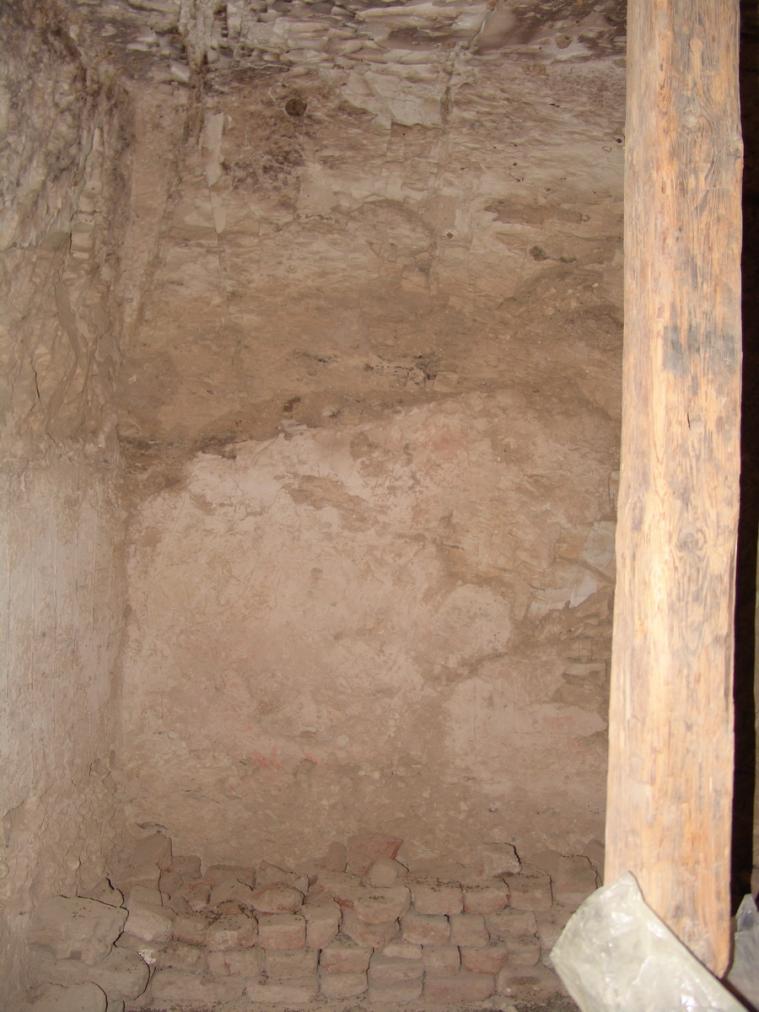
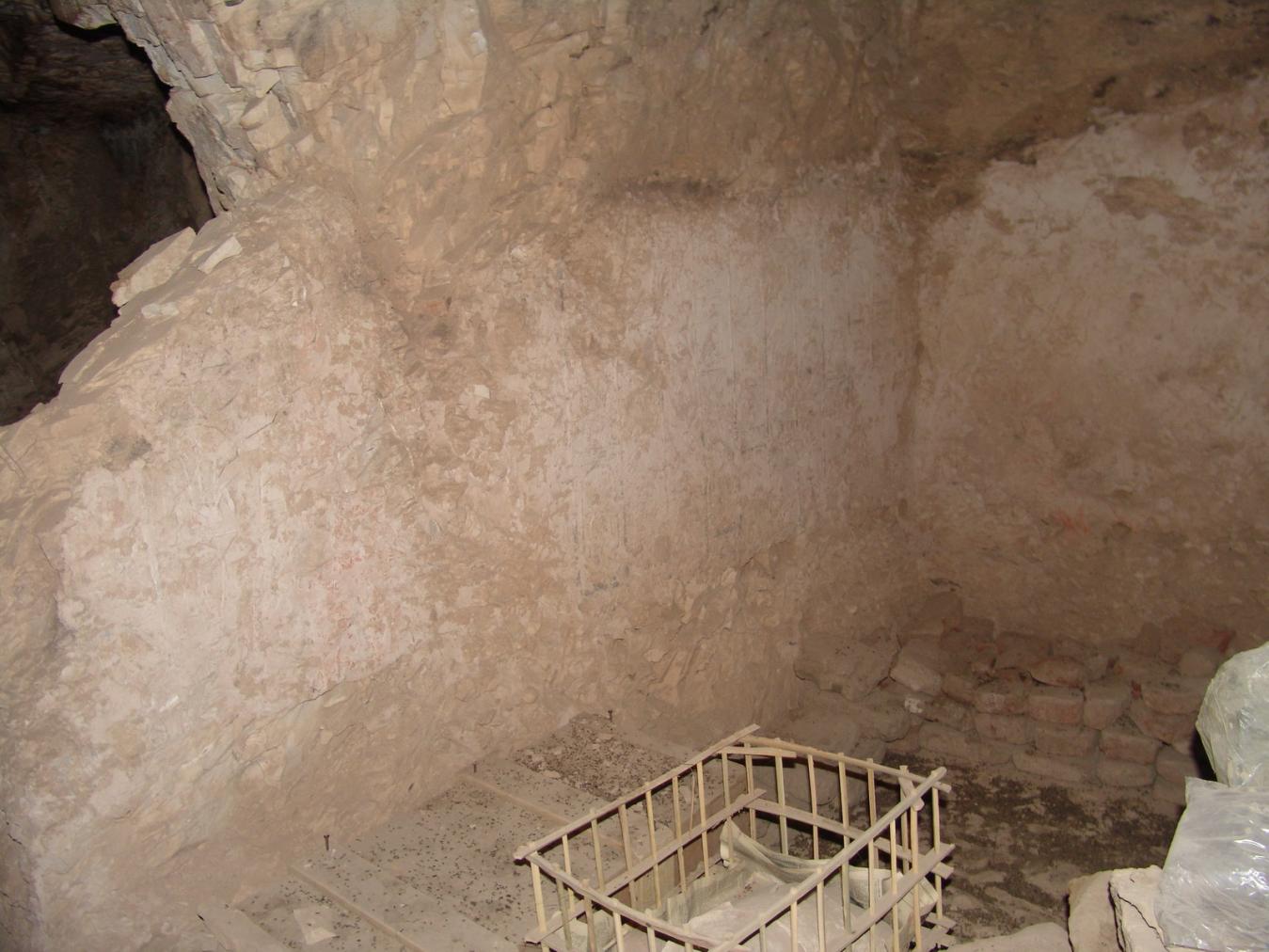
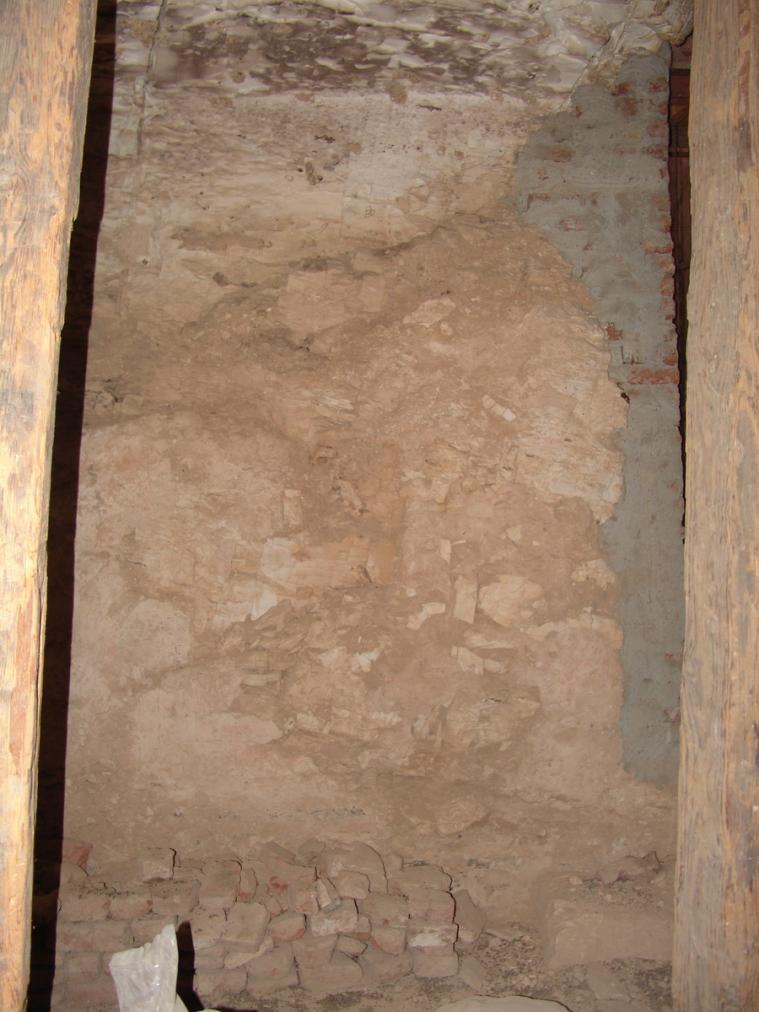
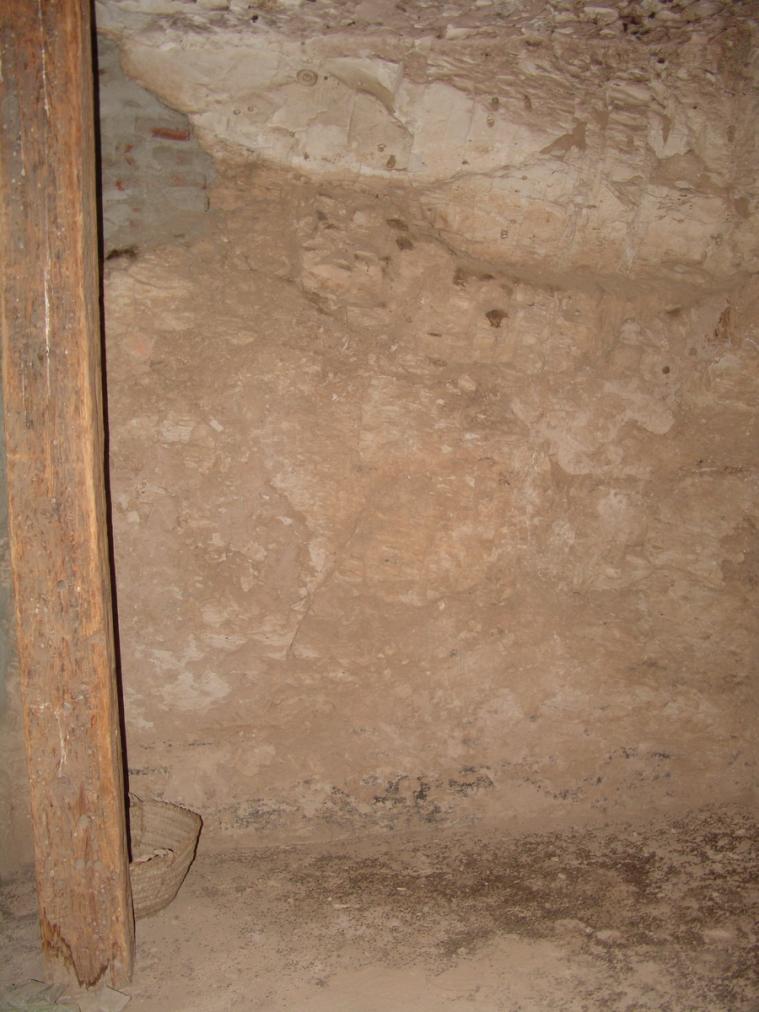
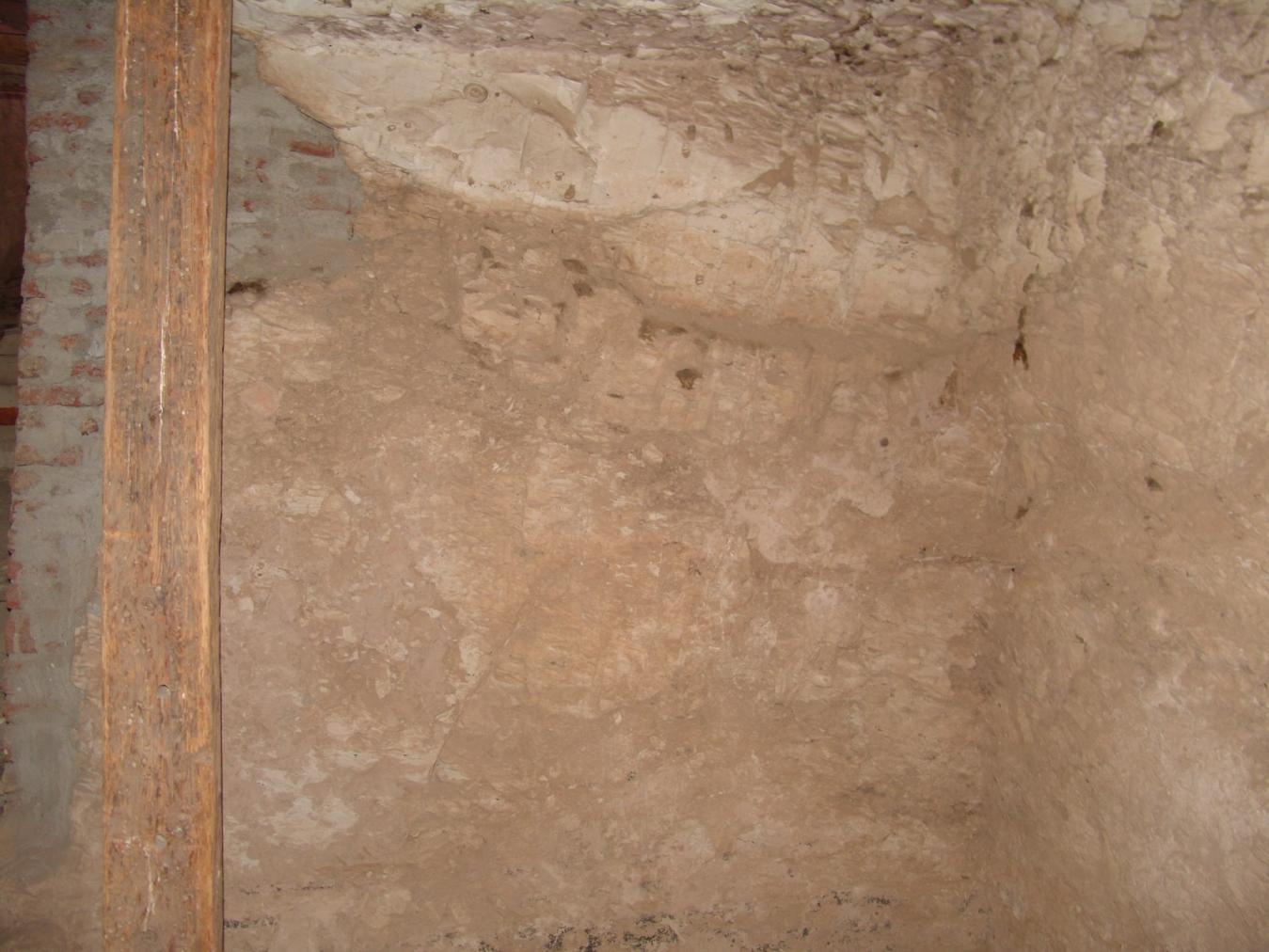
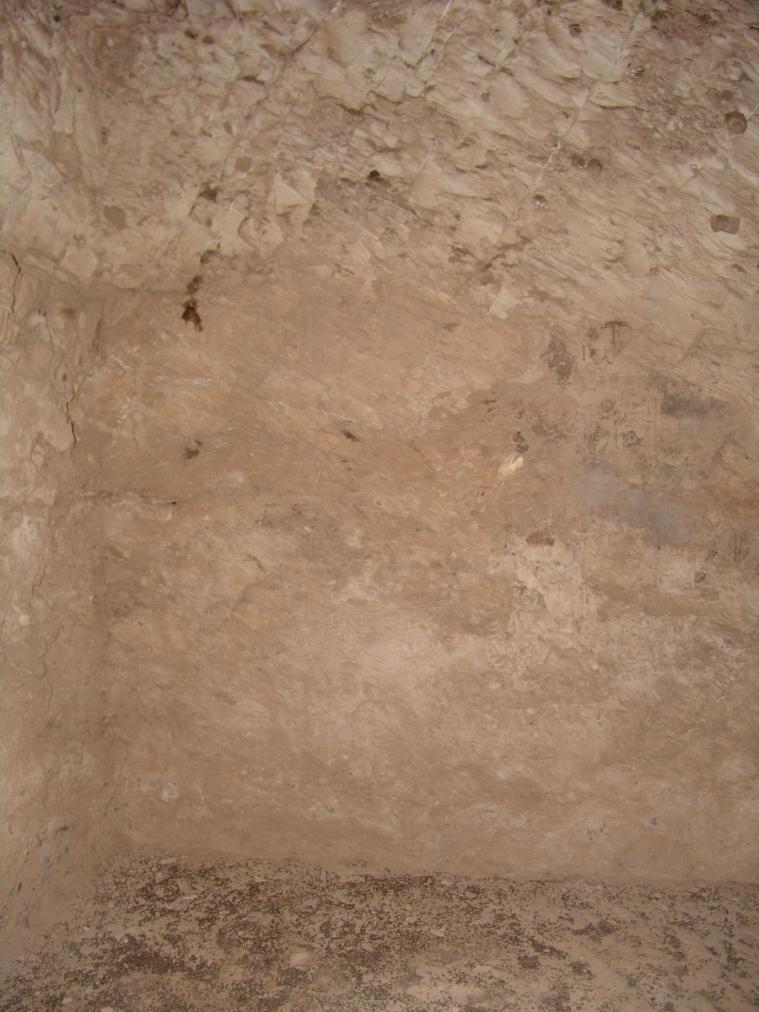
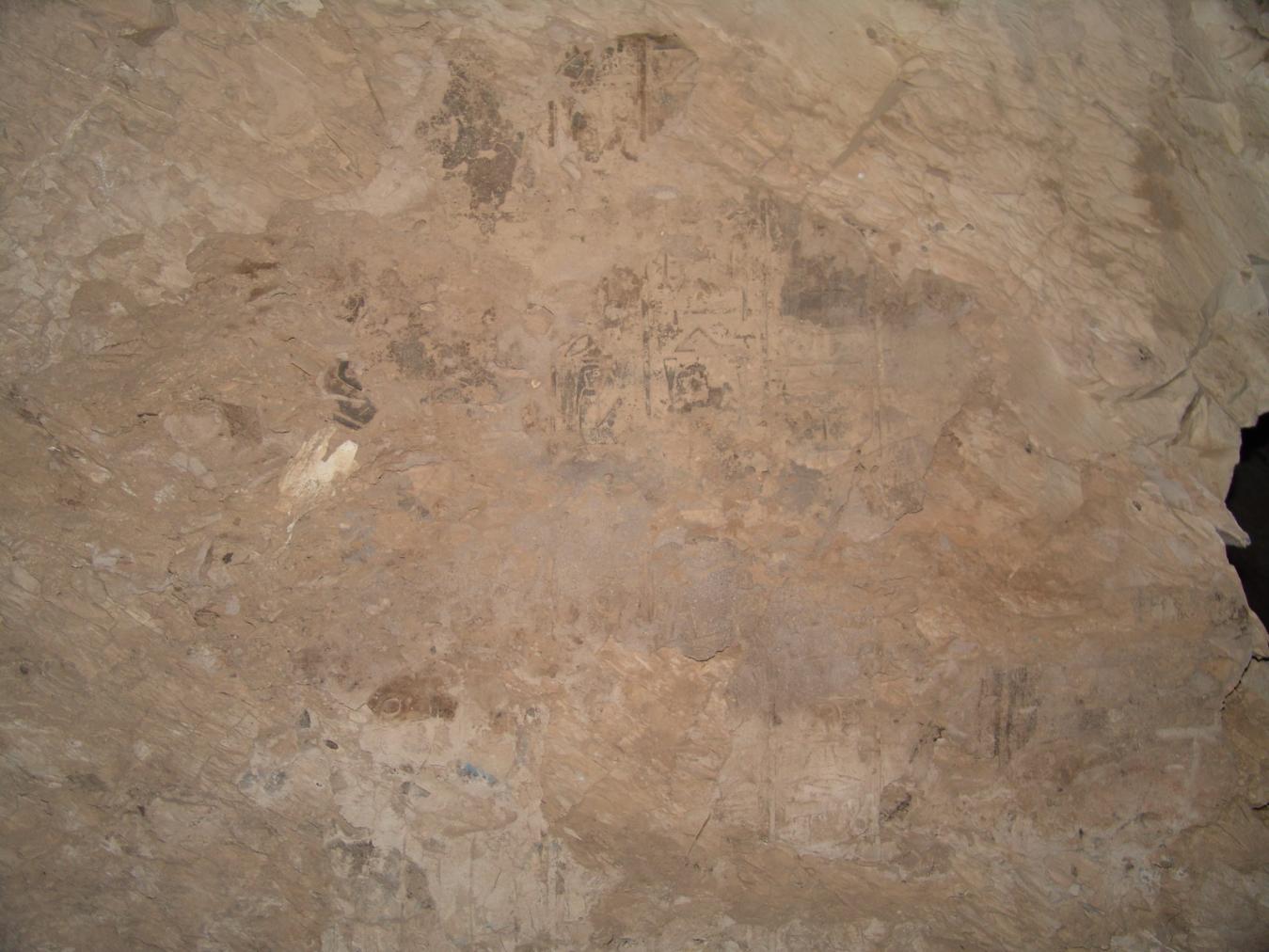
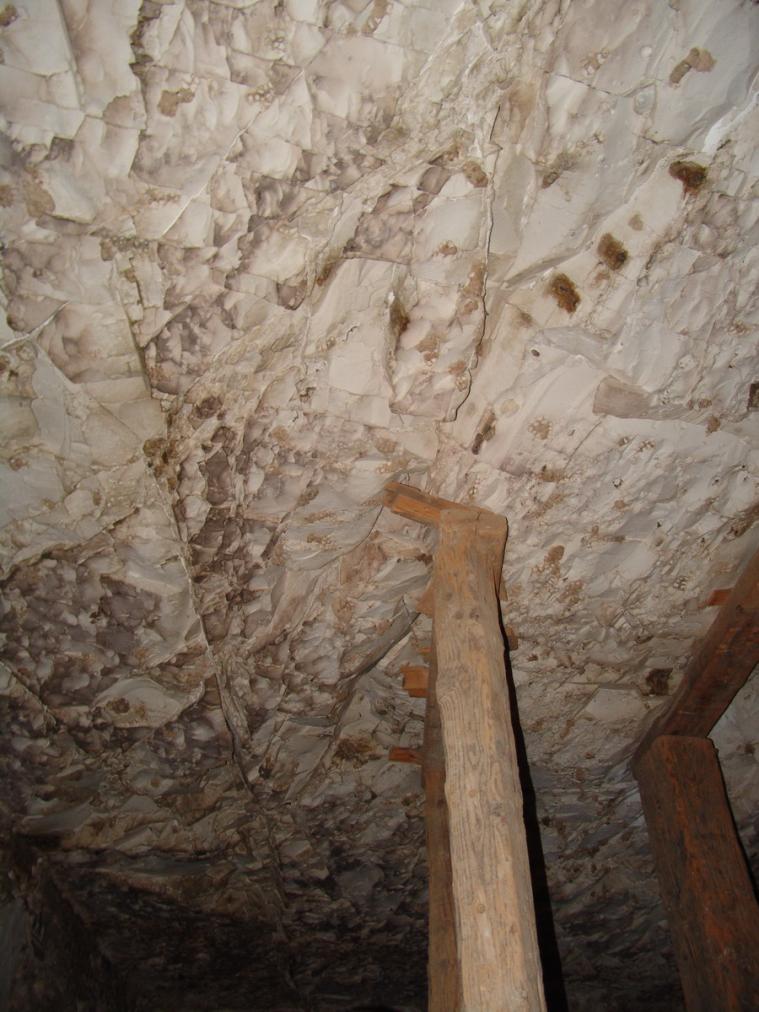
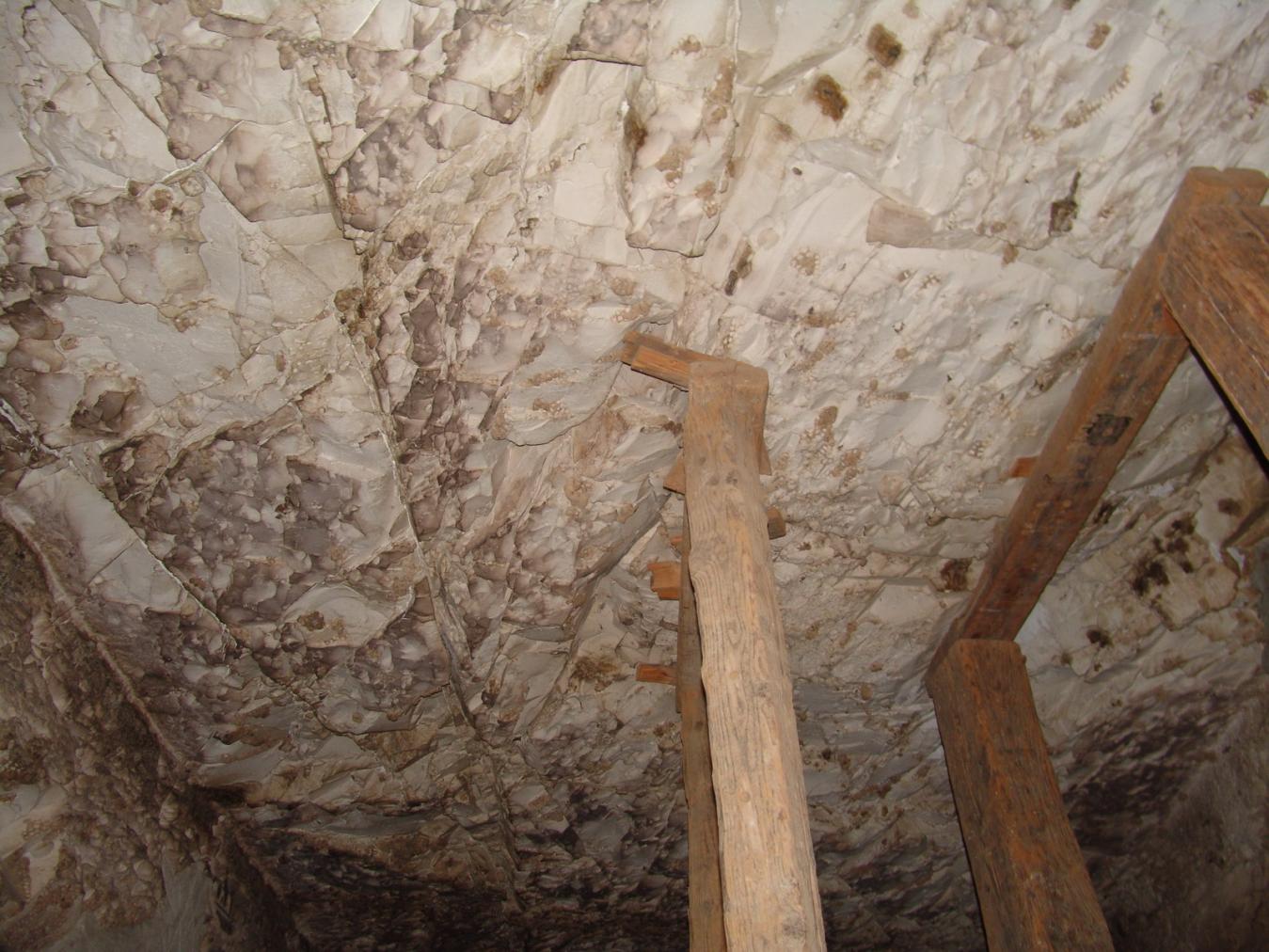
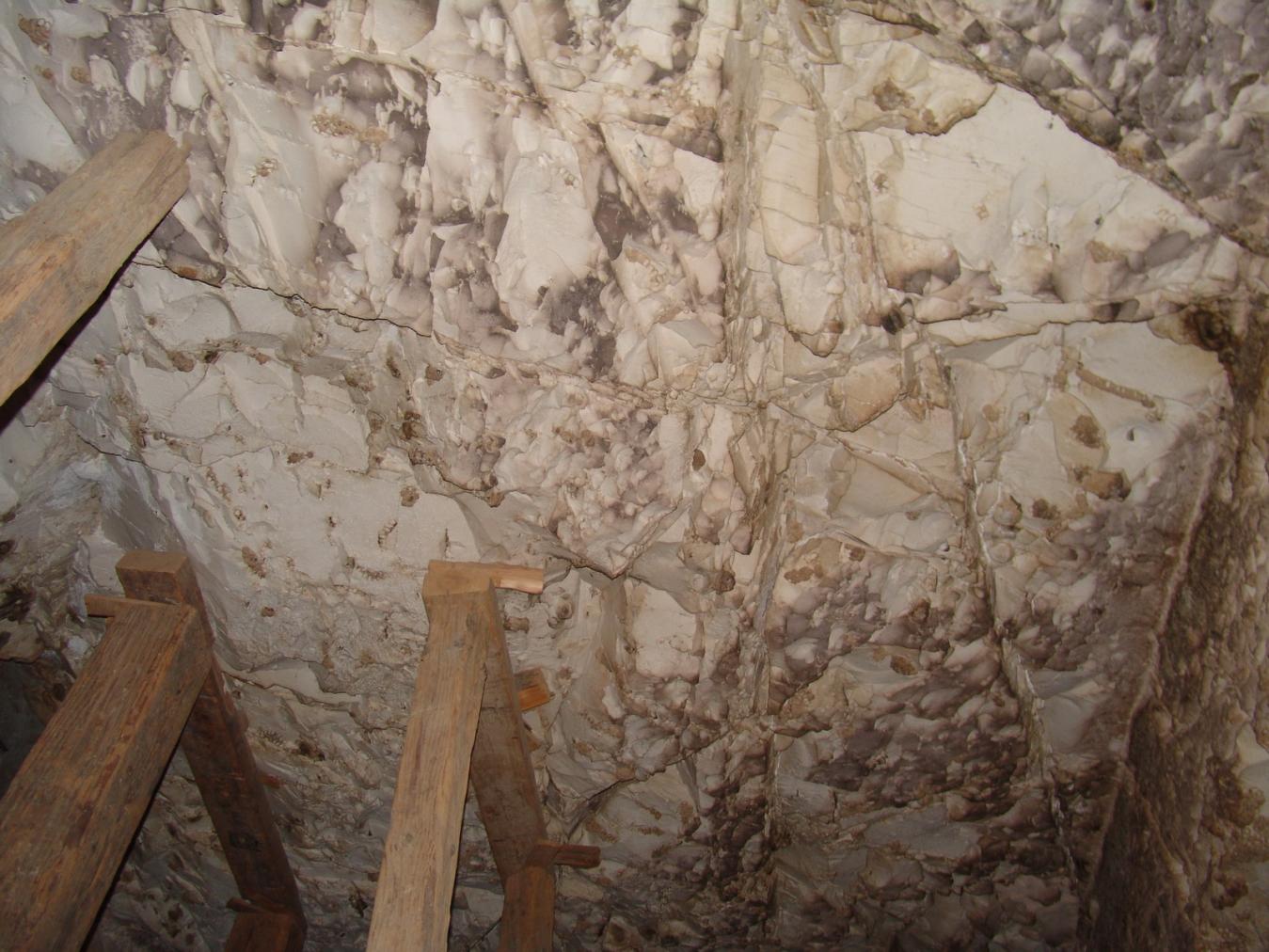
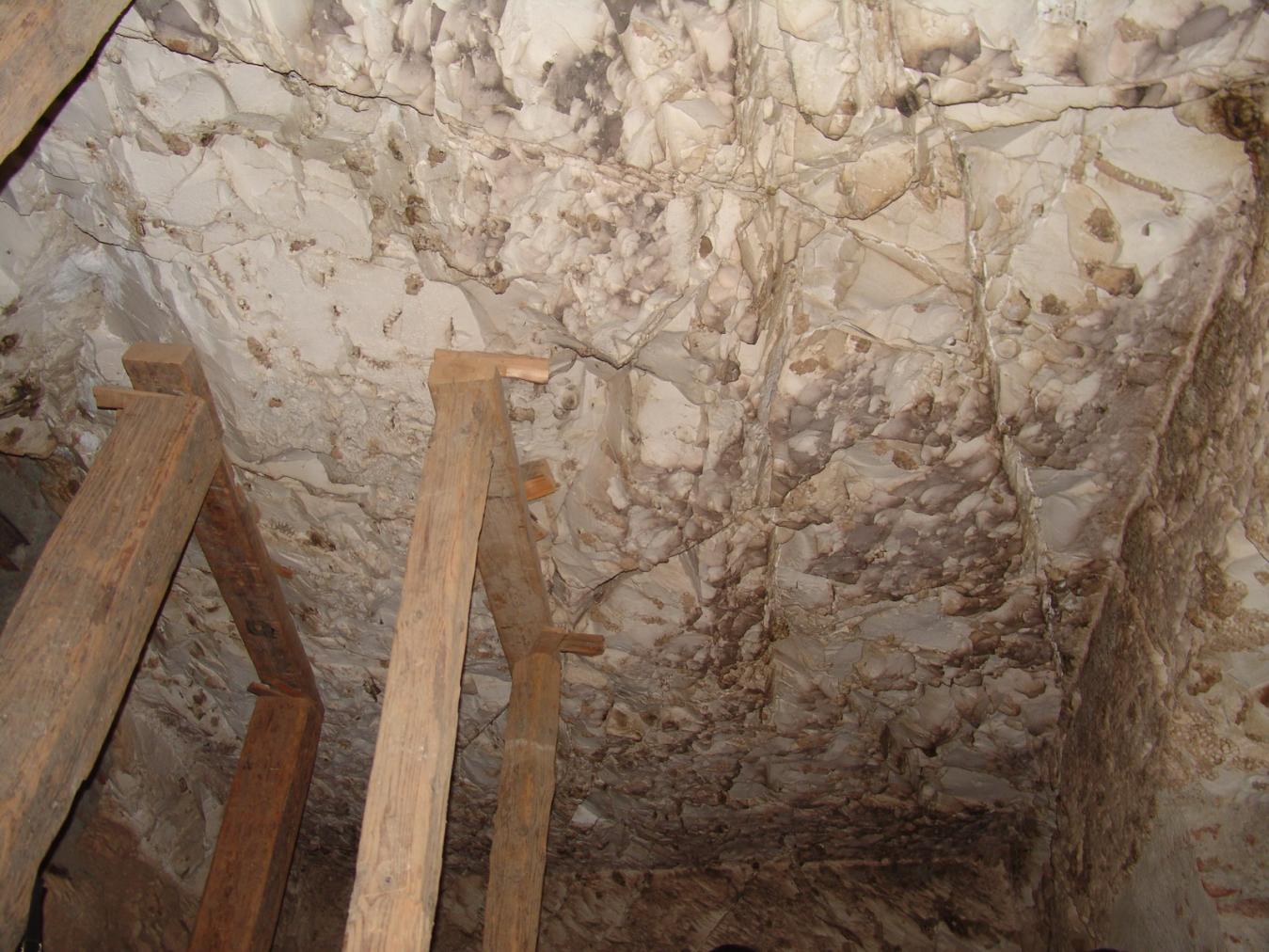
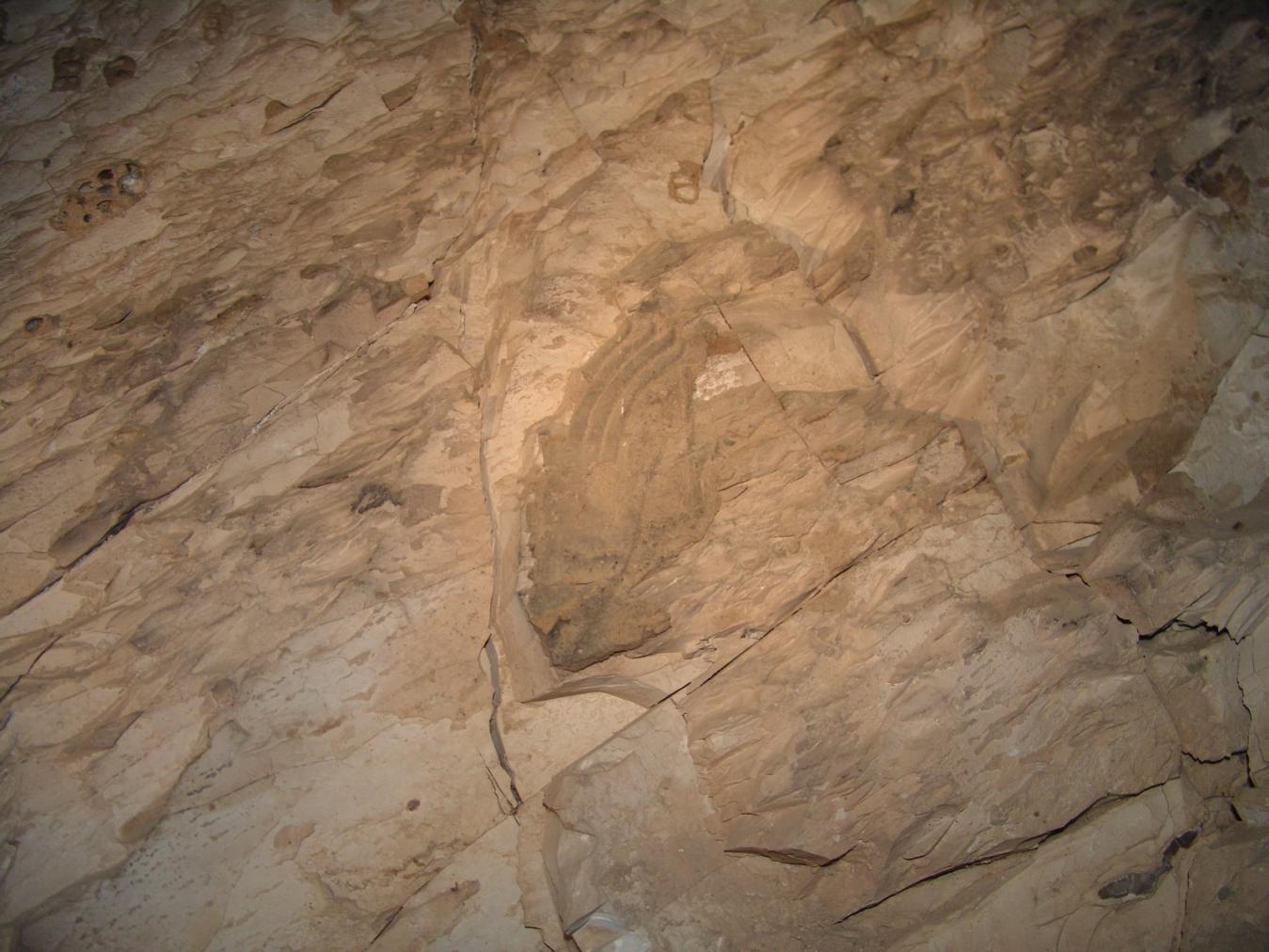
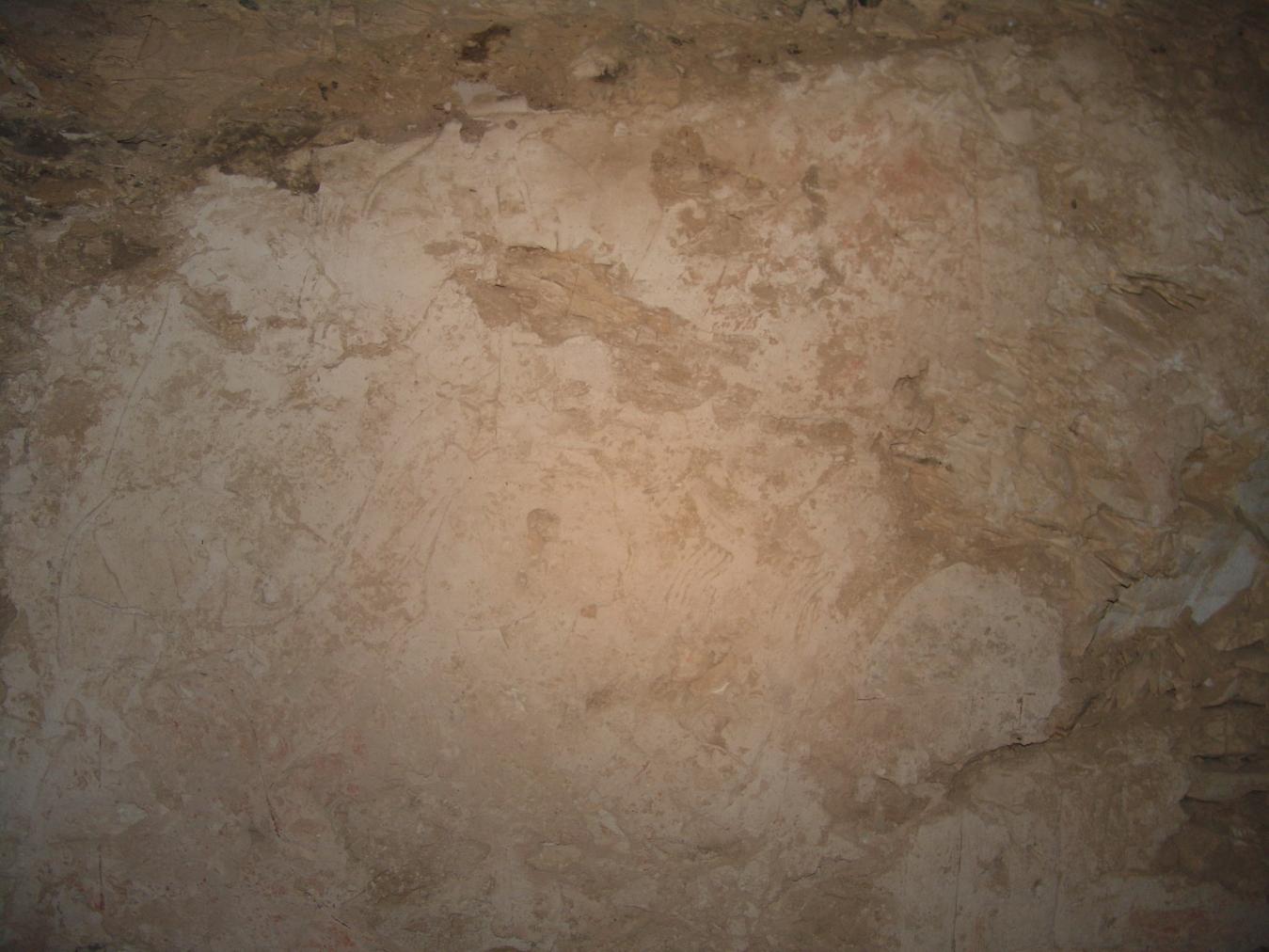
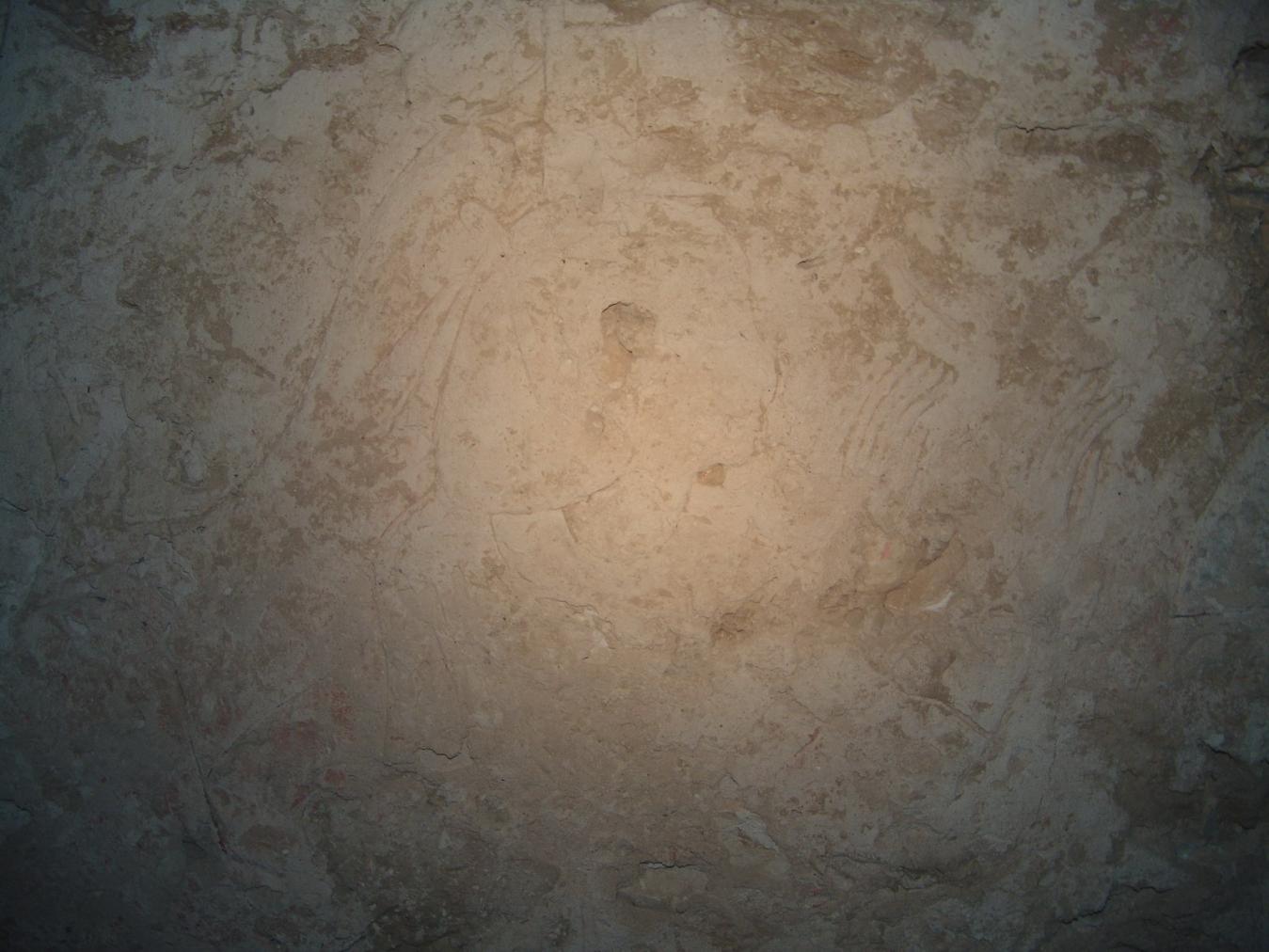
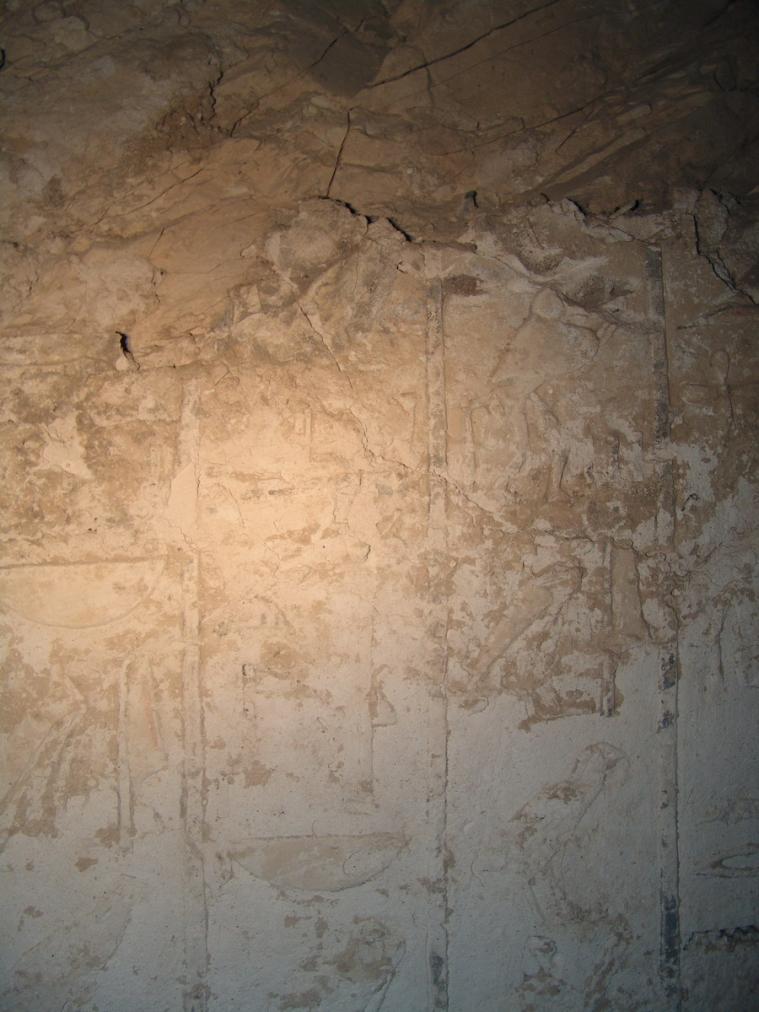
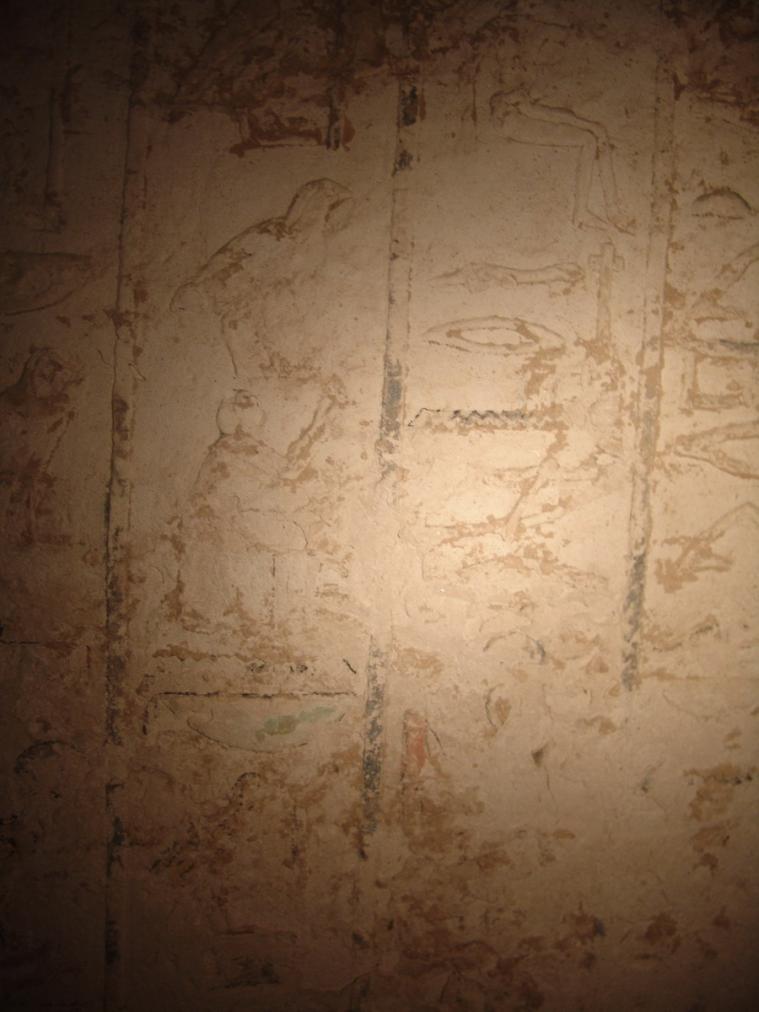
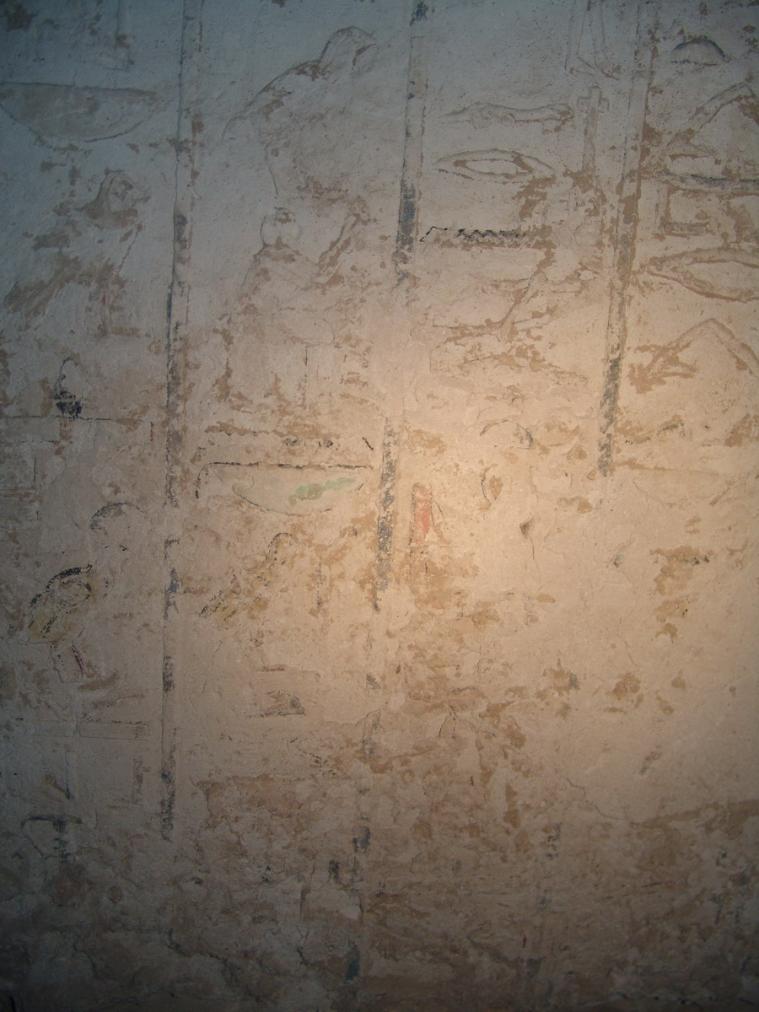
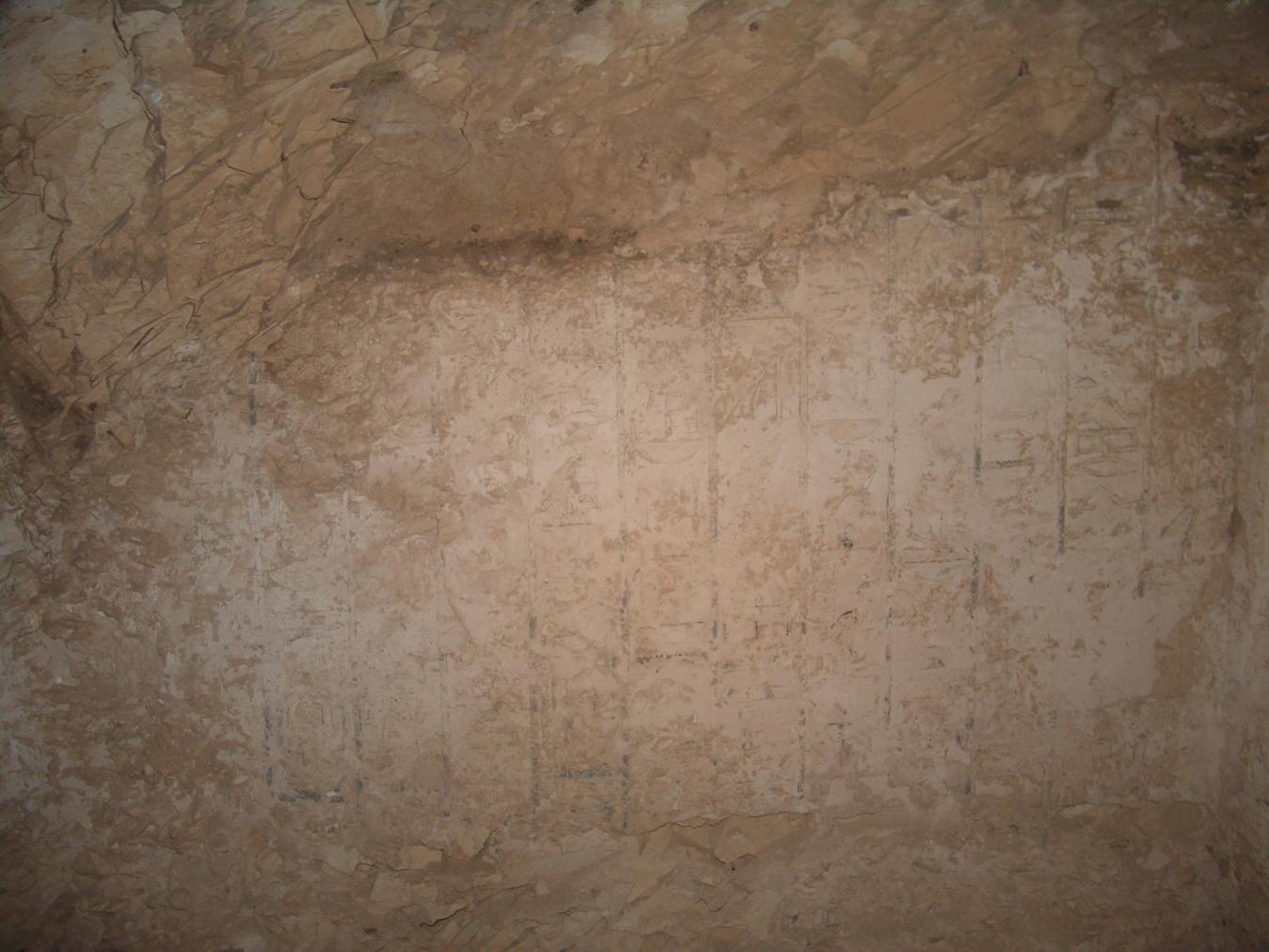
Gate Ba
See entire tombThis gate is cut into the western wall of chamber B and provides access to a side chamber. There is substantial loss of rock in the doorway and there are no traces of plaster or decoration.
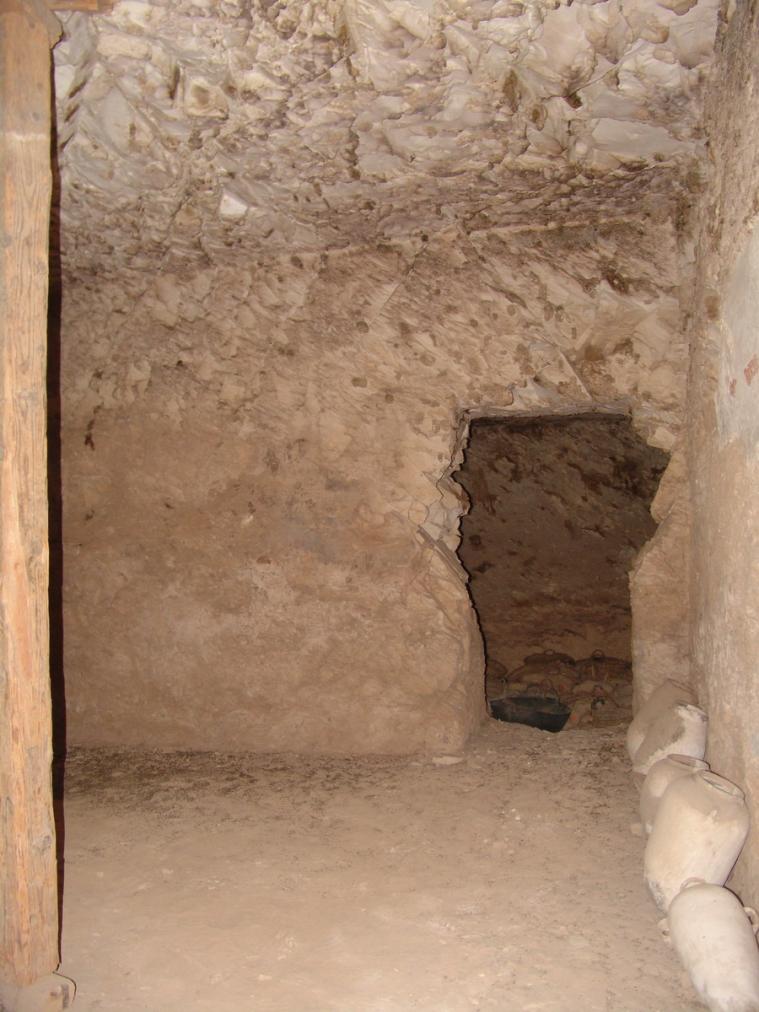
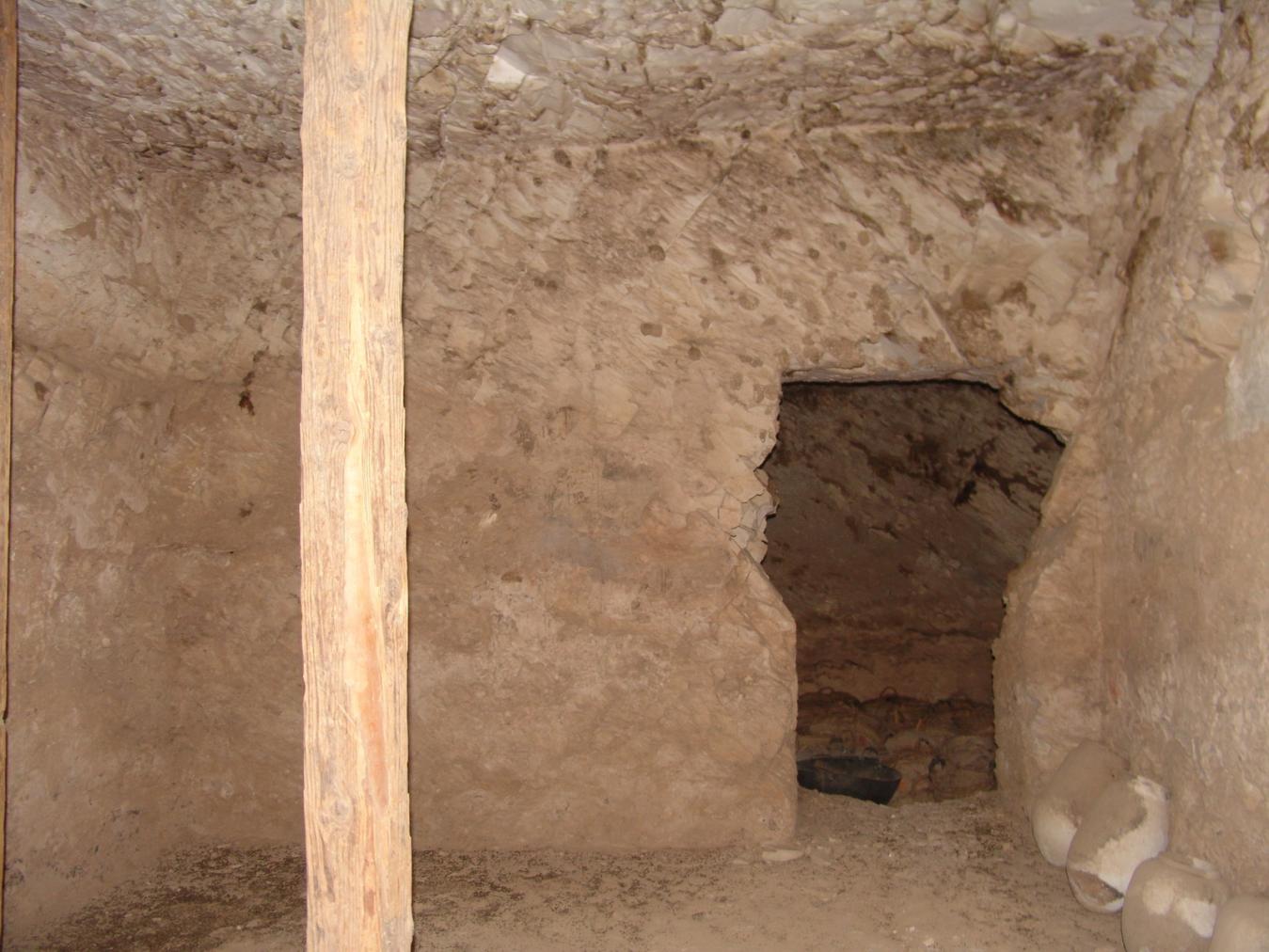
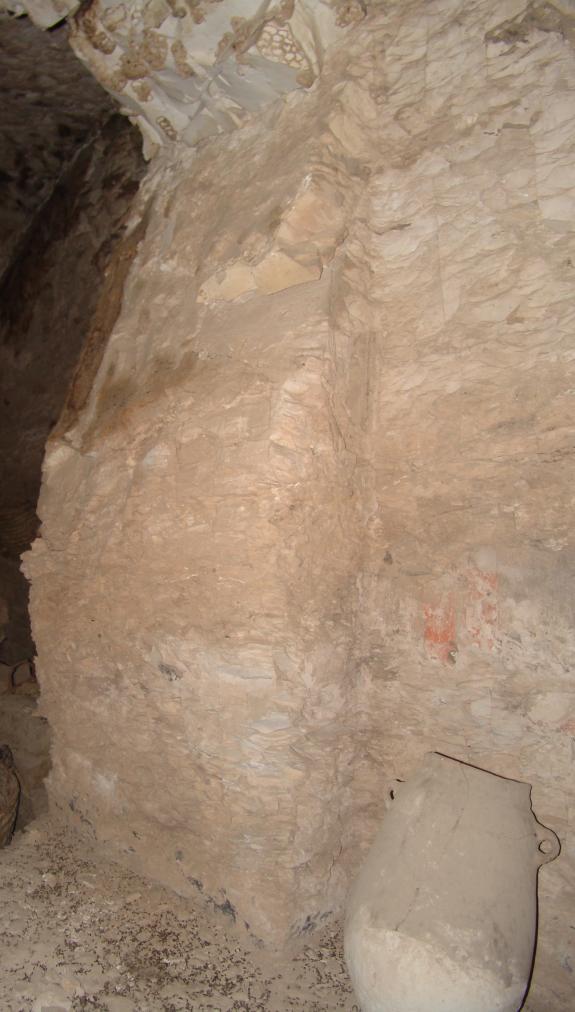
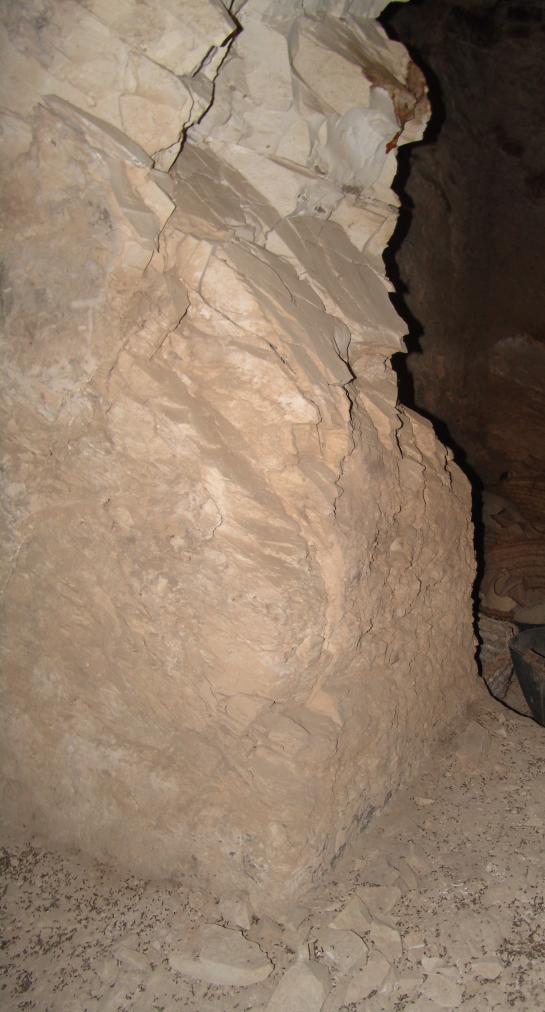
Side chamber Ba
See entire tombThis side chamber lies to the west of chamber B. Fracturing is present in the ceiling of this chamber and it has very fragmentary surviving decoration on the walls consisting mainly of plaster.
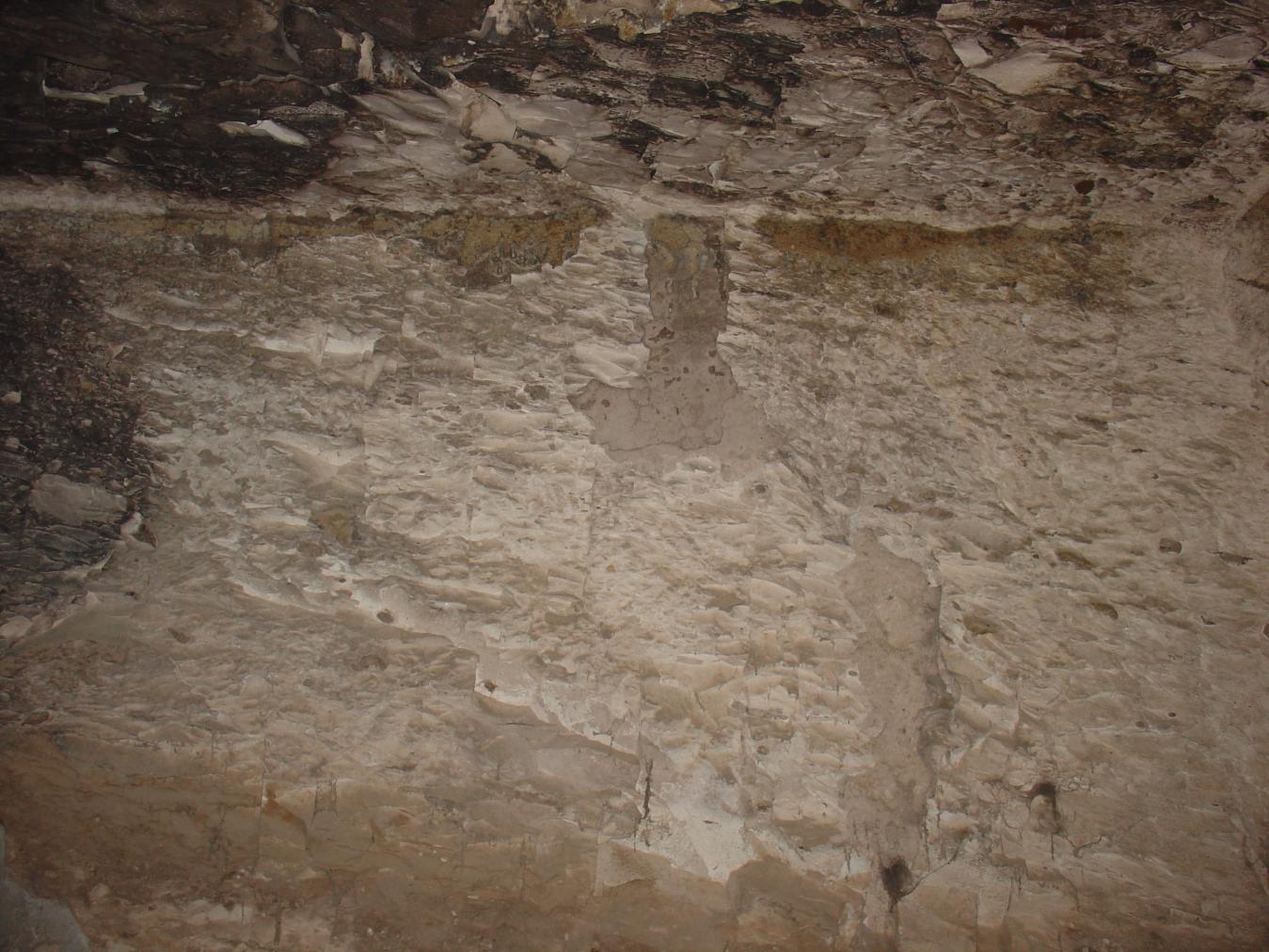
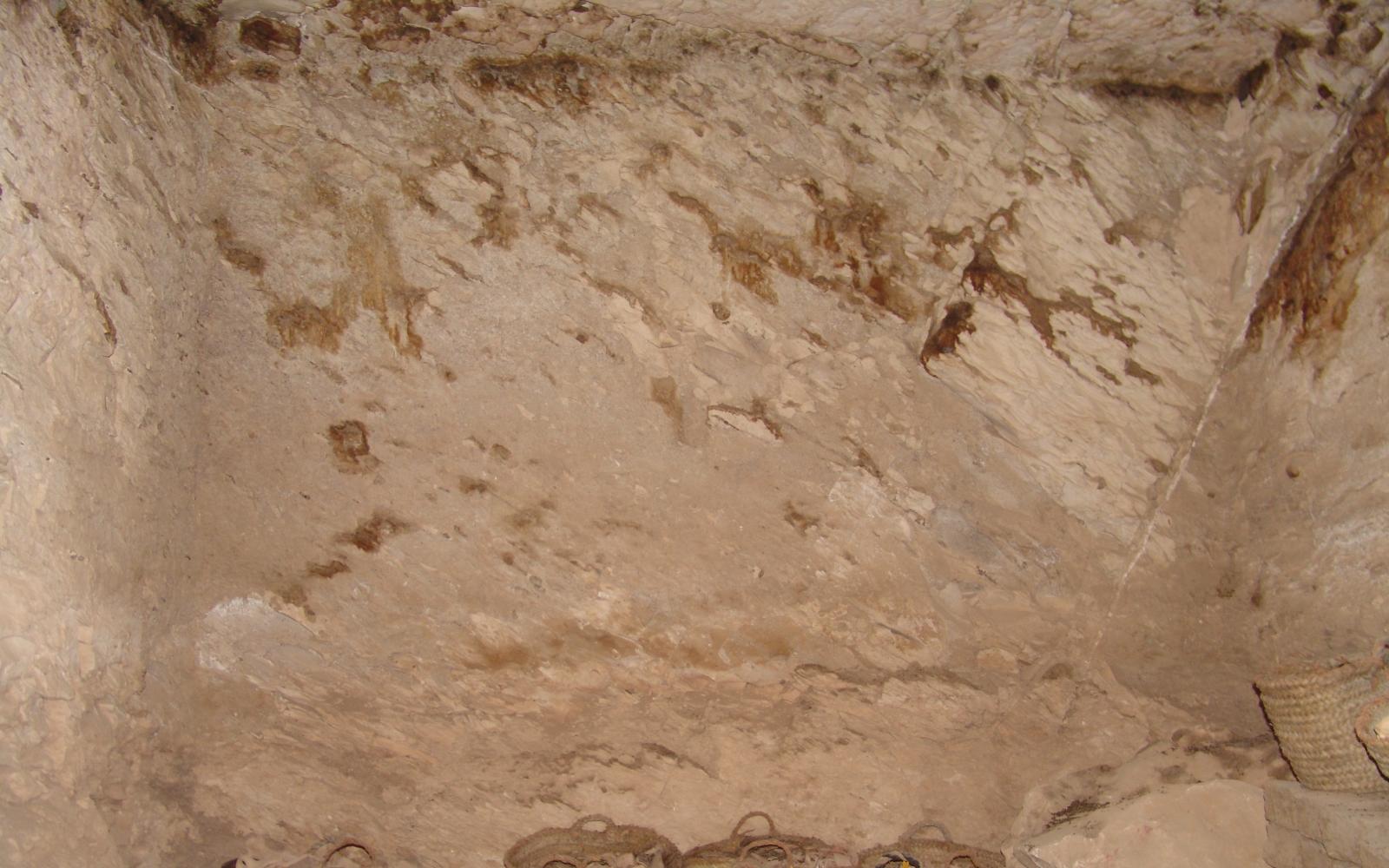
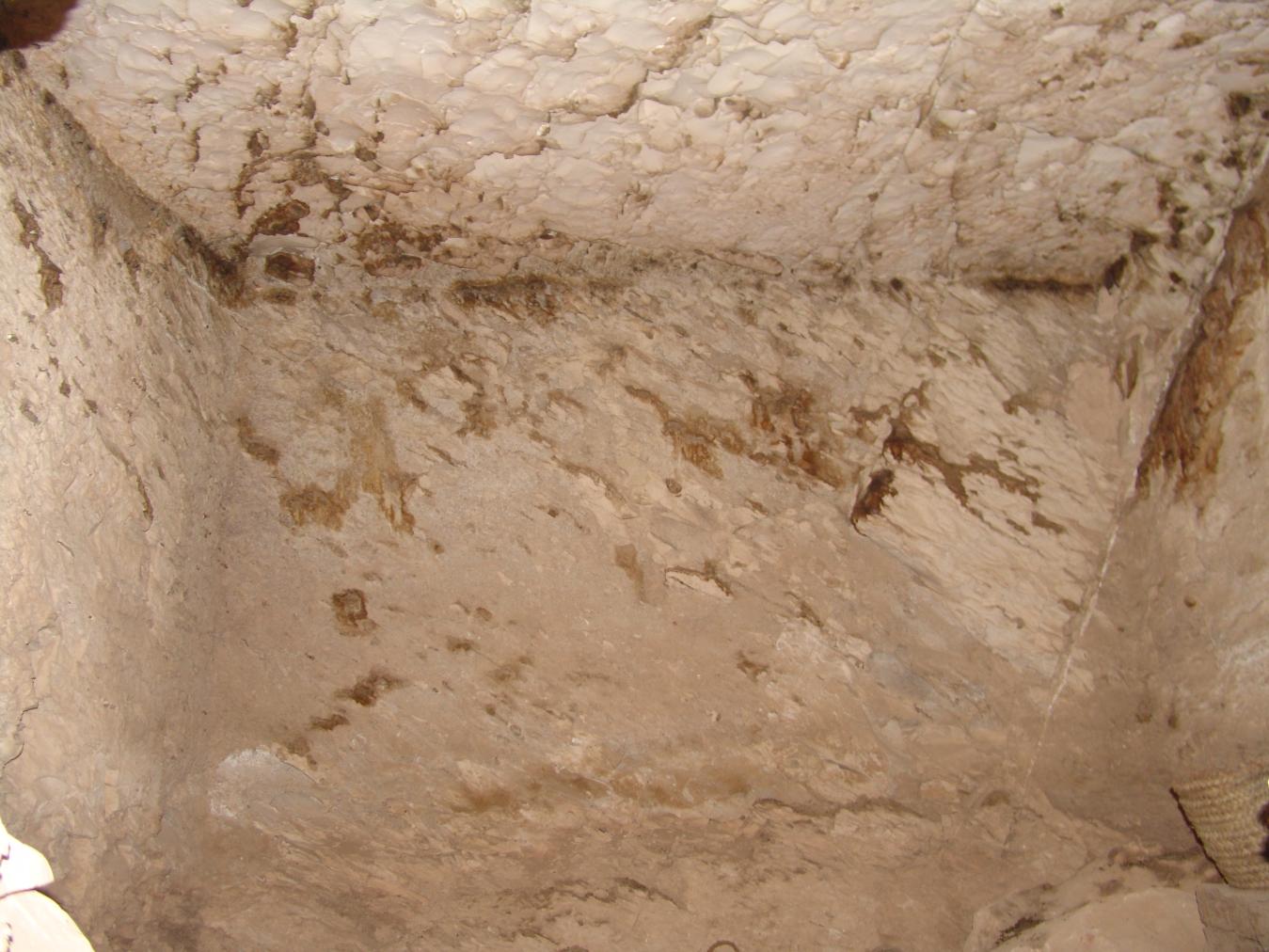
Gate Bb
See entire tombThis gate is cut into the eastern wall of chamber B and provides access to a side chamber. There is substantial loss of rock in the doorway and only fragmentary, unidentifiable remains of decoration survive on the left thickness.
Side chamber Bb
See entire tombThis side chamber lies to the east of chamber B. As with side chamber Ba, there is fracturing present in the ceiling. The decoration of this chamber, however, is in a better state of preservation and includes depictions of the Queen as a sphinx, the queen adoring a ram-headed Anubis, columns of text, and a deity that is most probably Osiris.
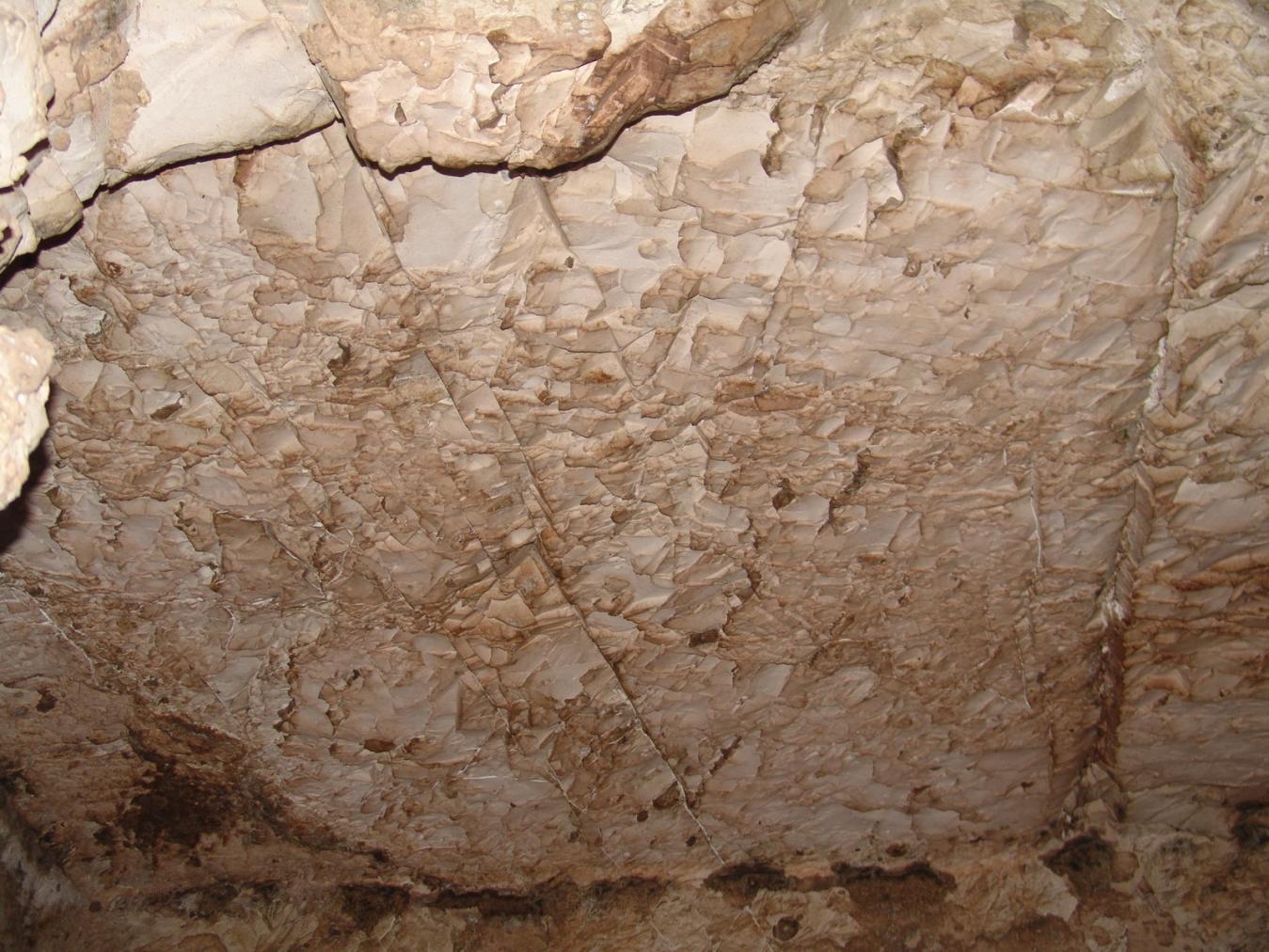
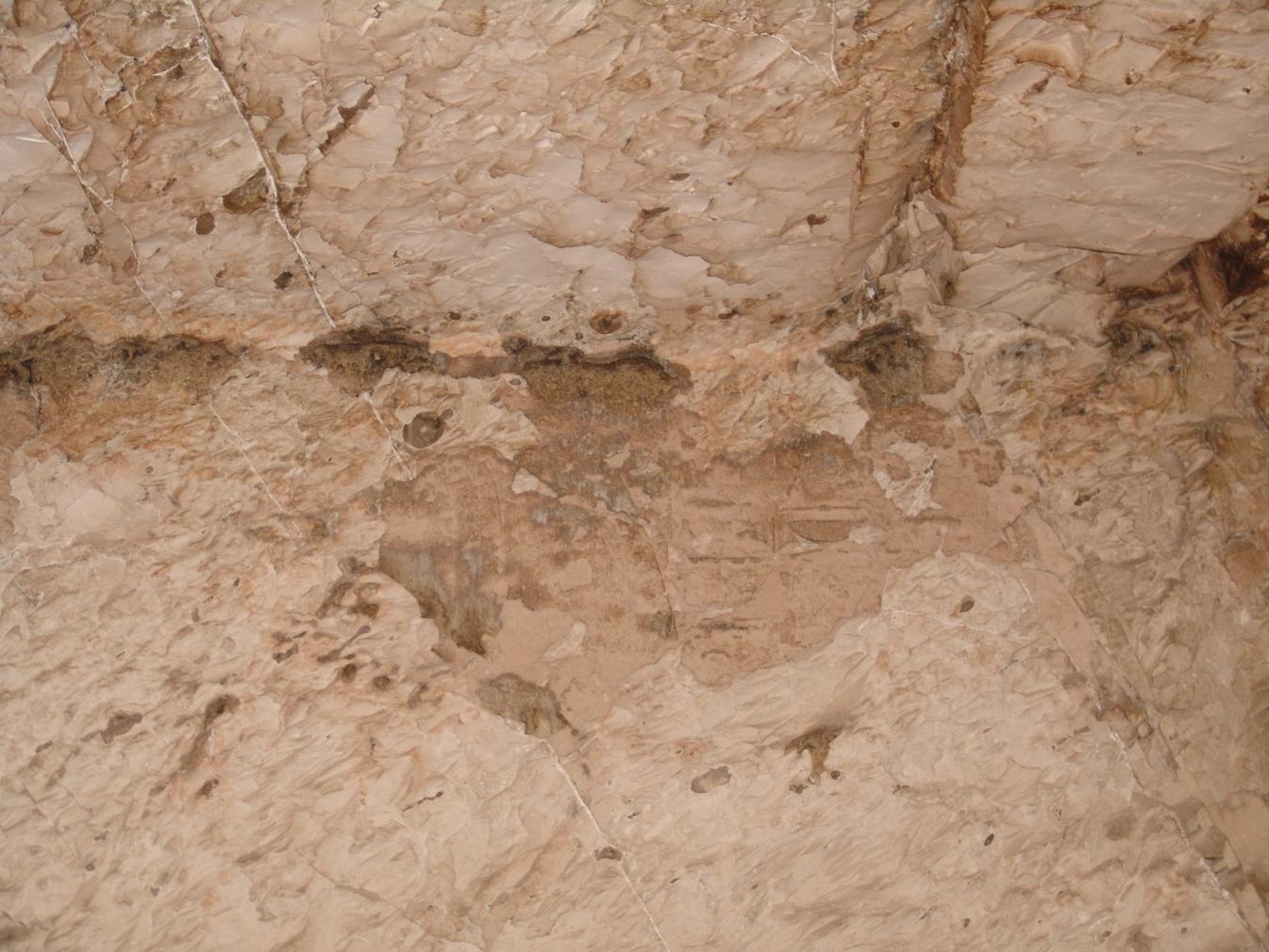
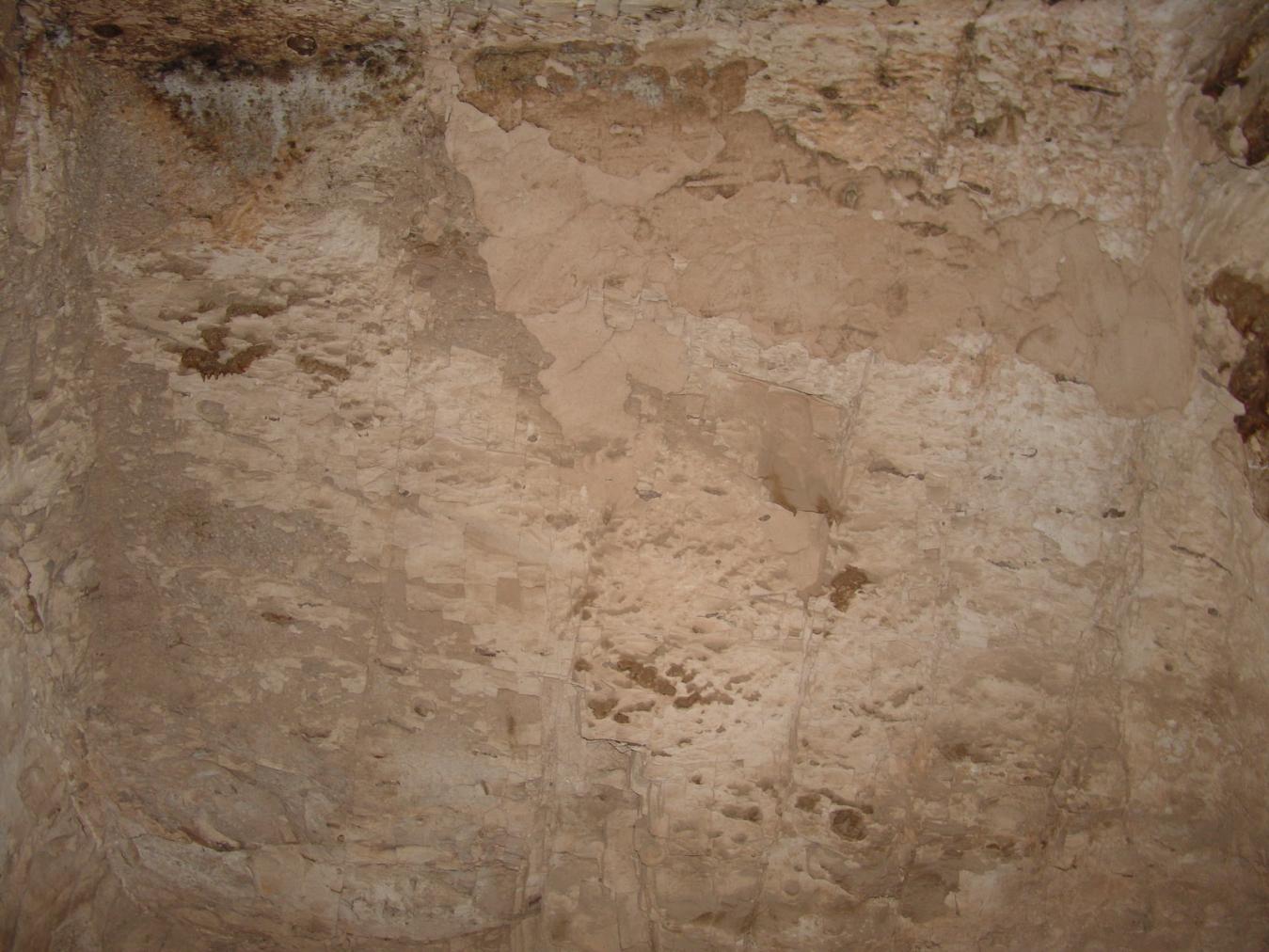
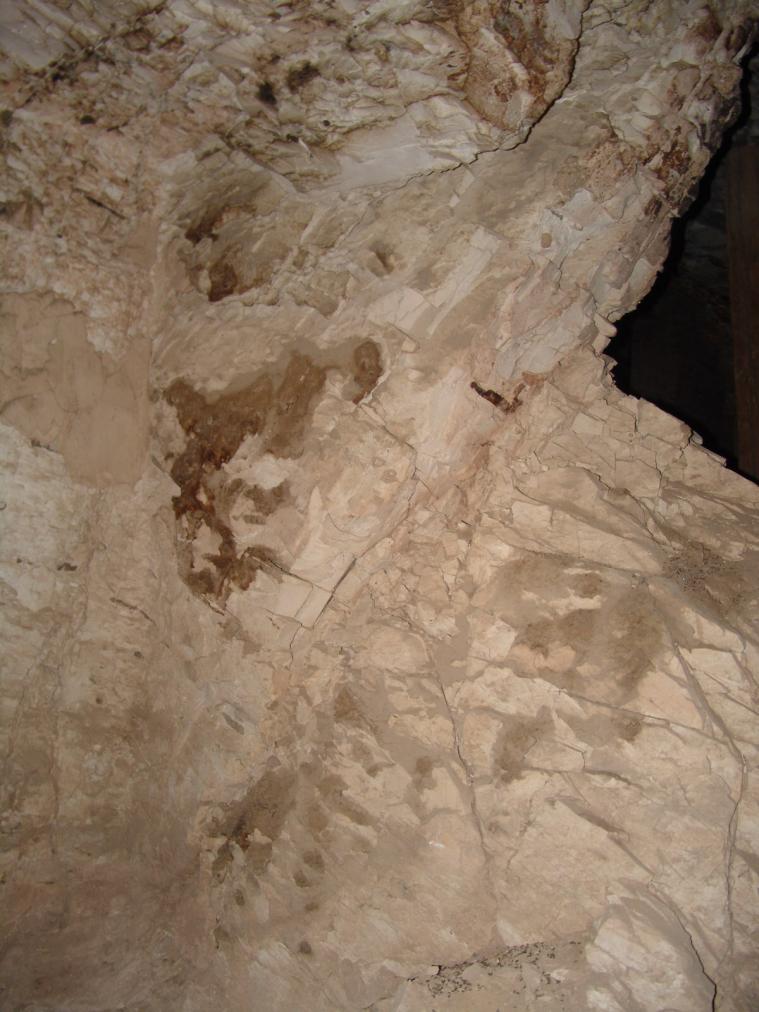
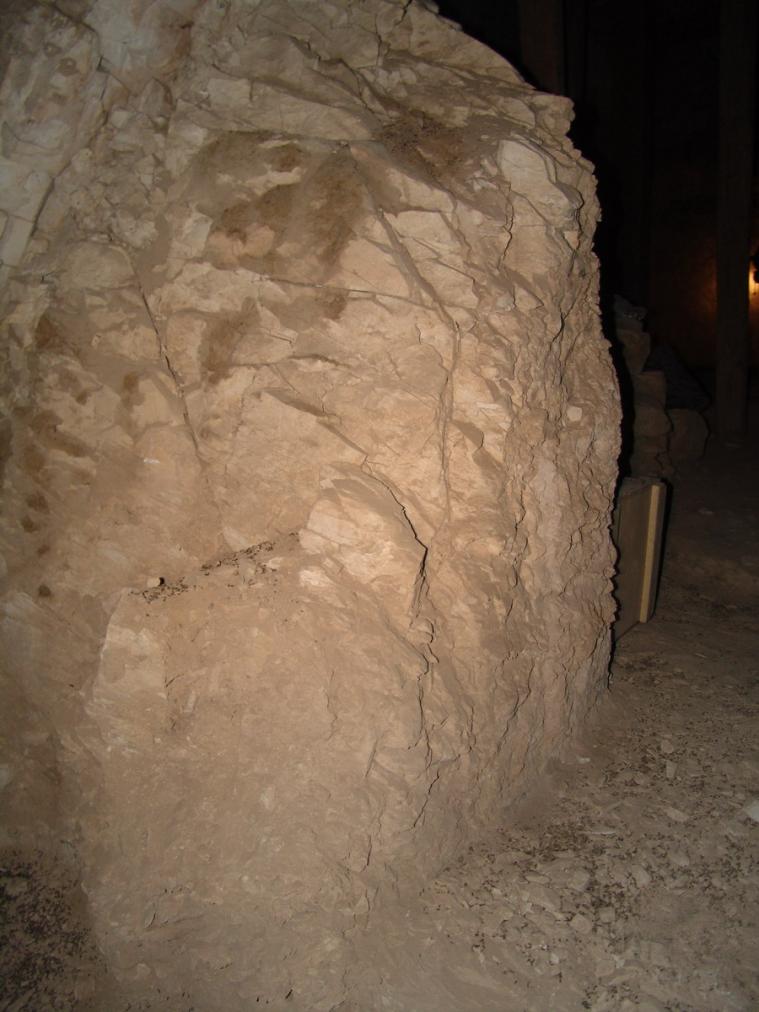
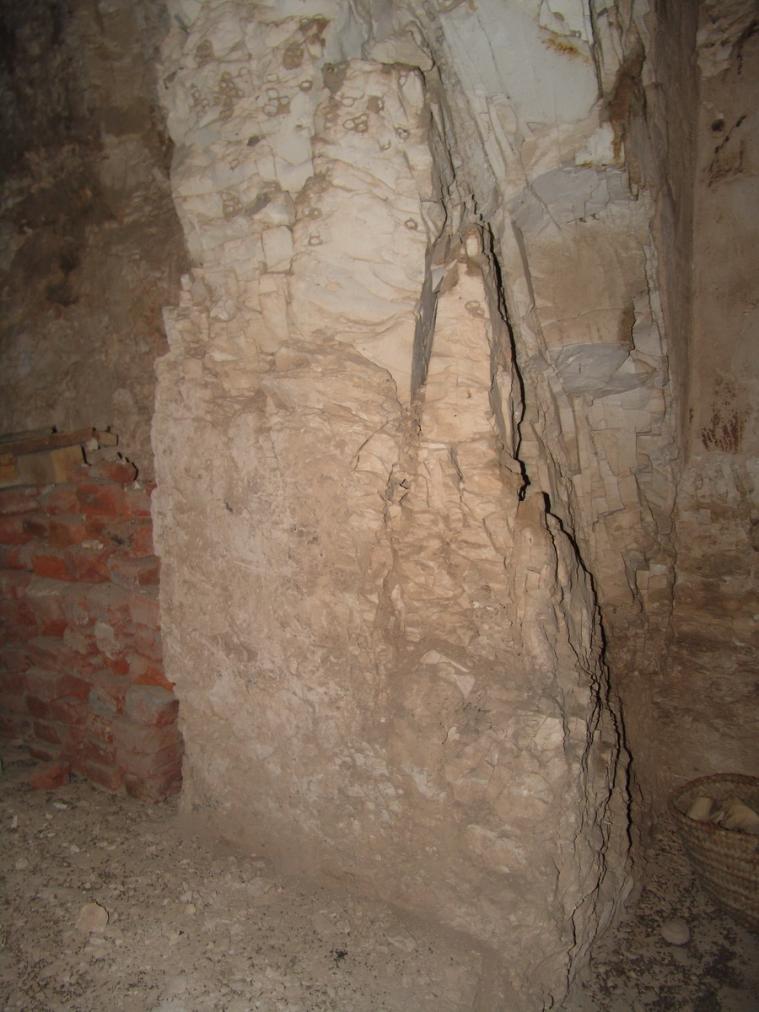
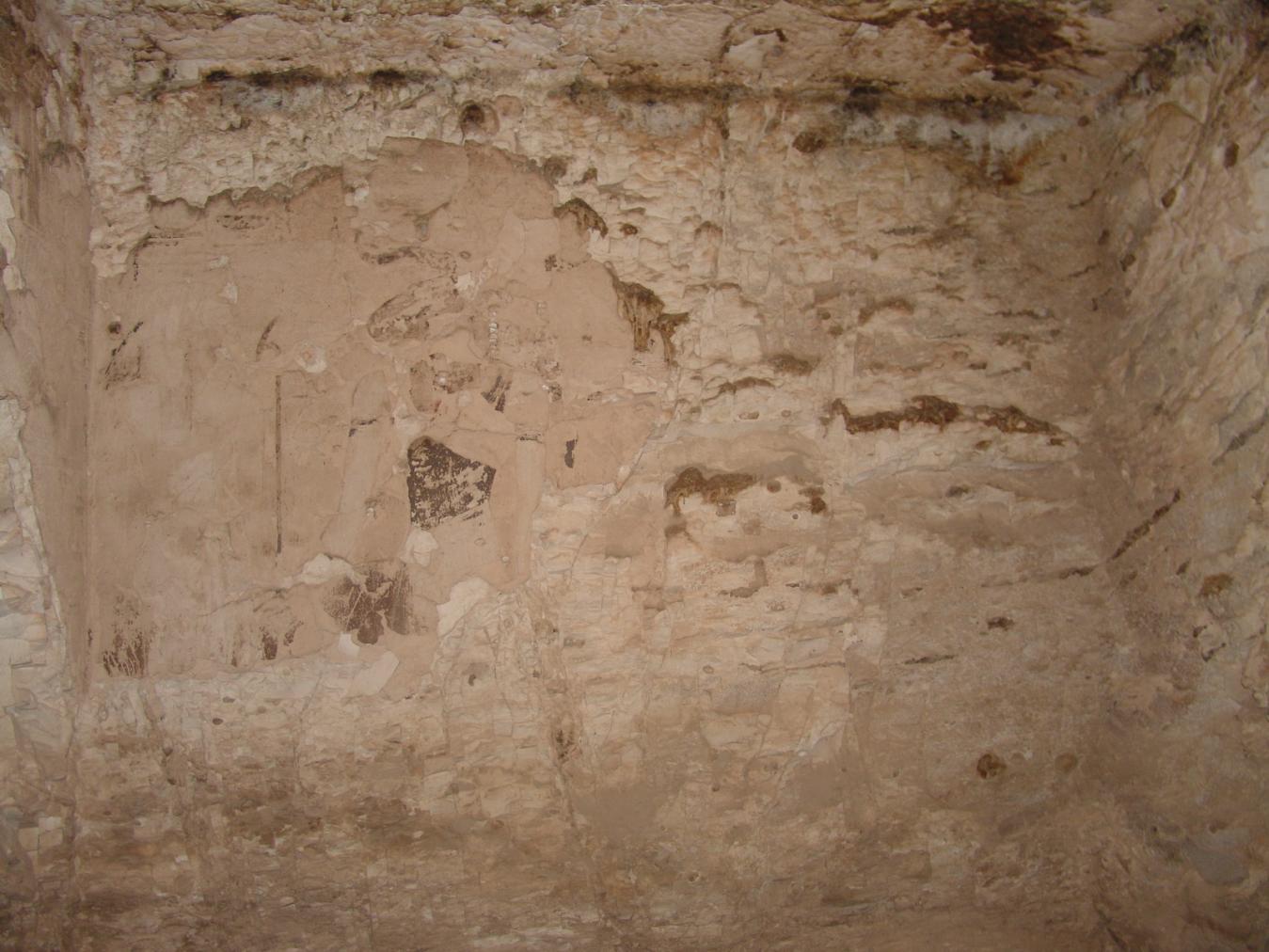
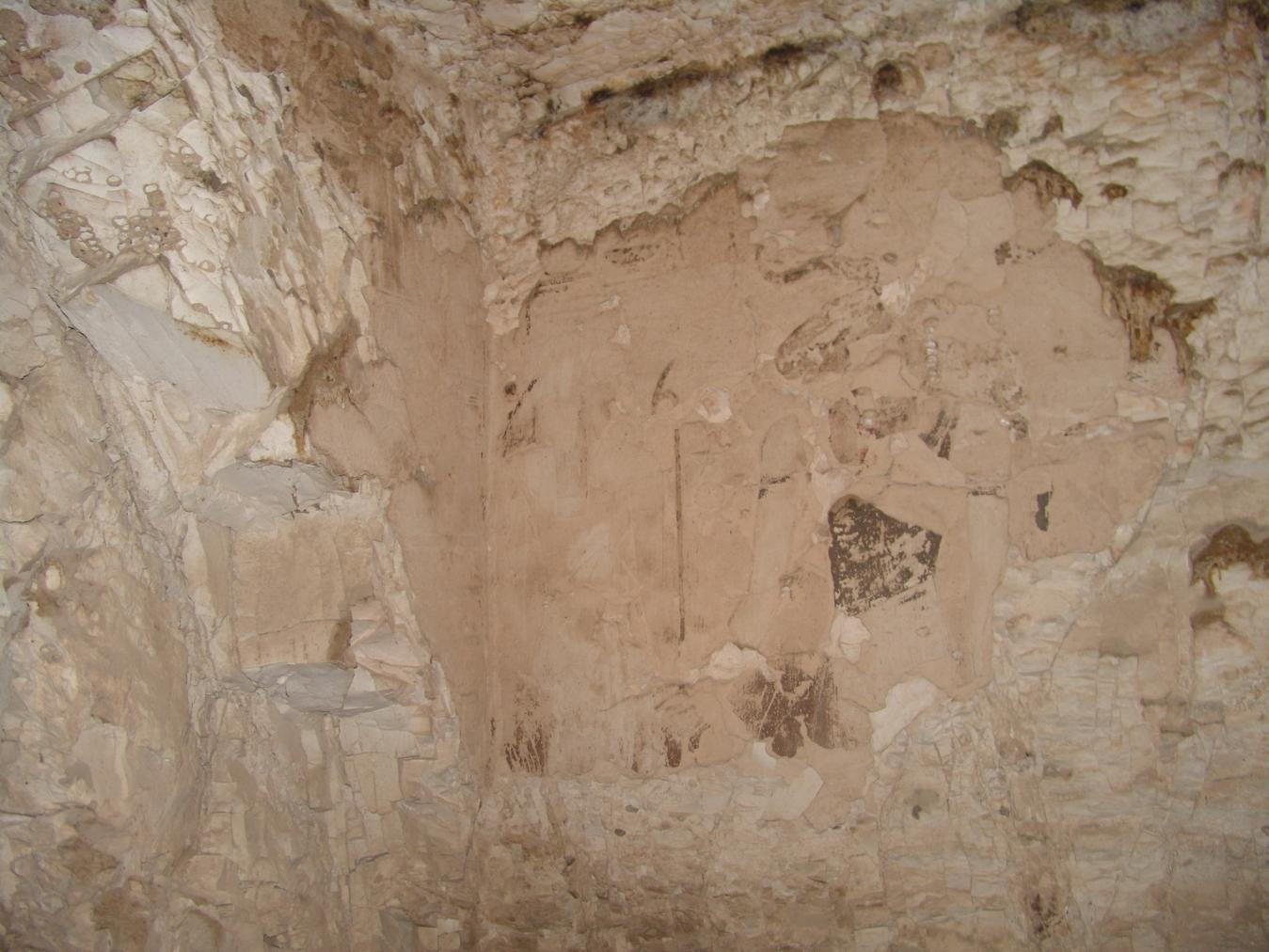
Gate C
See entire tombThis gate lies on axis with the tomb's entrance and provides access to a stairwell. The gate has been reconstructed and there are no remaining traces of decoration.
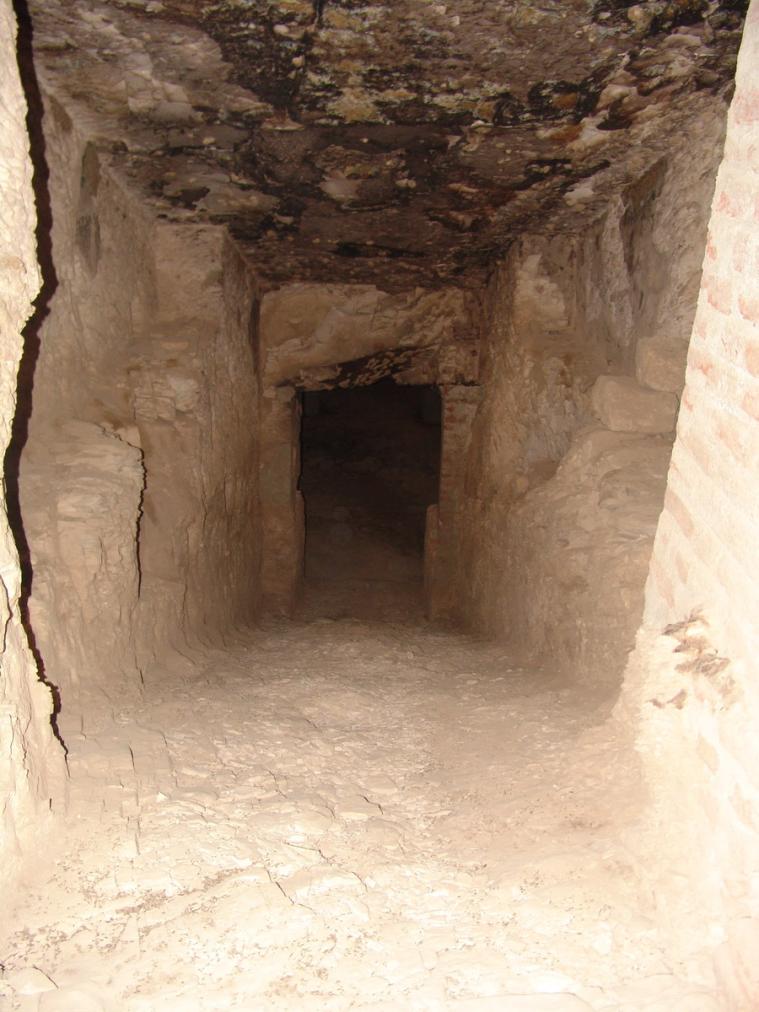
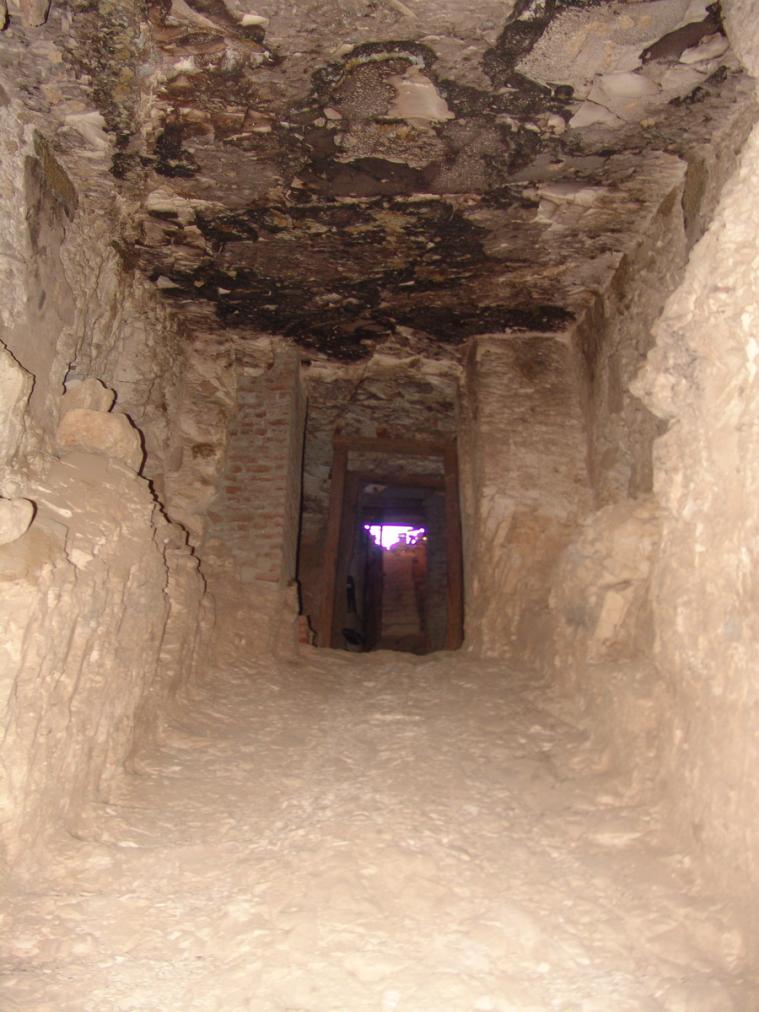
Stairwell C
See entire tombThis stairwell lies on axis with the tomb's entrance and consists of a Divided Stairway with a wide Ramp in the center. Rock-hewn benches line both the east and west walls. Fracturing is present in the ceiling and the paintings have been so severely damaged by fire that only fragmentary traces remain.

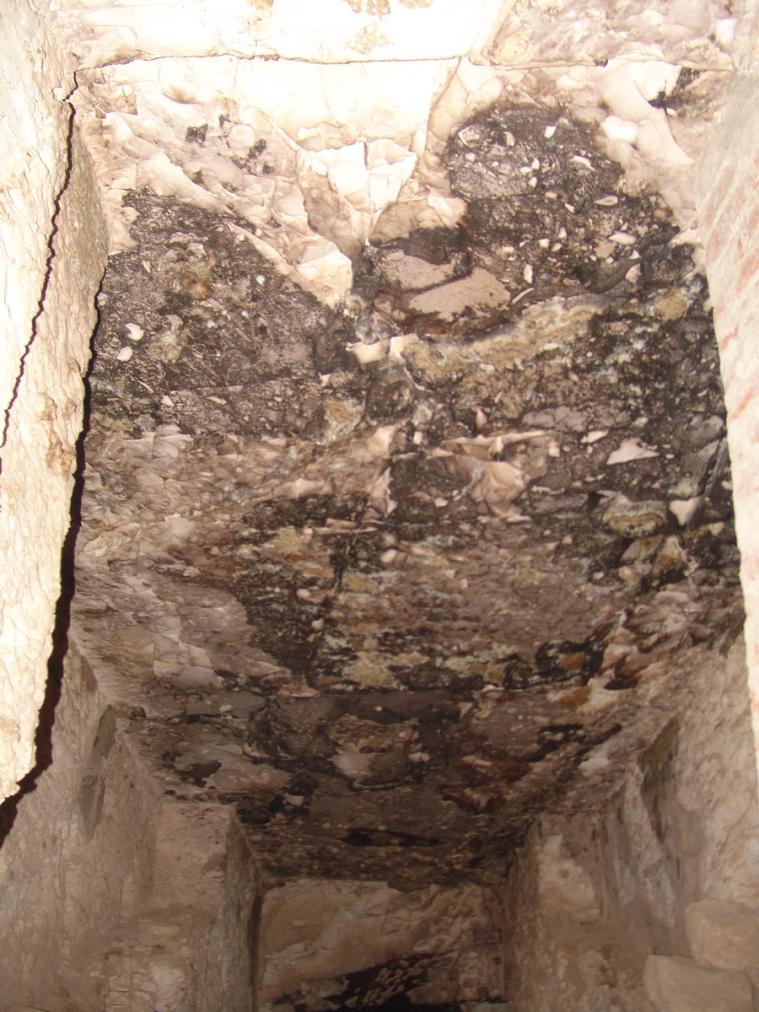
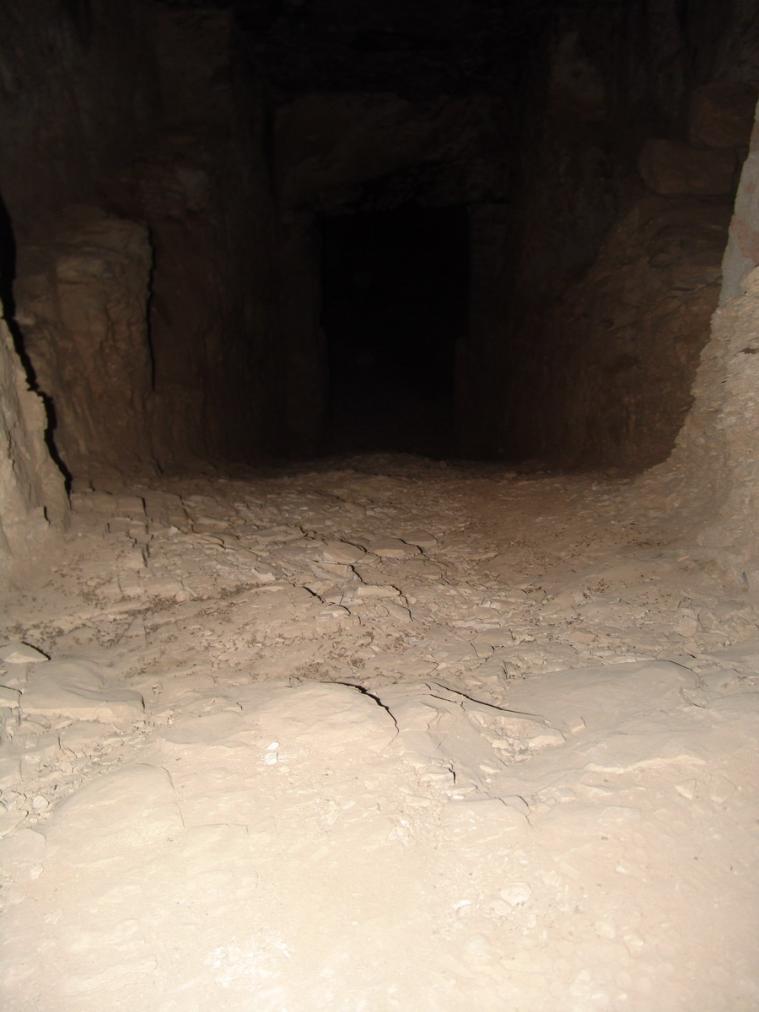
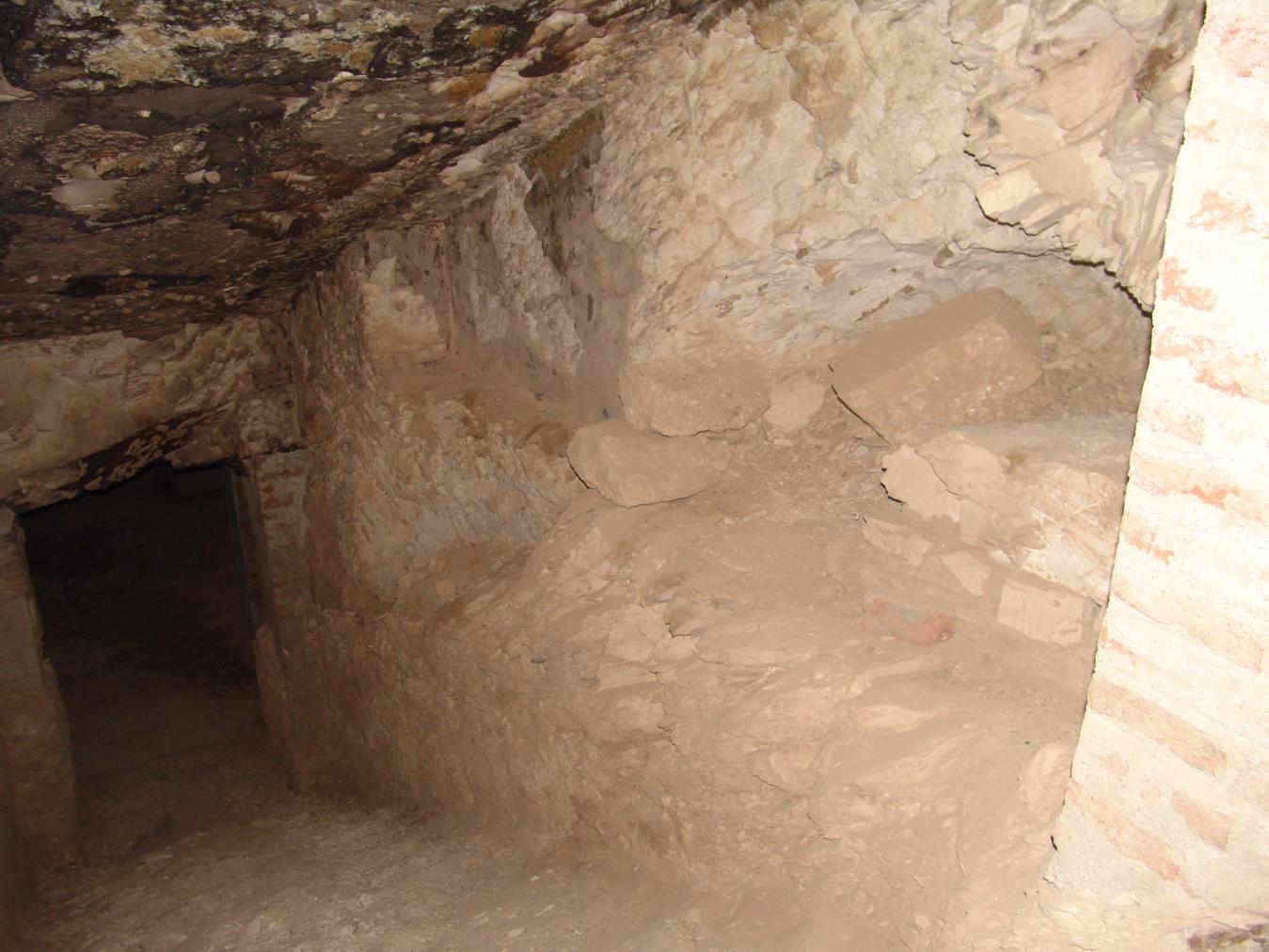
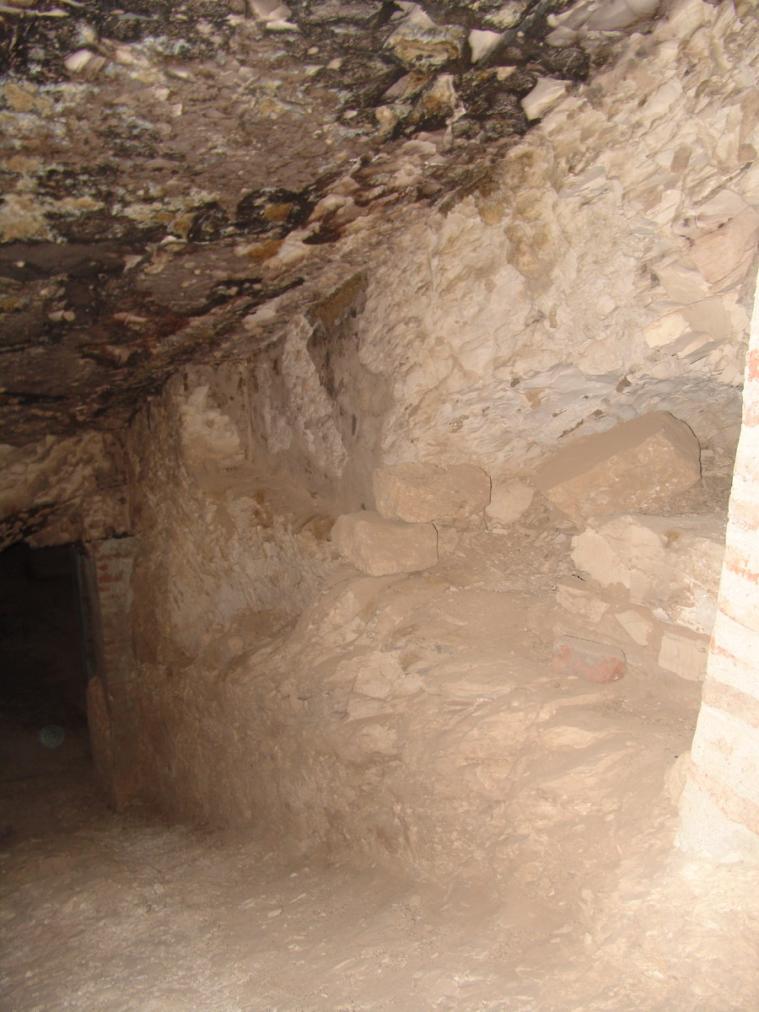
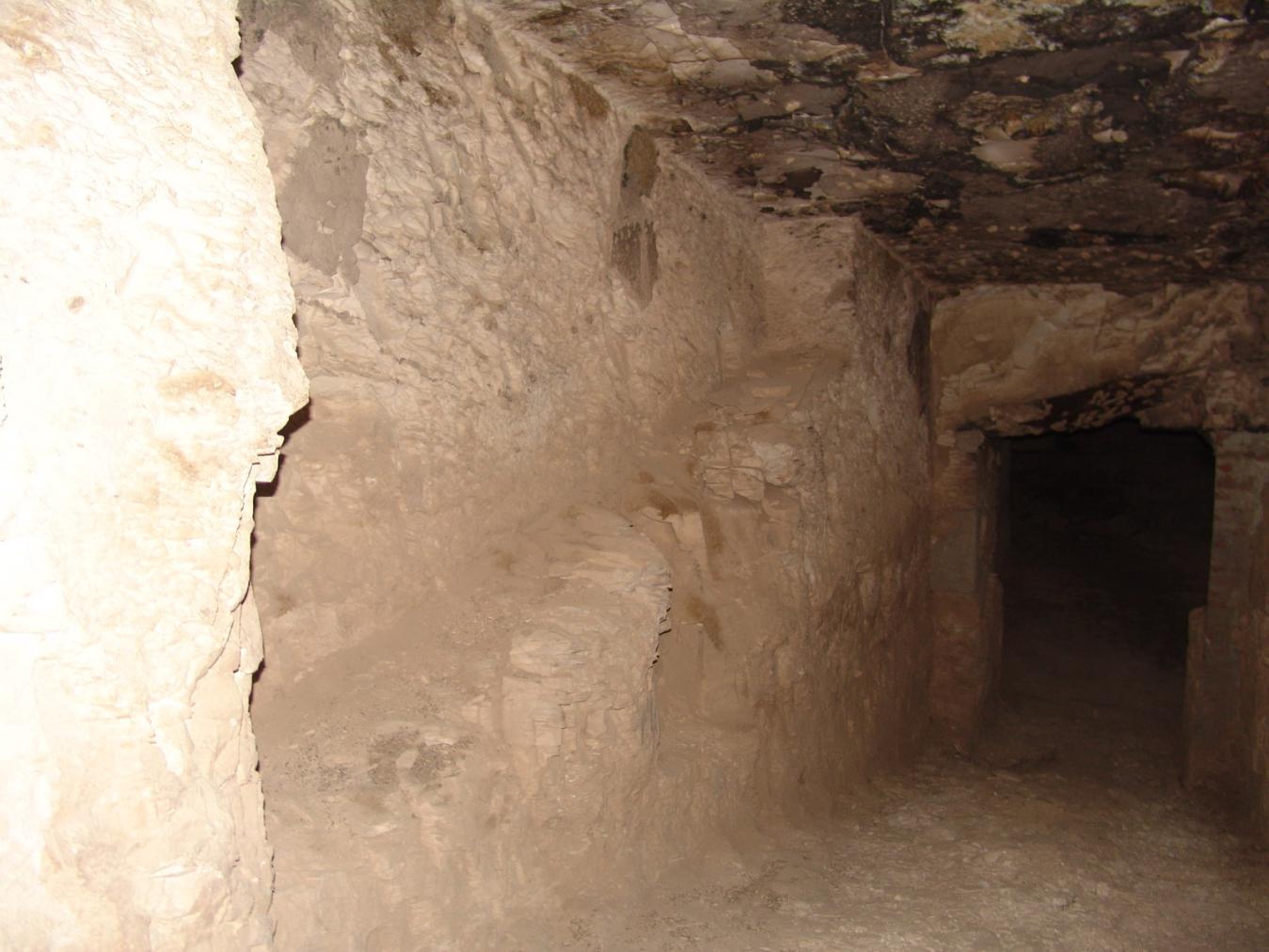
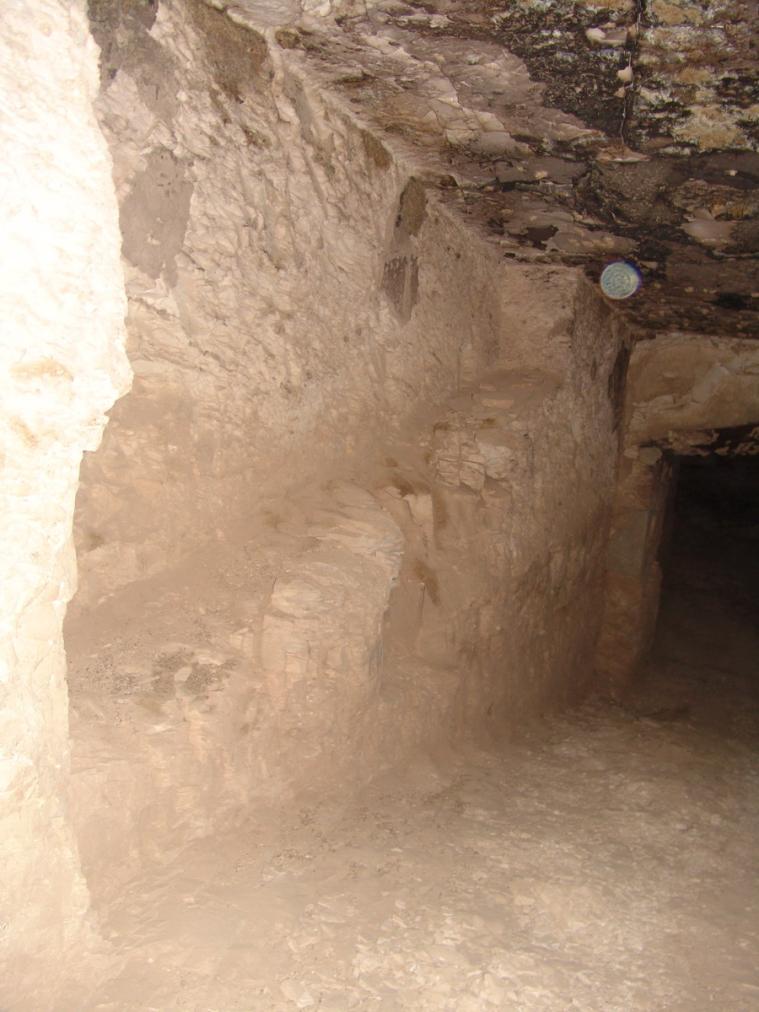
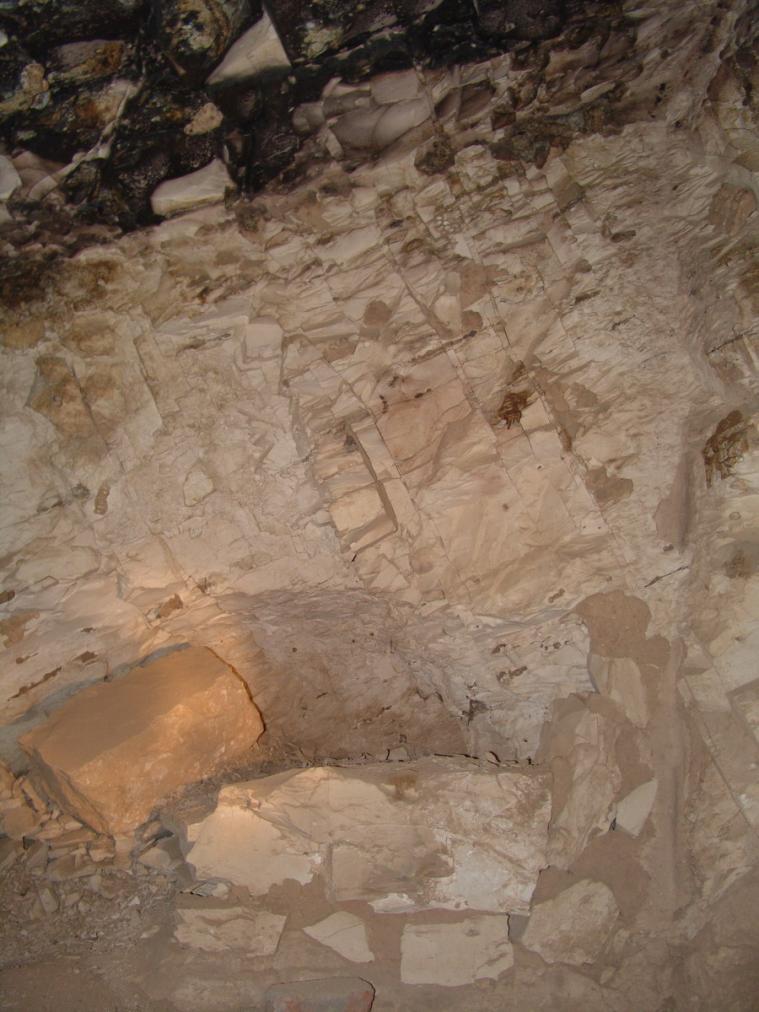
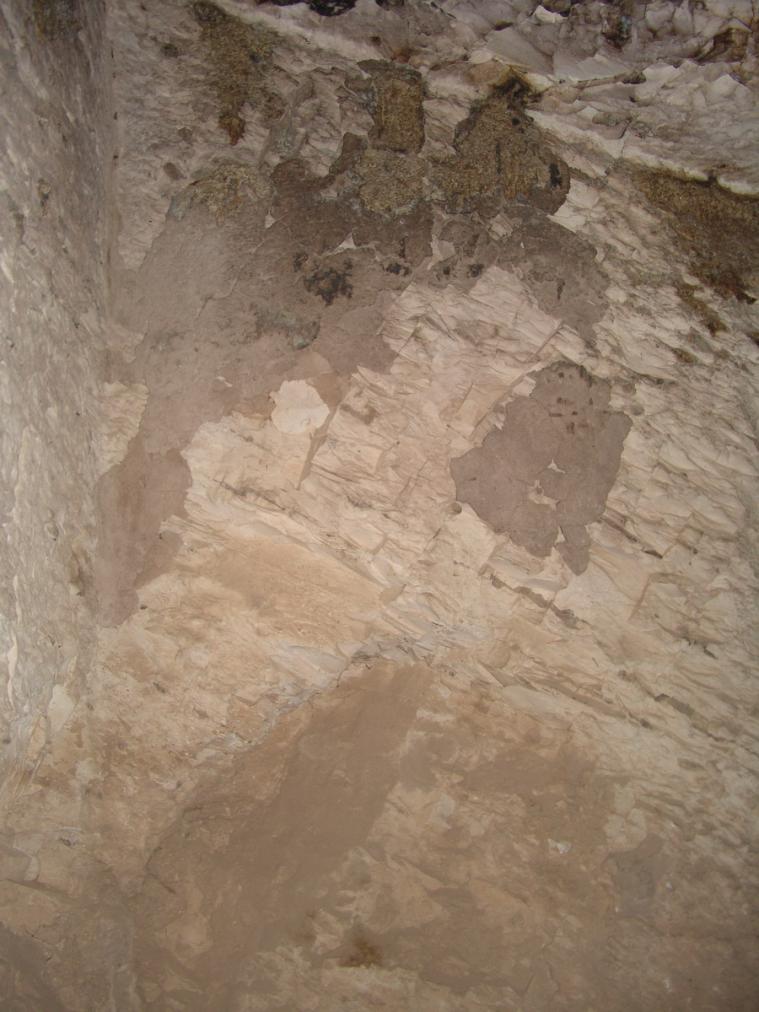
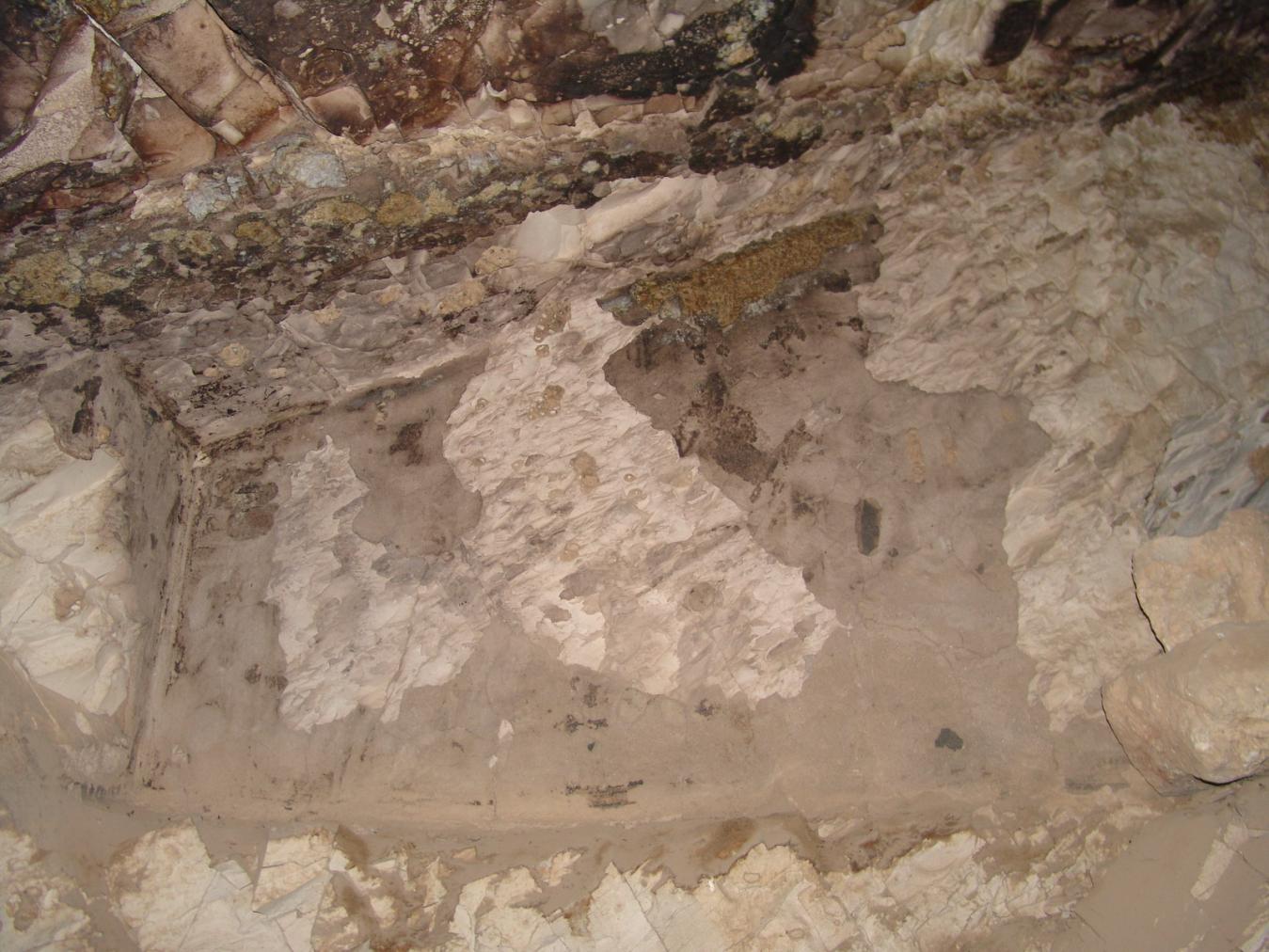
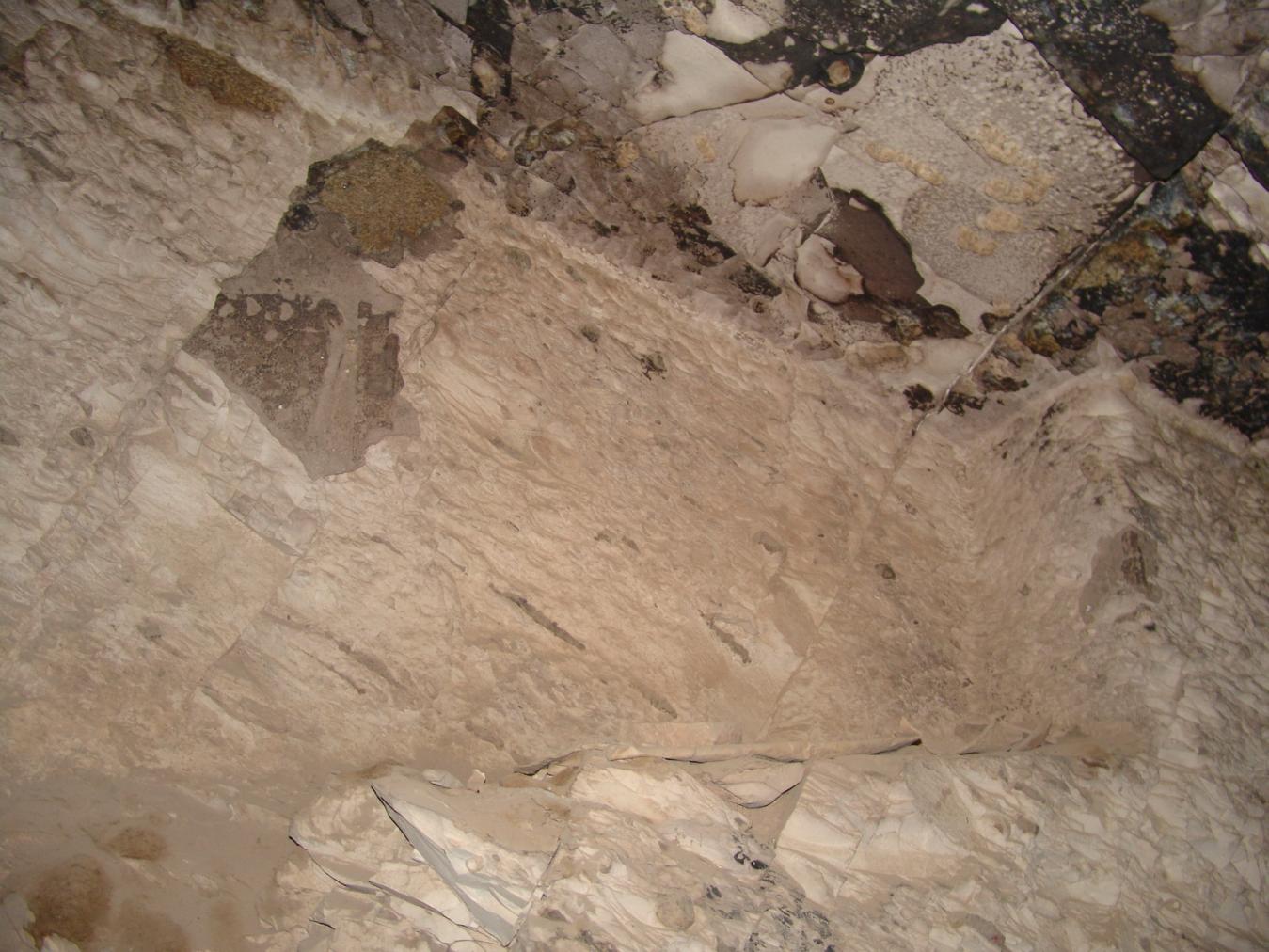
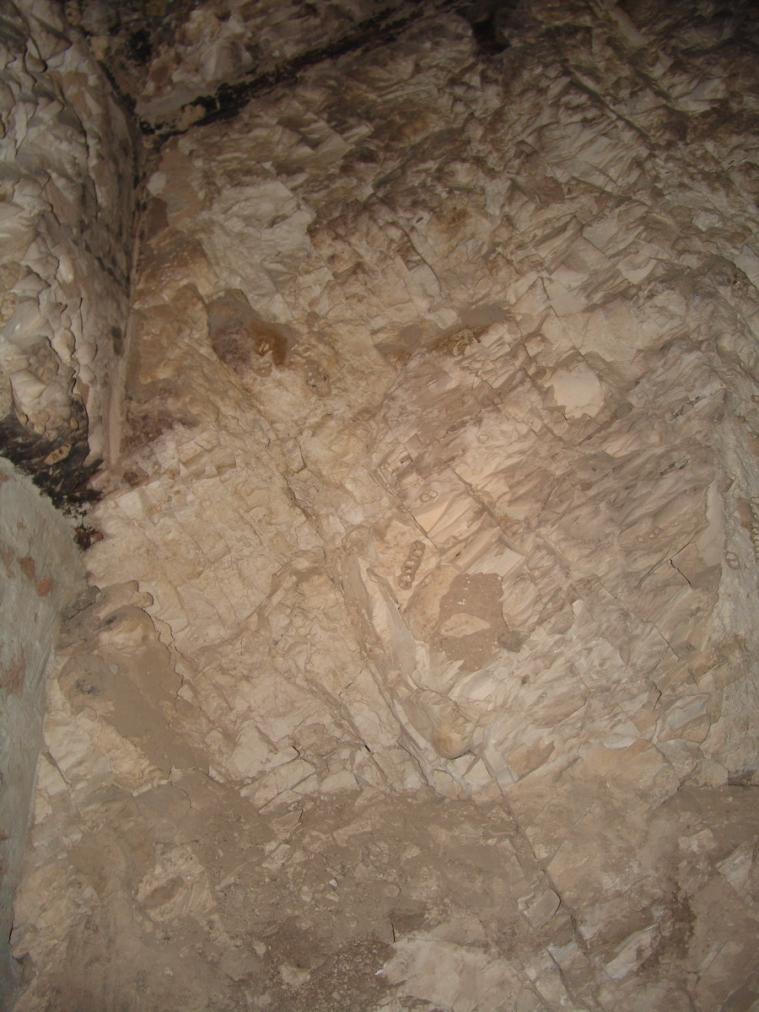
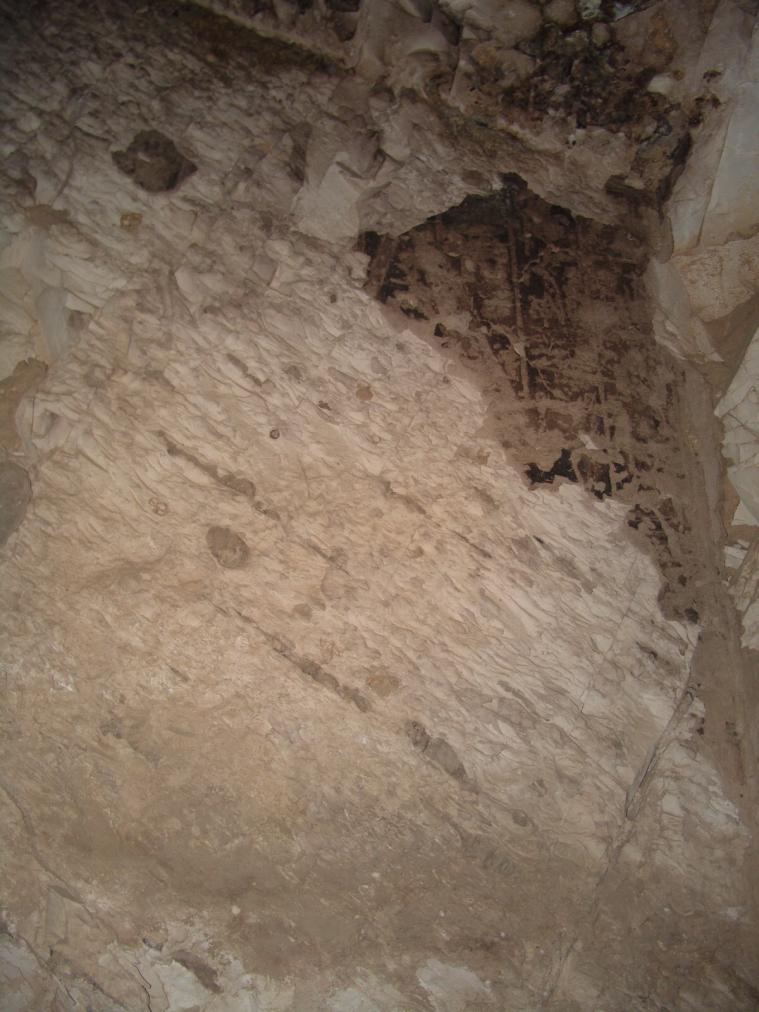
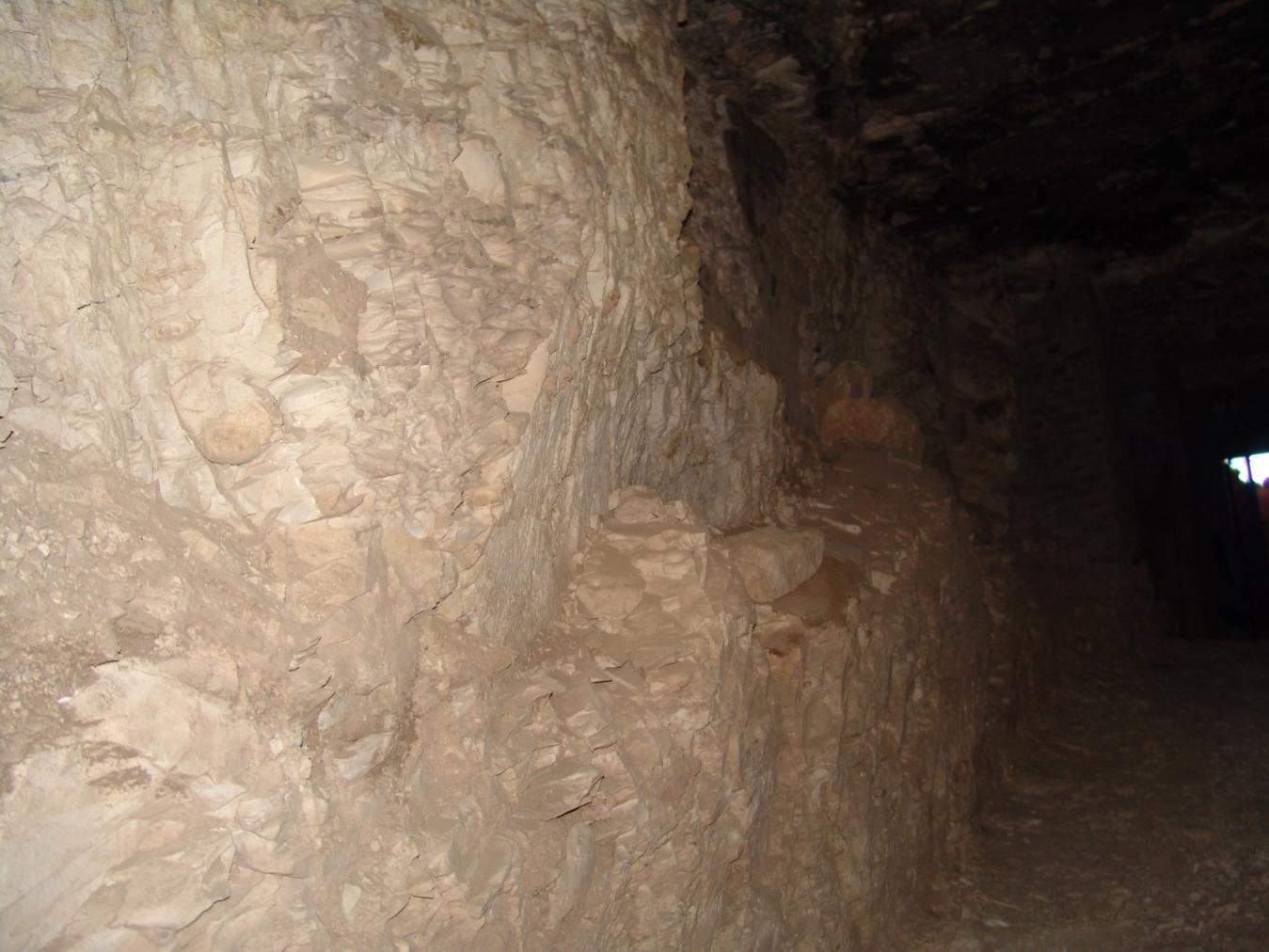
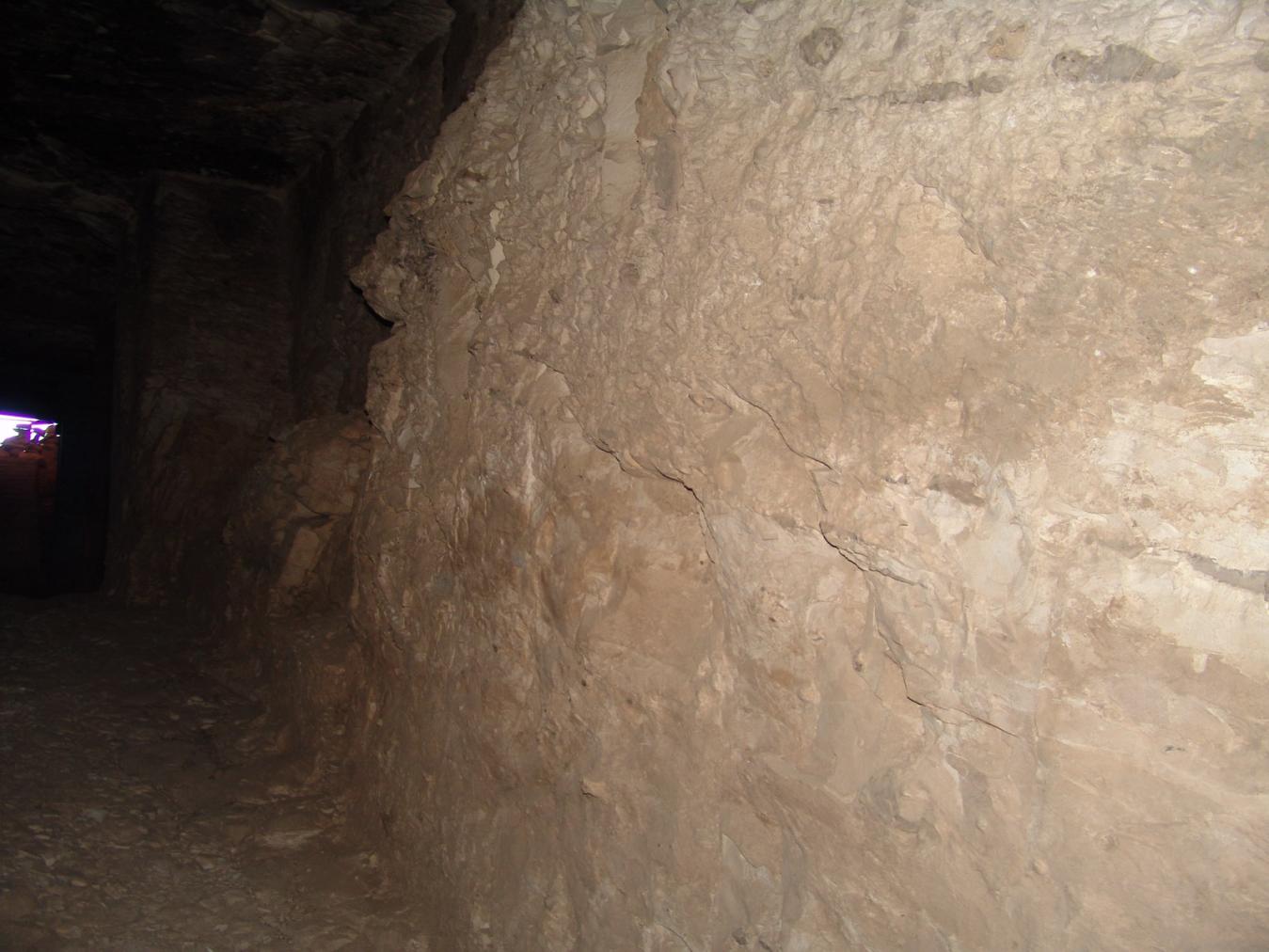
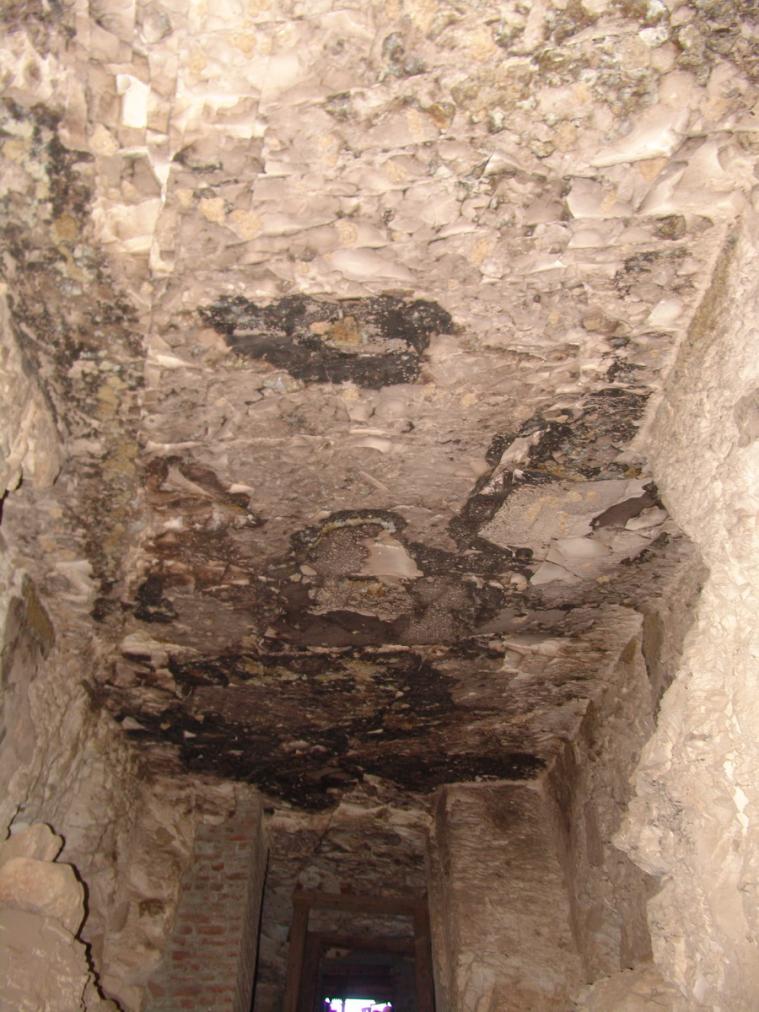
Gate D
See entire tombThis gate lies on axis with the tomb's entrance and provides access to the burial chamber. The jambs have been reconstructed and there are no traces of decoration remaining.
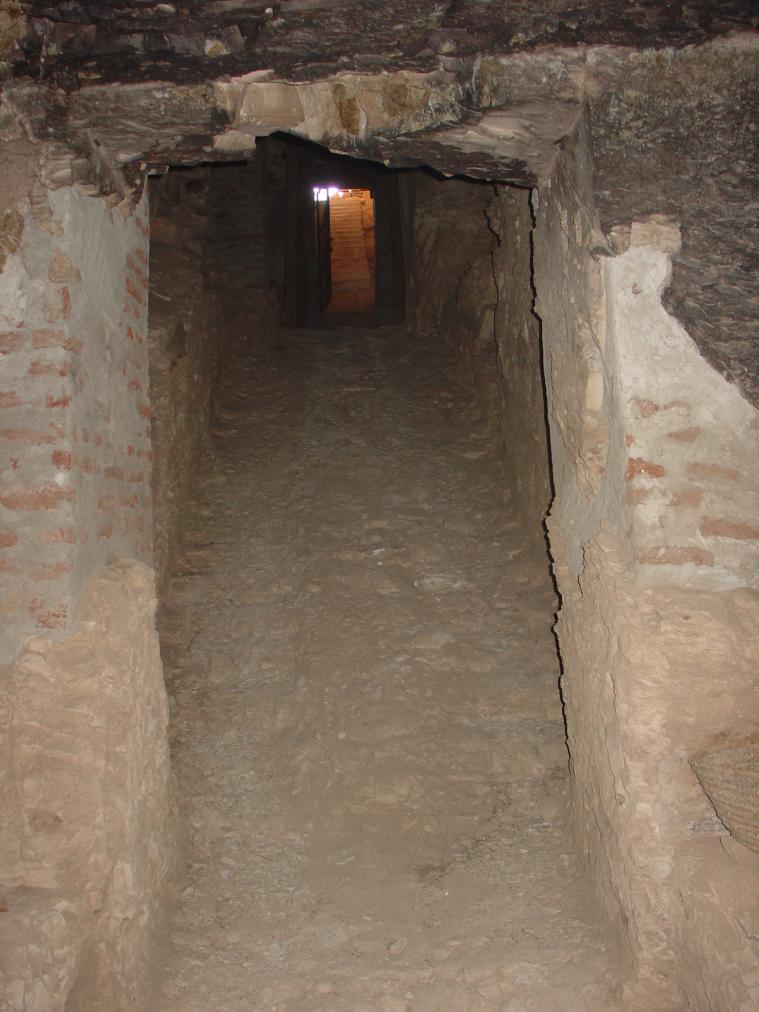

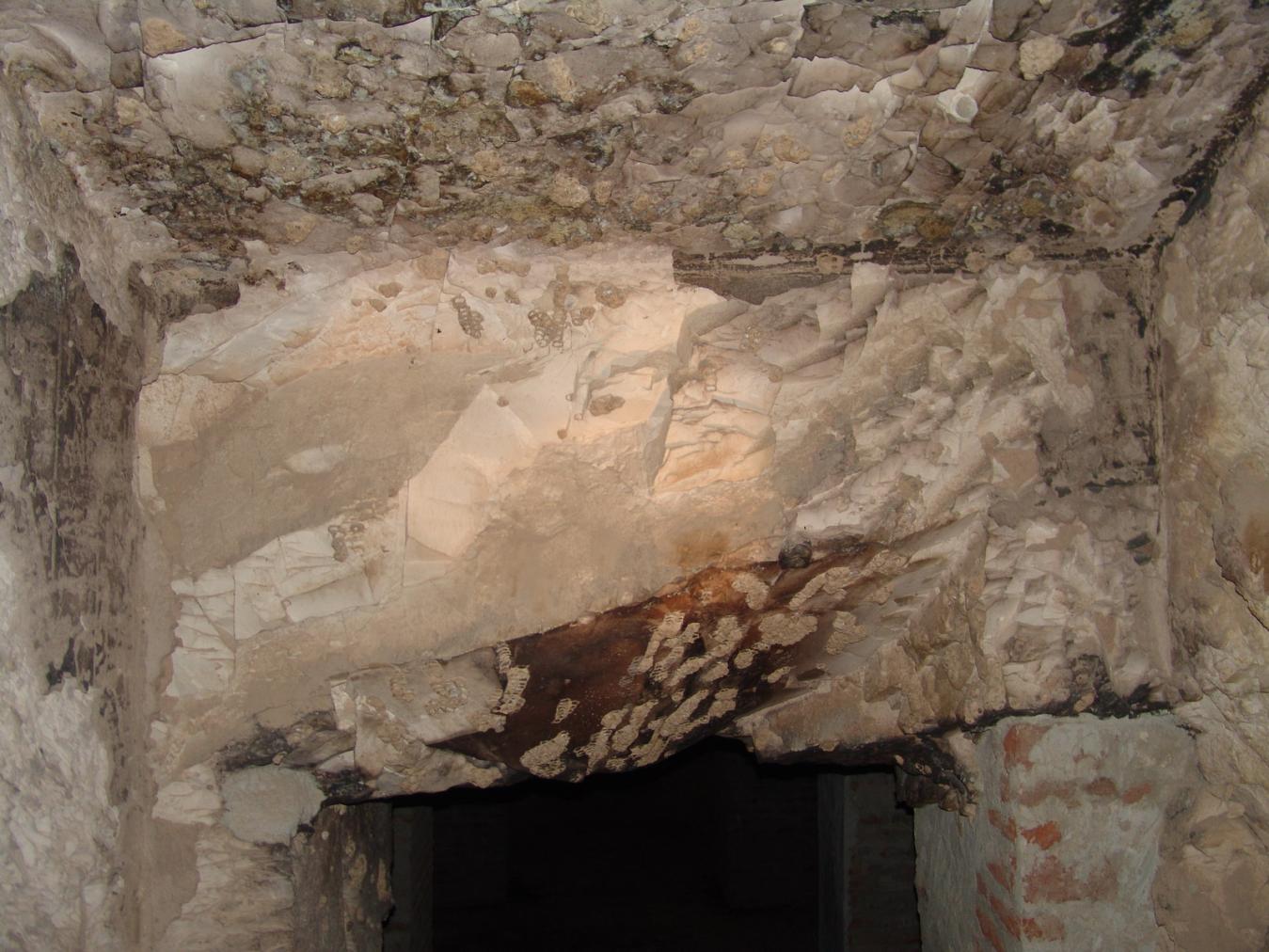
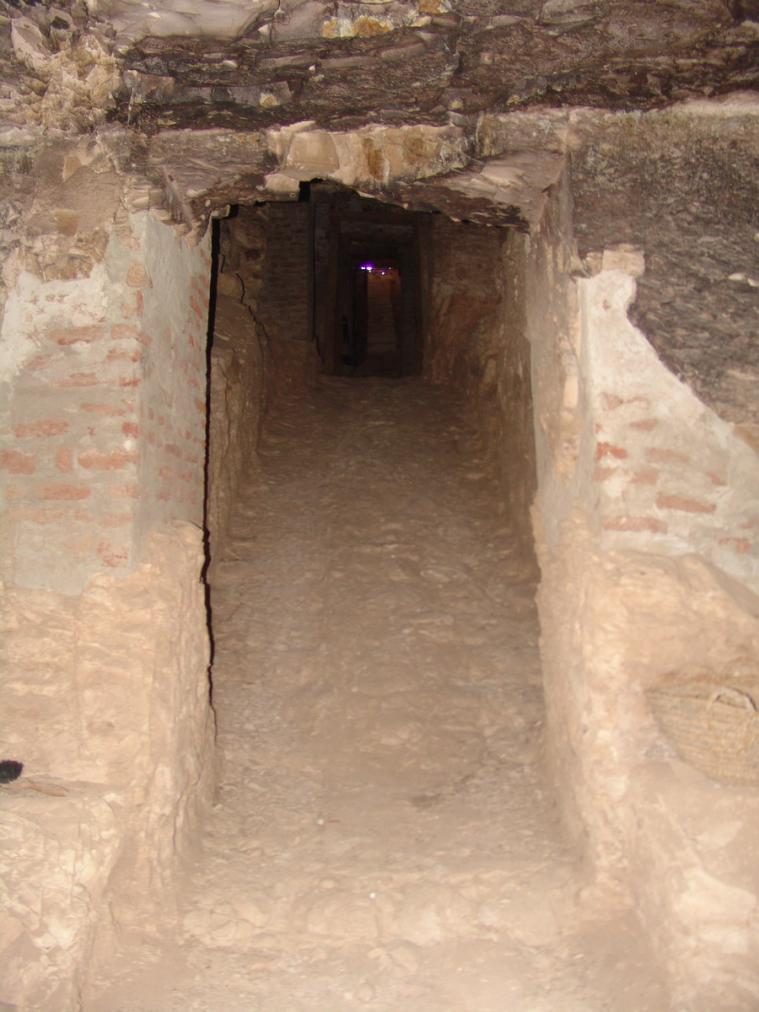
Burial chamber D
See entire tombThis chamber served as the burial place for the Queen and is on axis with the tomb's entrance. It originally contained four decorated pillars, which have since collapsed and been reconstructed in modern fired-brick. There is a pit in the center of the chamber for the Sarcophagus, a magical brick niche on each wall, and a rock-hewn Bench that runs along all of the walls. A number of open joints and two fault planes are present in this chamber and are filled with salt. Fracturing is also present in the ceiling and extensive salt efflorescence is present on the east wall. The paintings in this chamber have suffered severe fire damage and a sediment line with loss of plaster and relief at the base of the walls suggests that the lower parts of the tomb have flooded in the past.
The only surviving decoration consists of a unidentifiable deity and column of text on the east wall, columns of text and a possible representation of Shu on the west wall, columns of text on the northern wall, and a frieze of Djed pillars and Tyet knots on the southern bench. Only the very tops of the pillars have survived damage and traces of Kheker frieze are visible.
Chamber plan:
SquareRelationship to main tomb axis:
ParallelChamber layout:
Flat floor, pillarsFloor:
One levelCeiling:
Flat
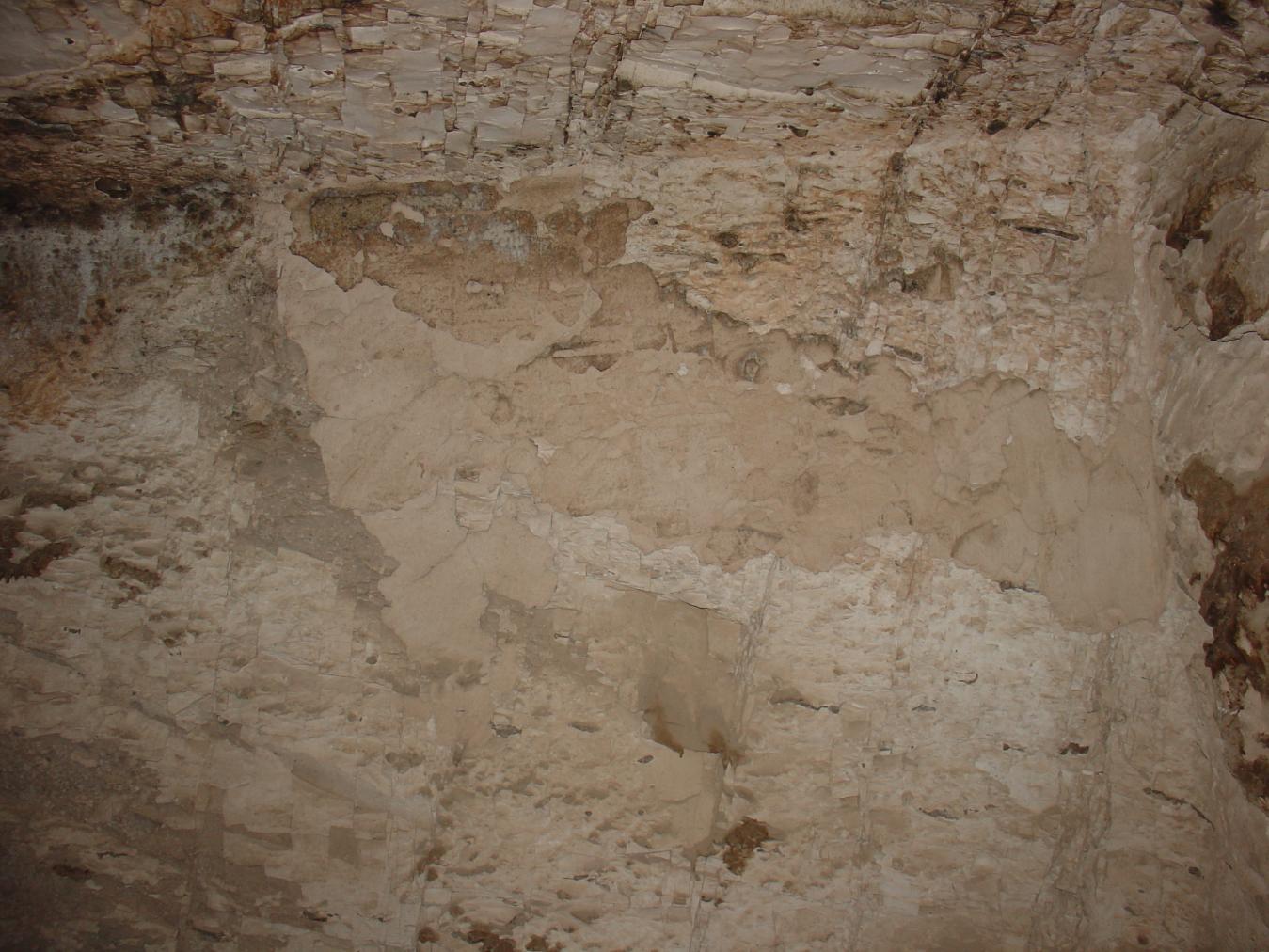
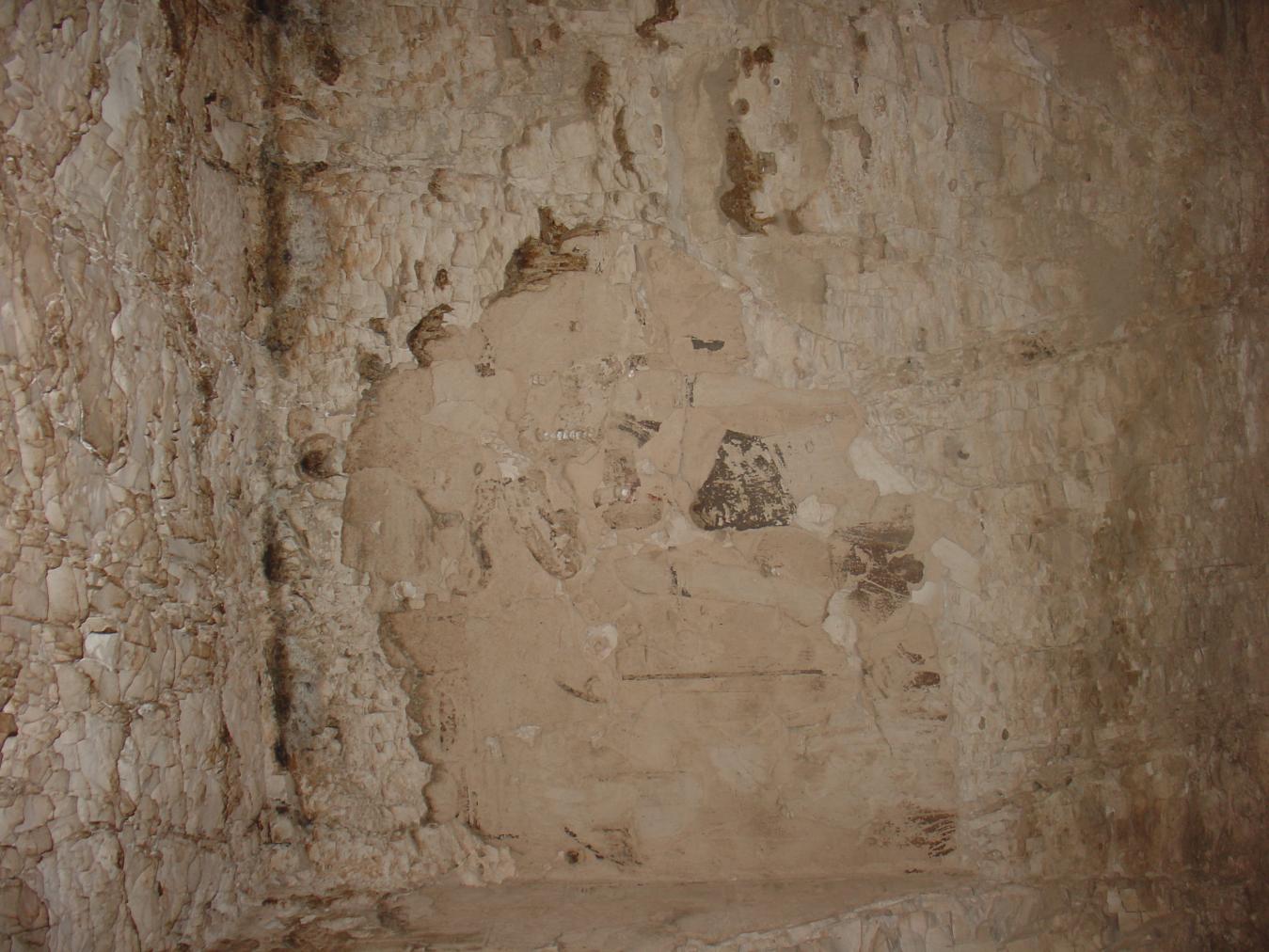
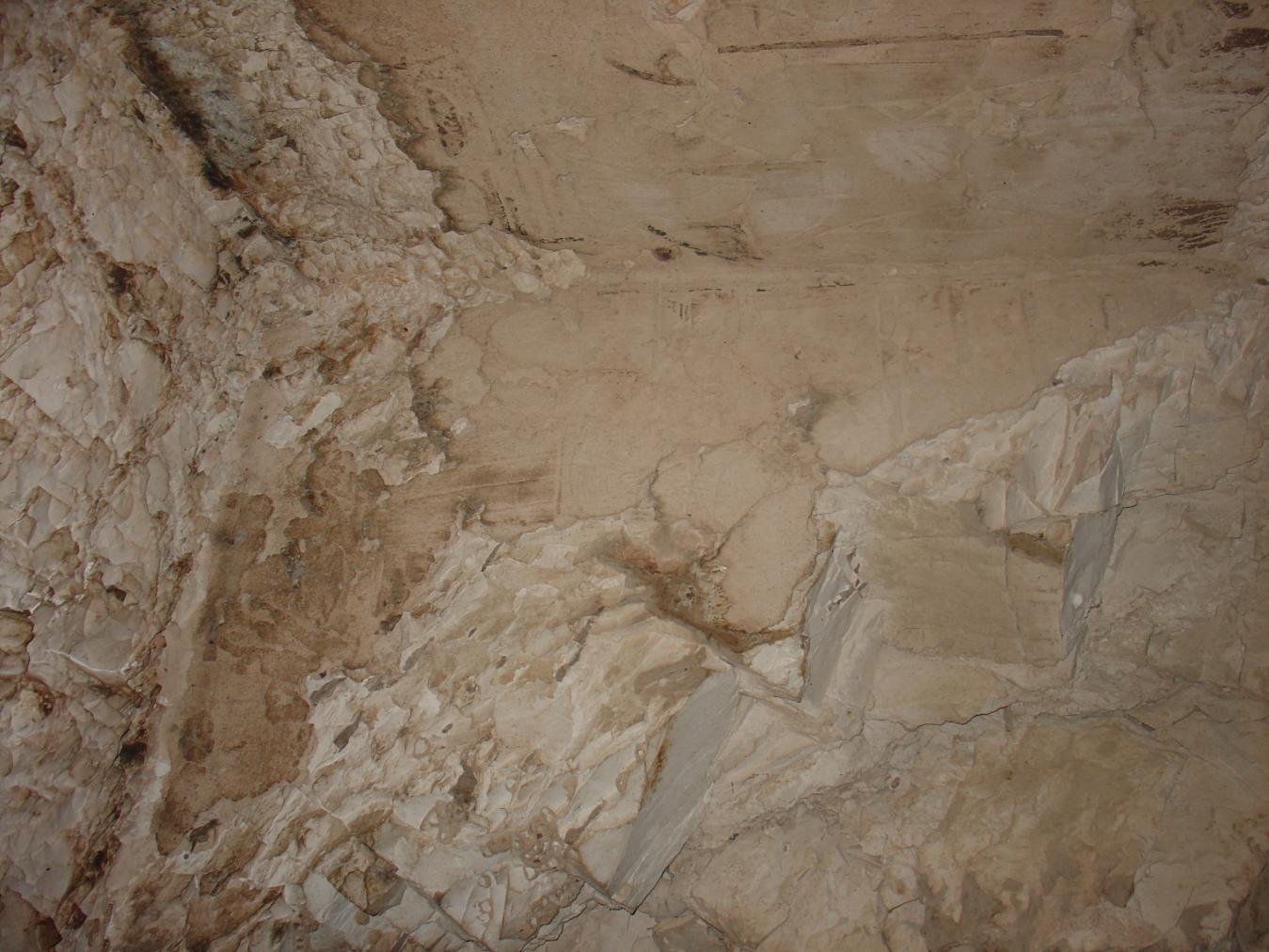
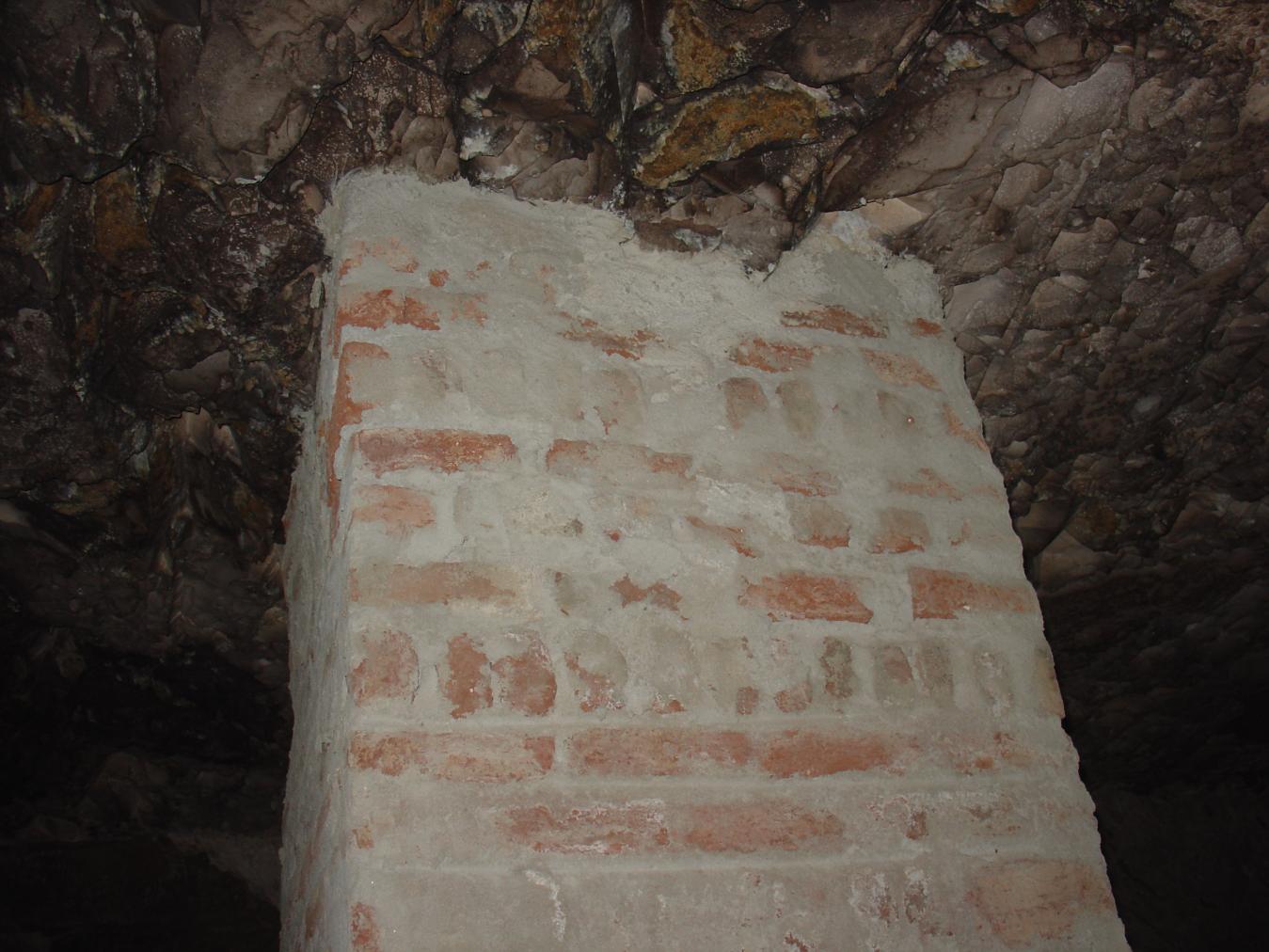
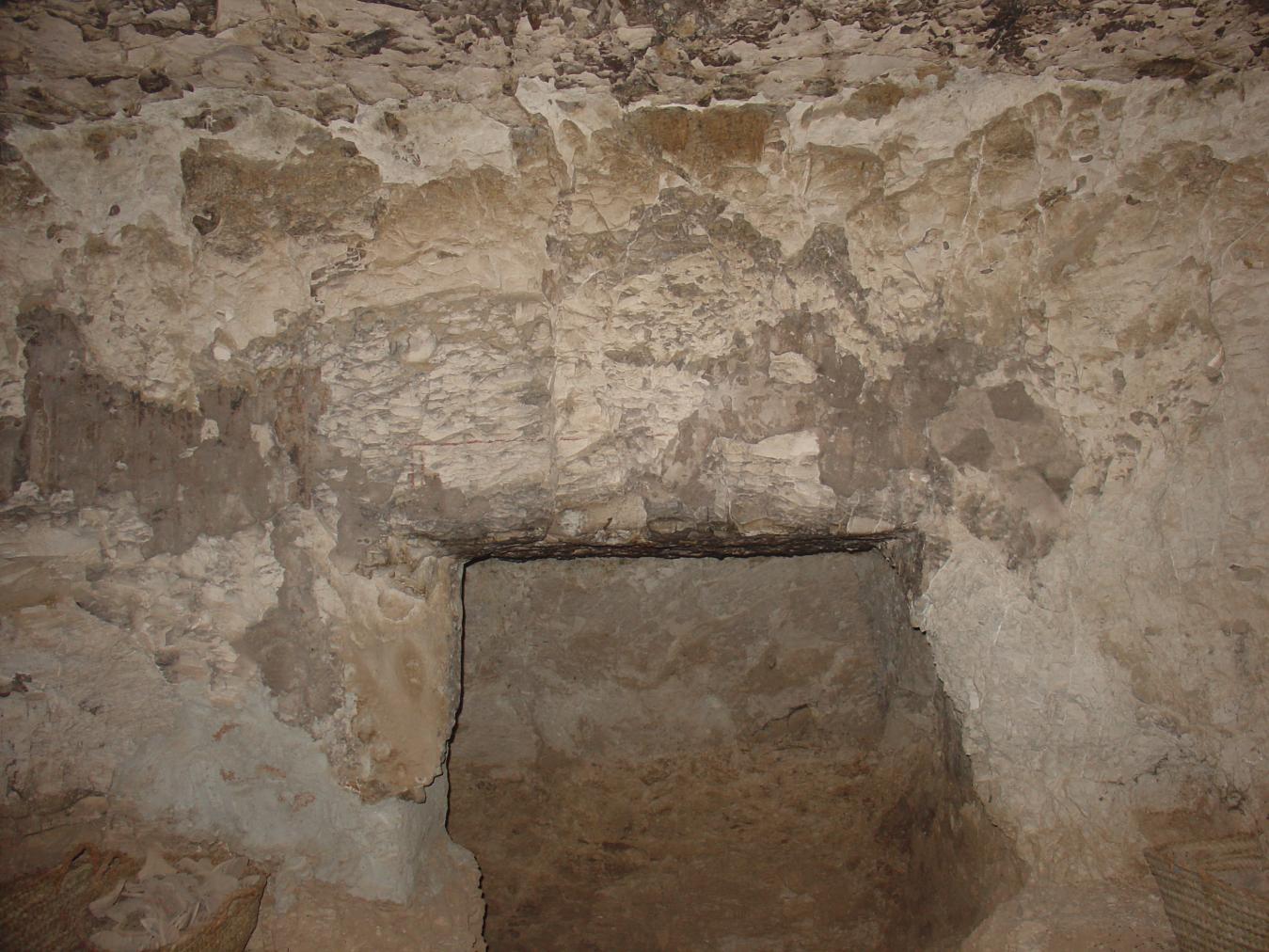
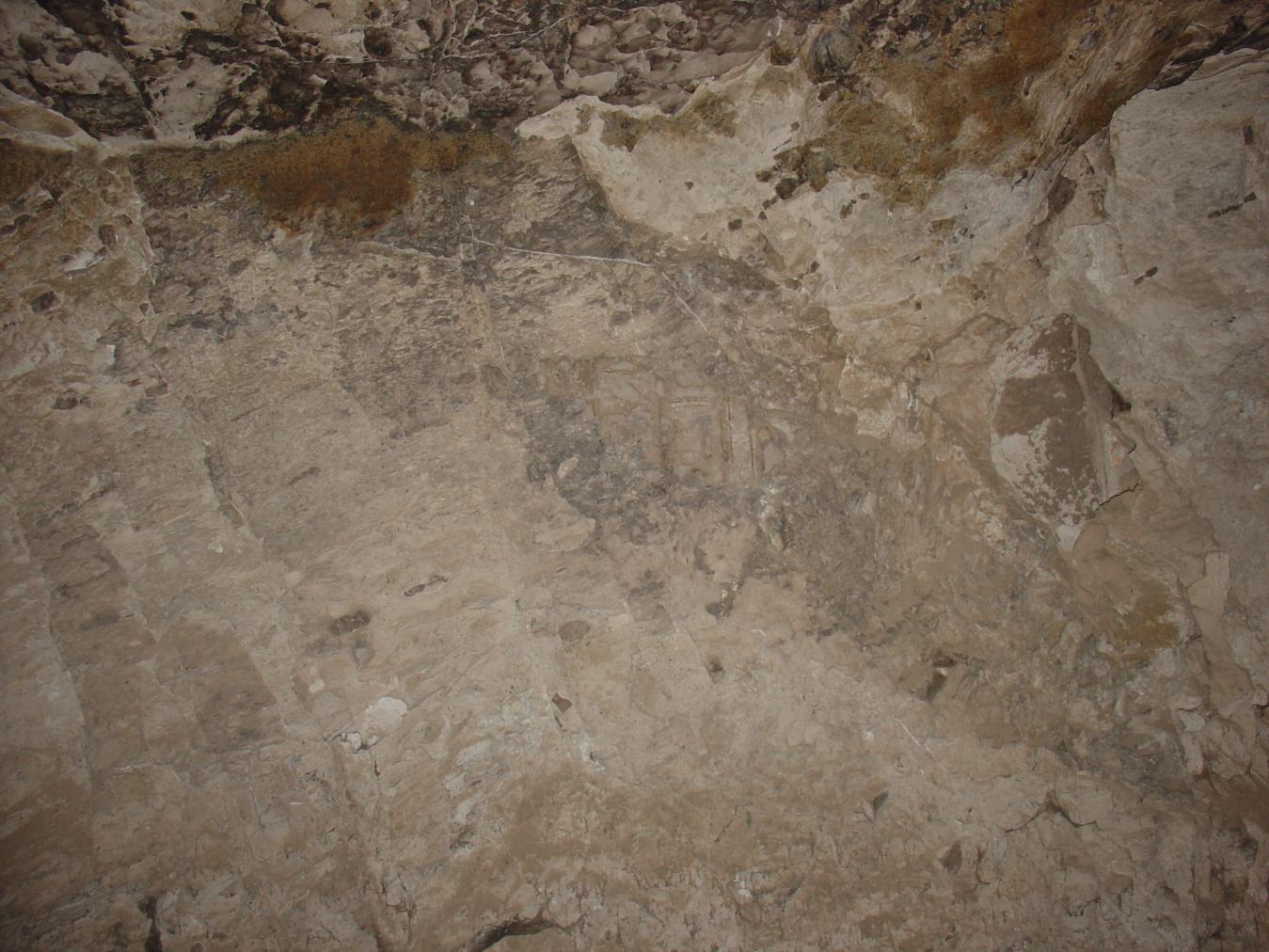
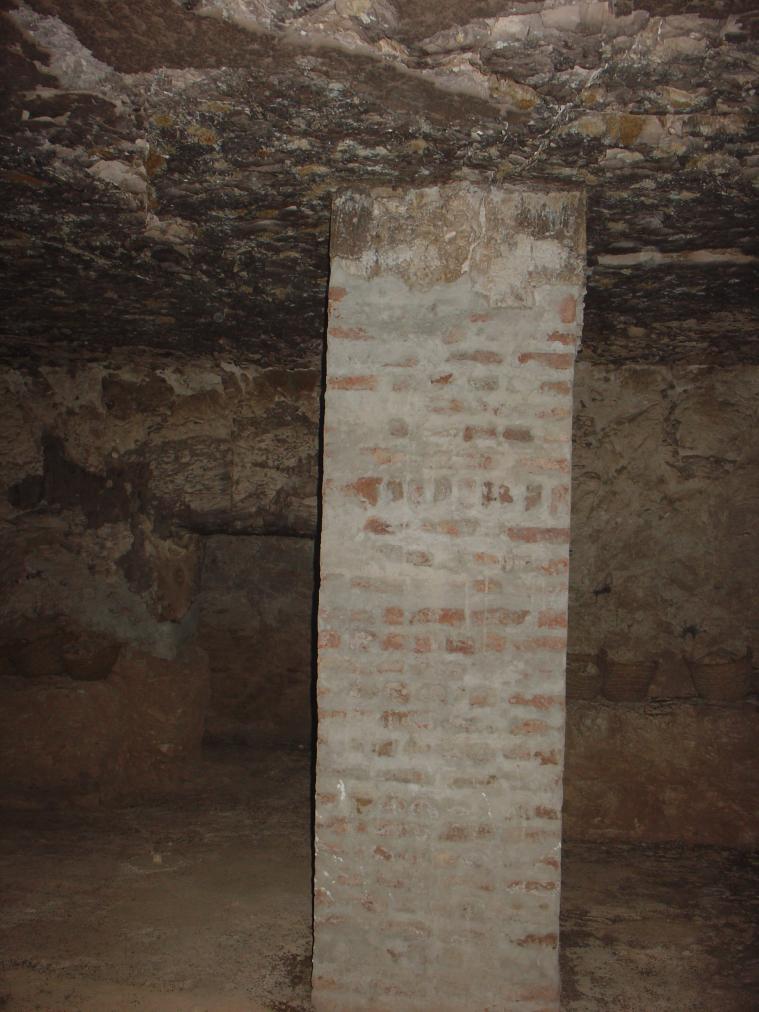
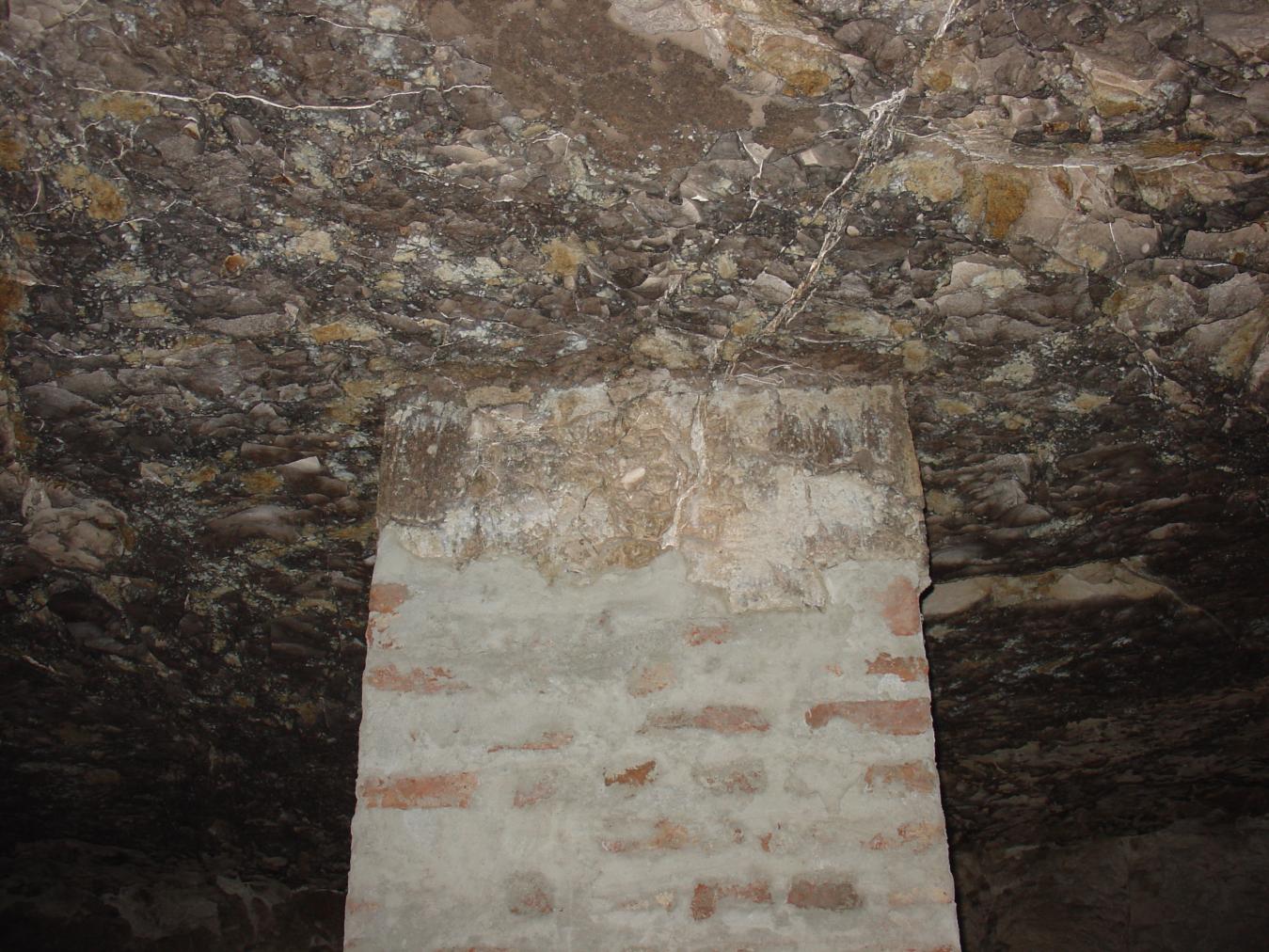
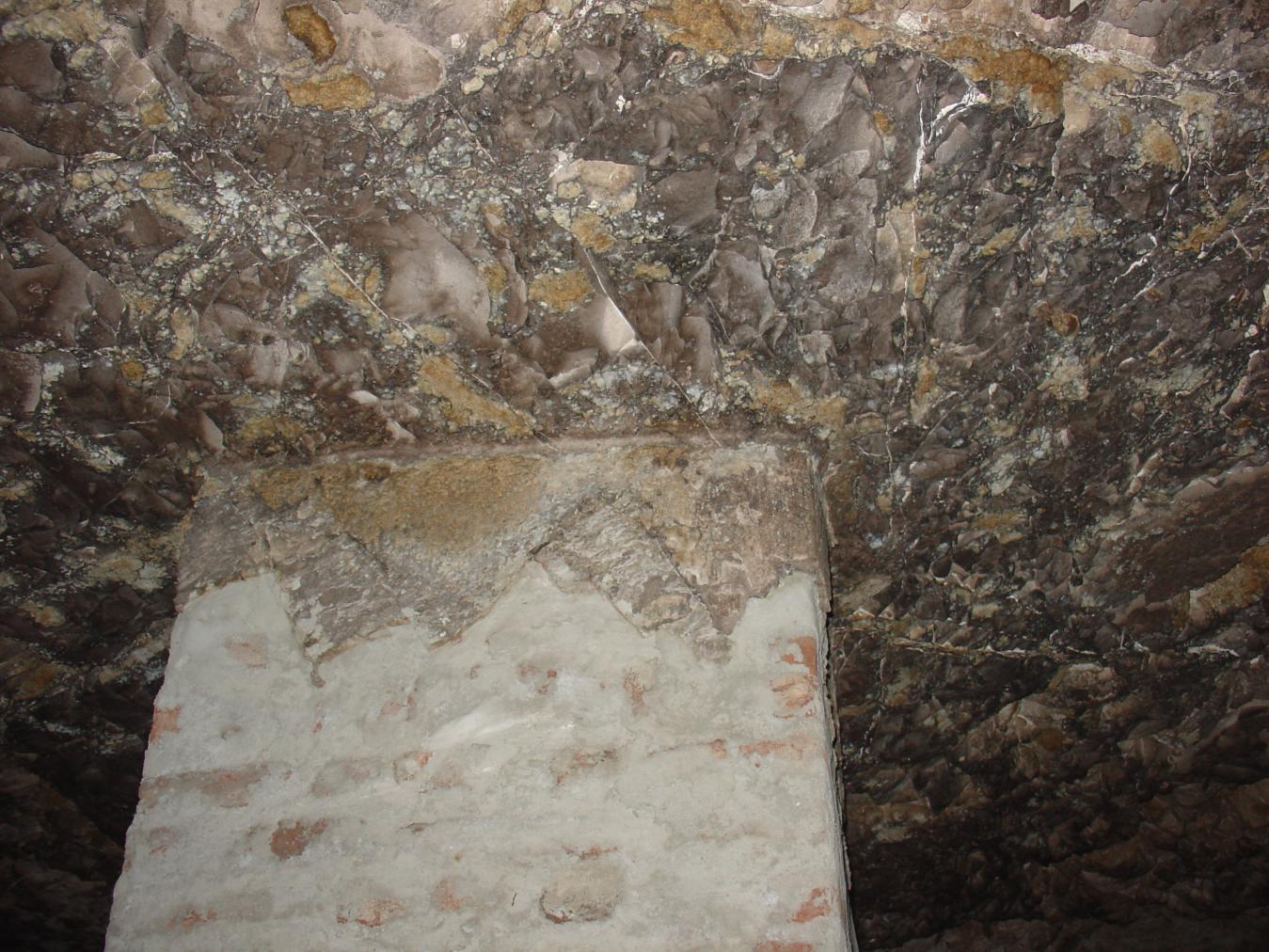
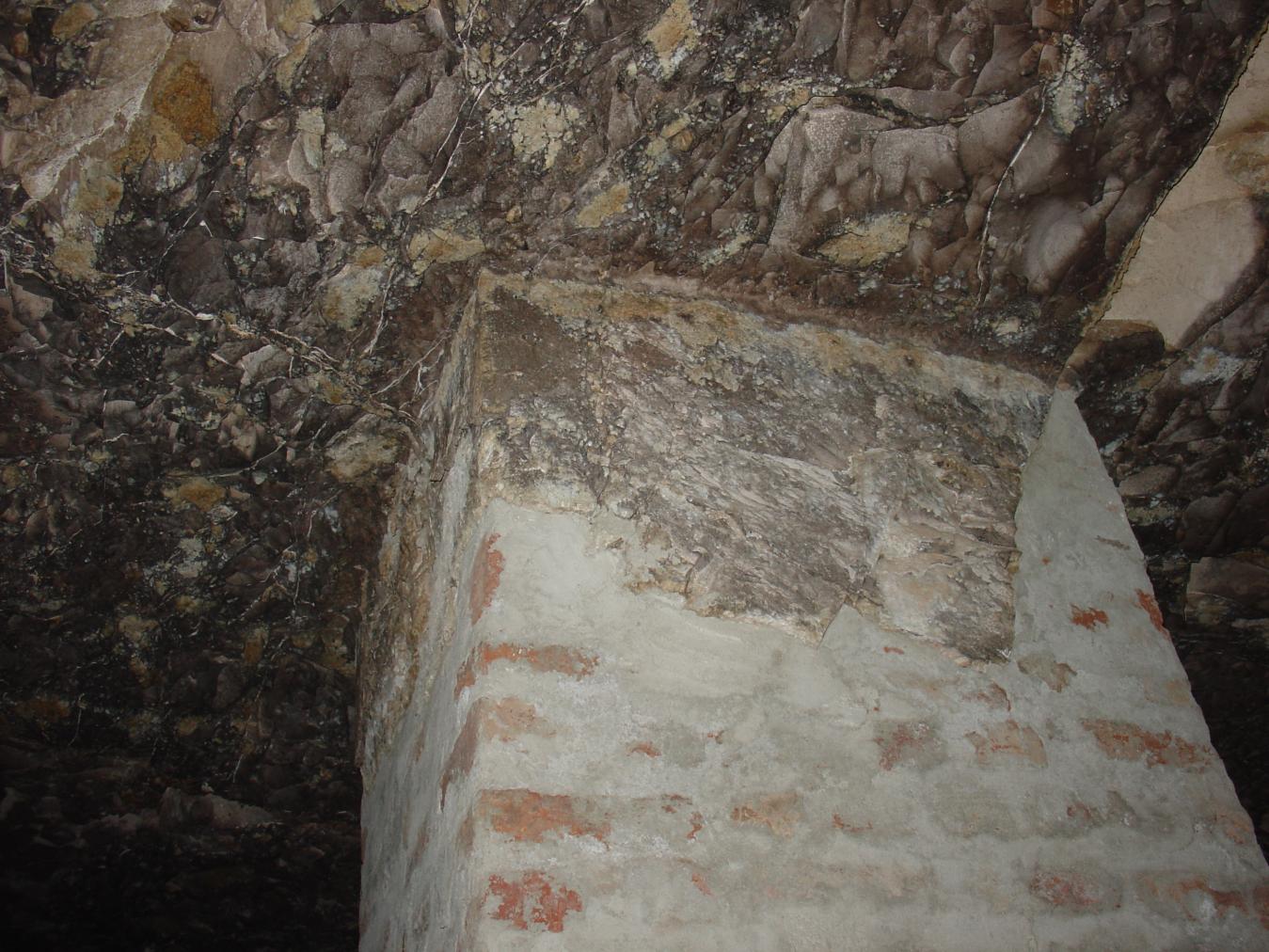
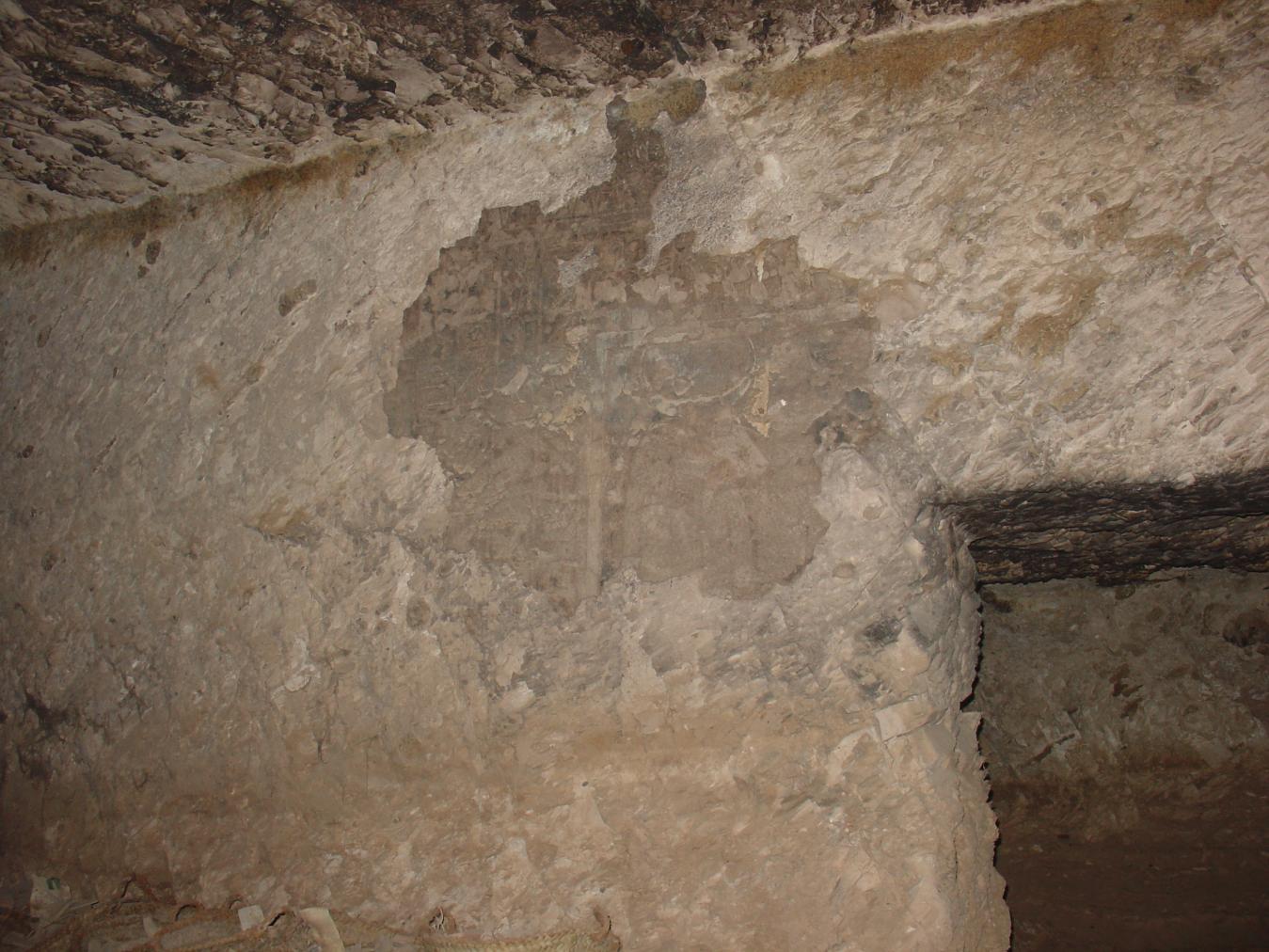
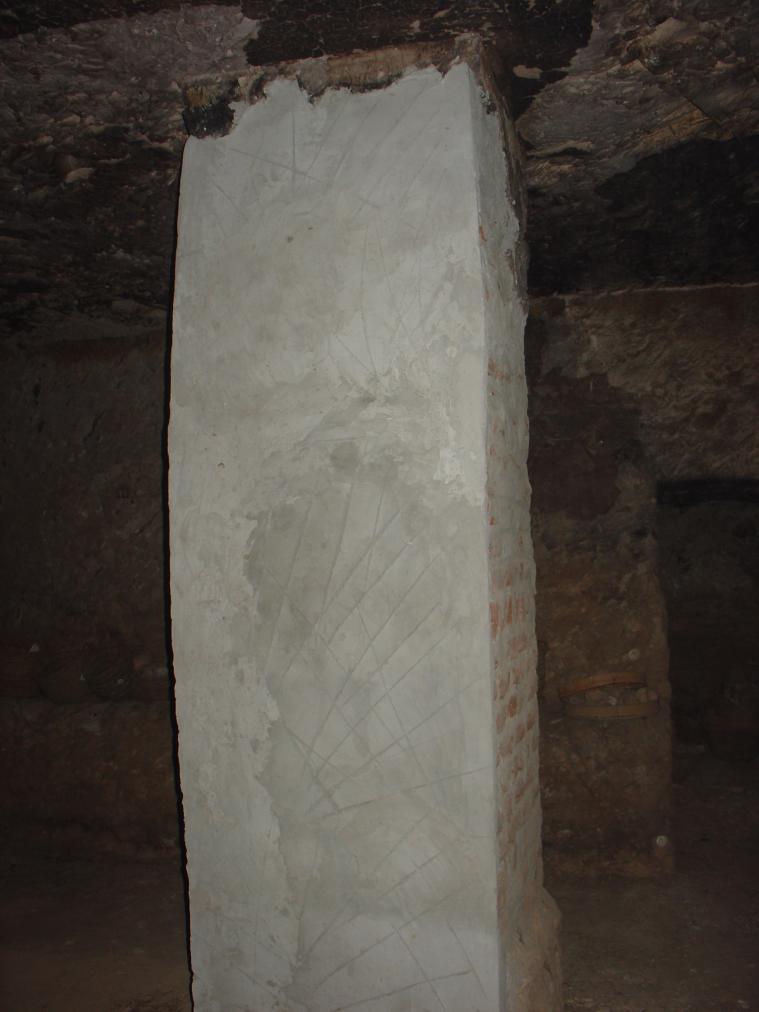
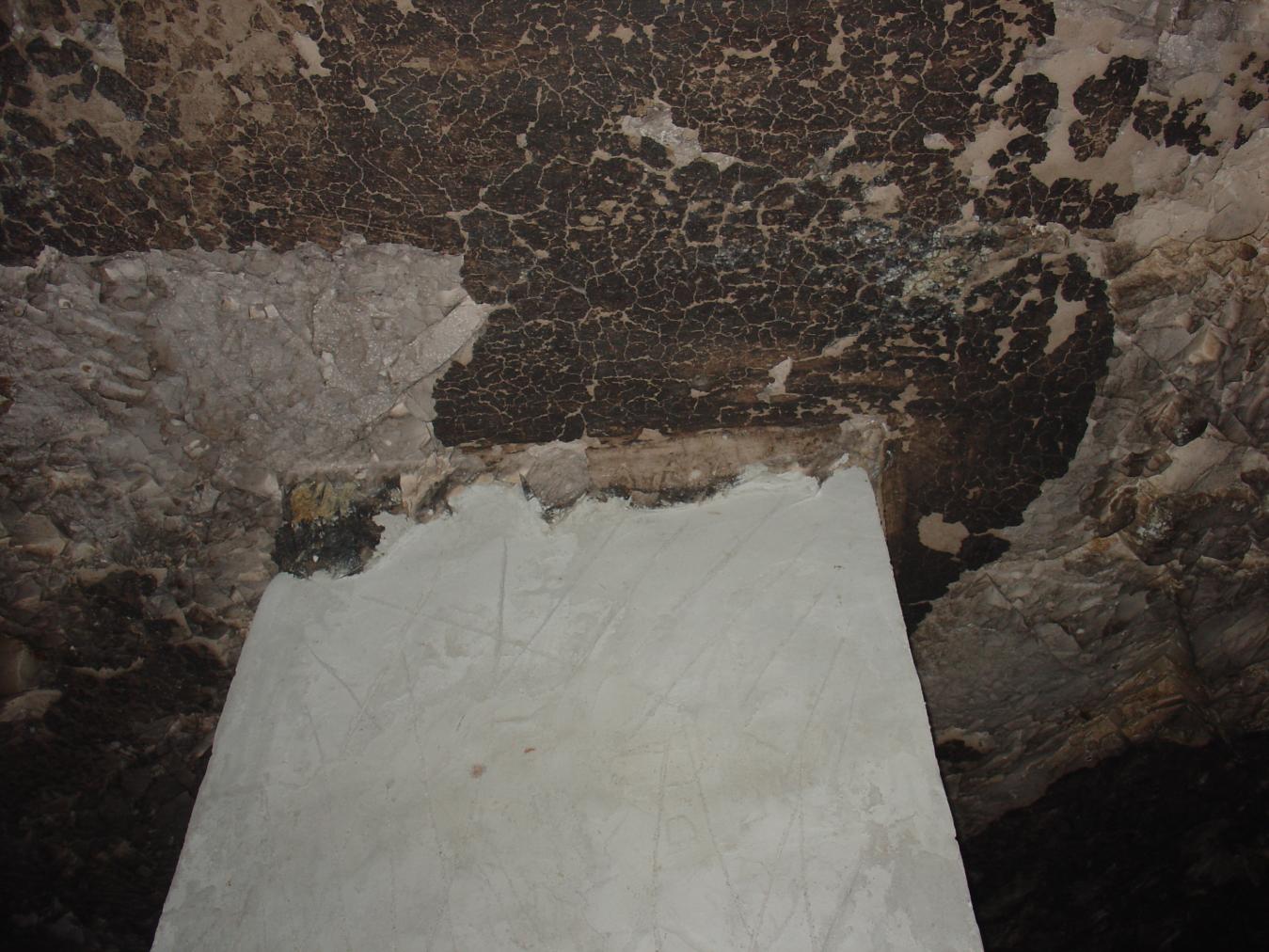
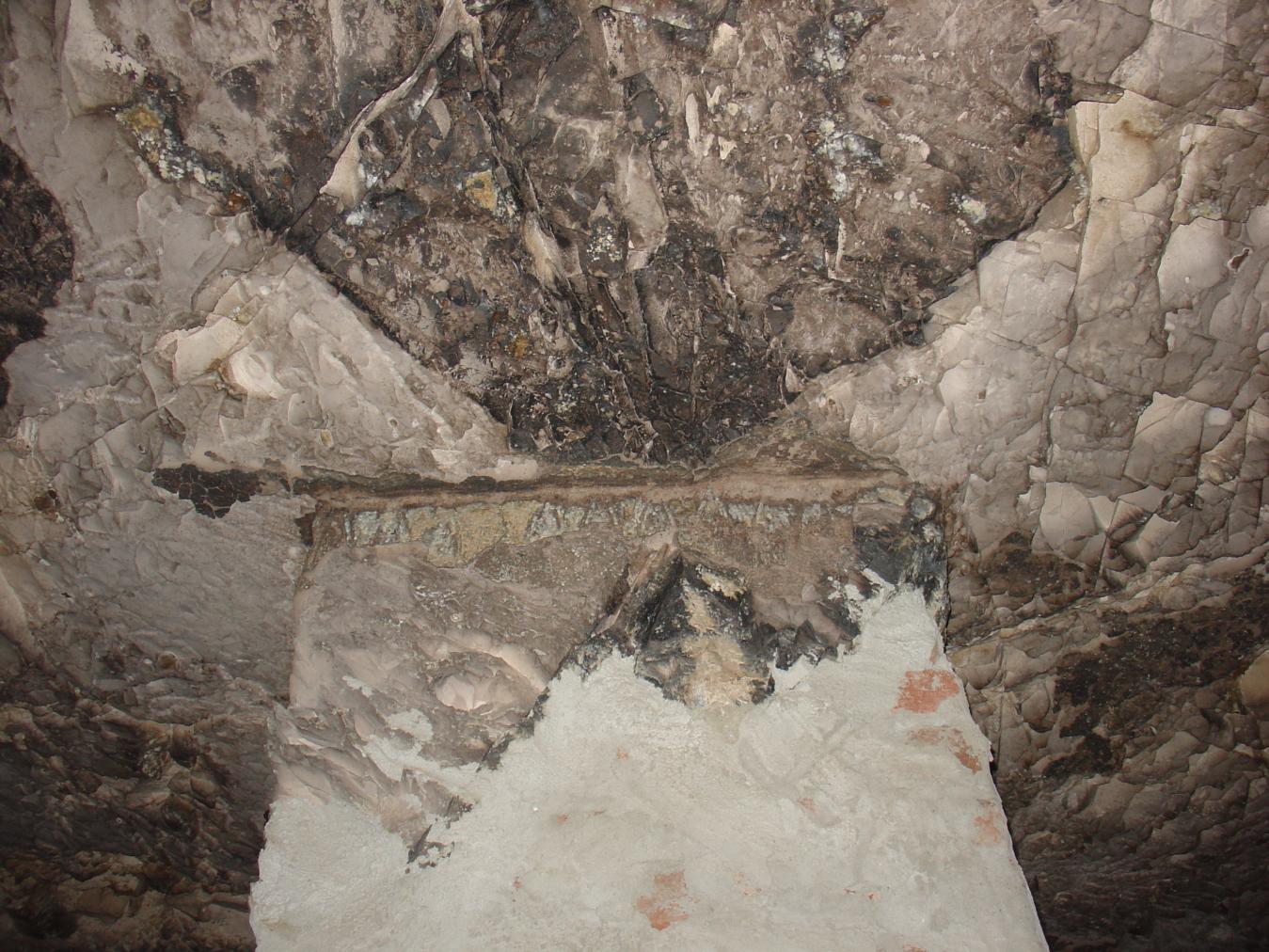
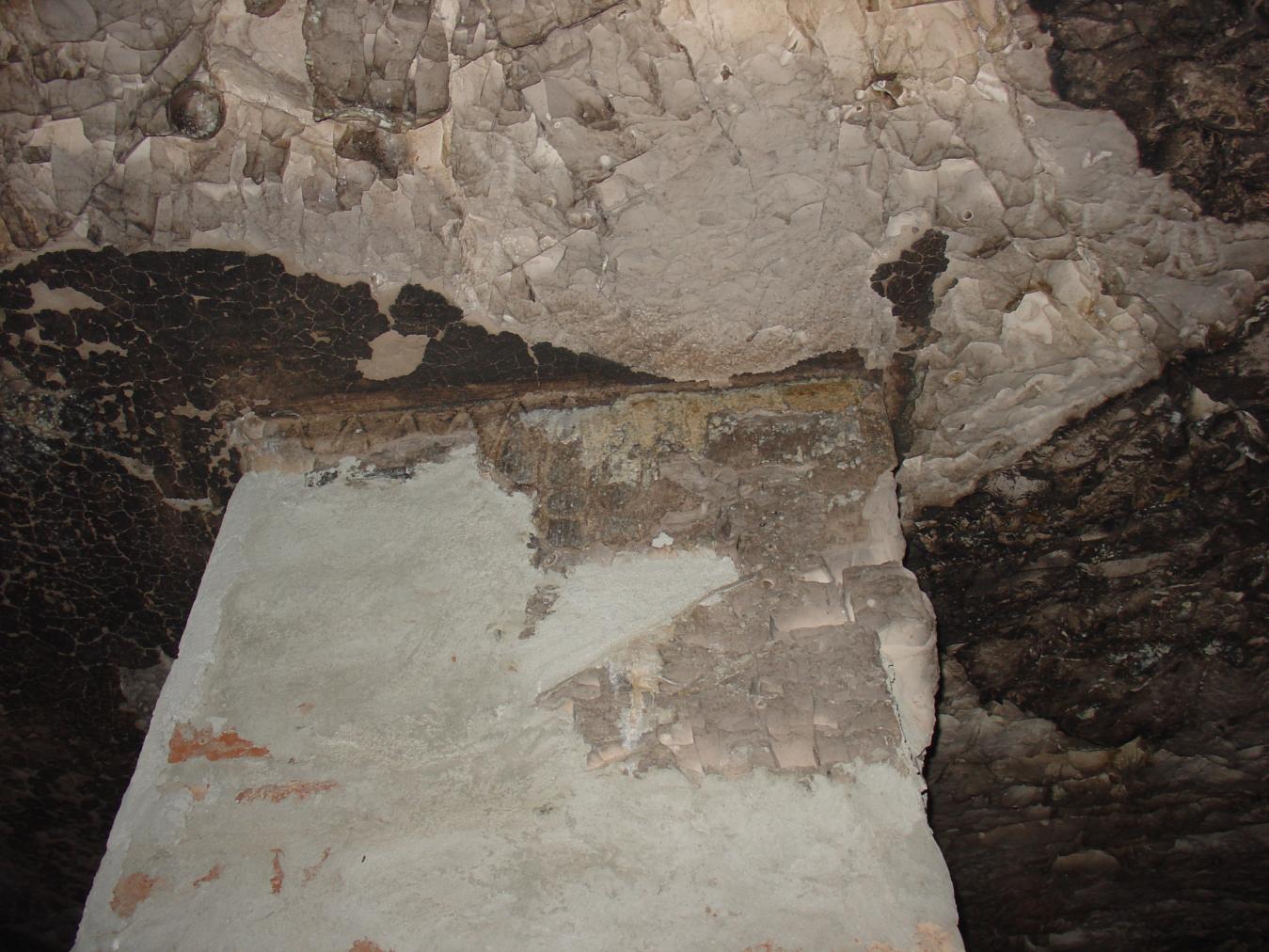
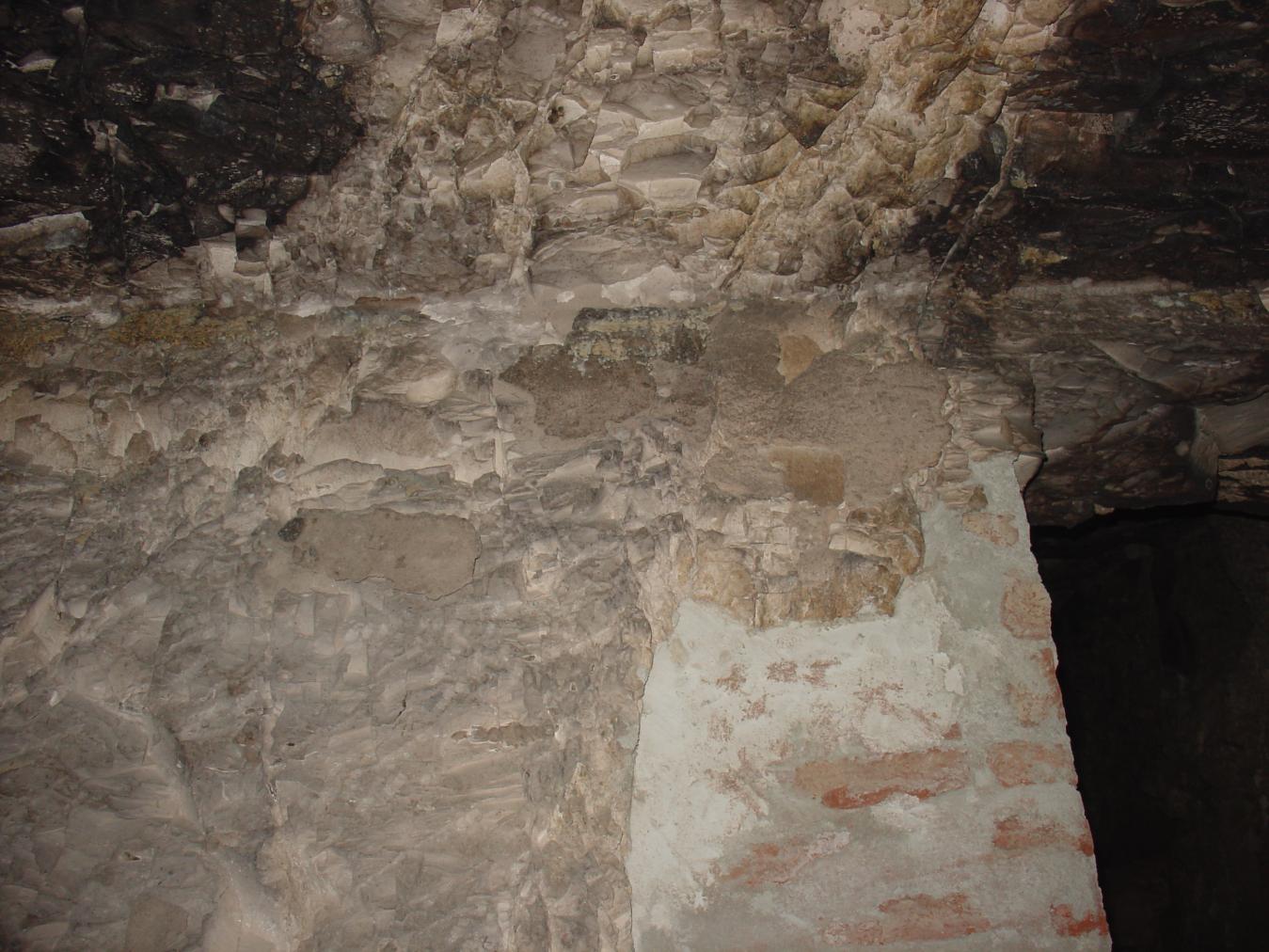
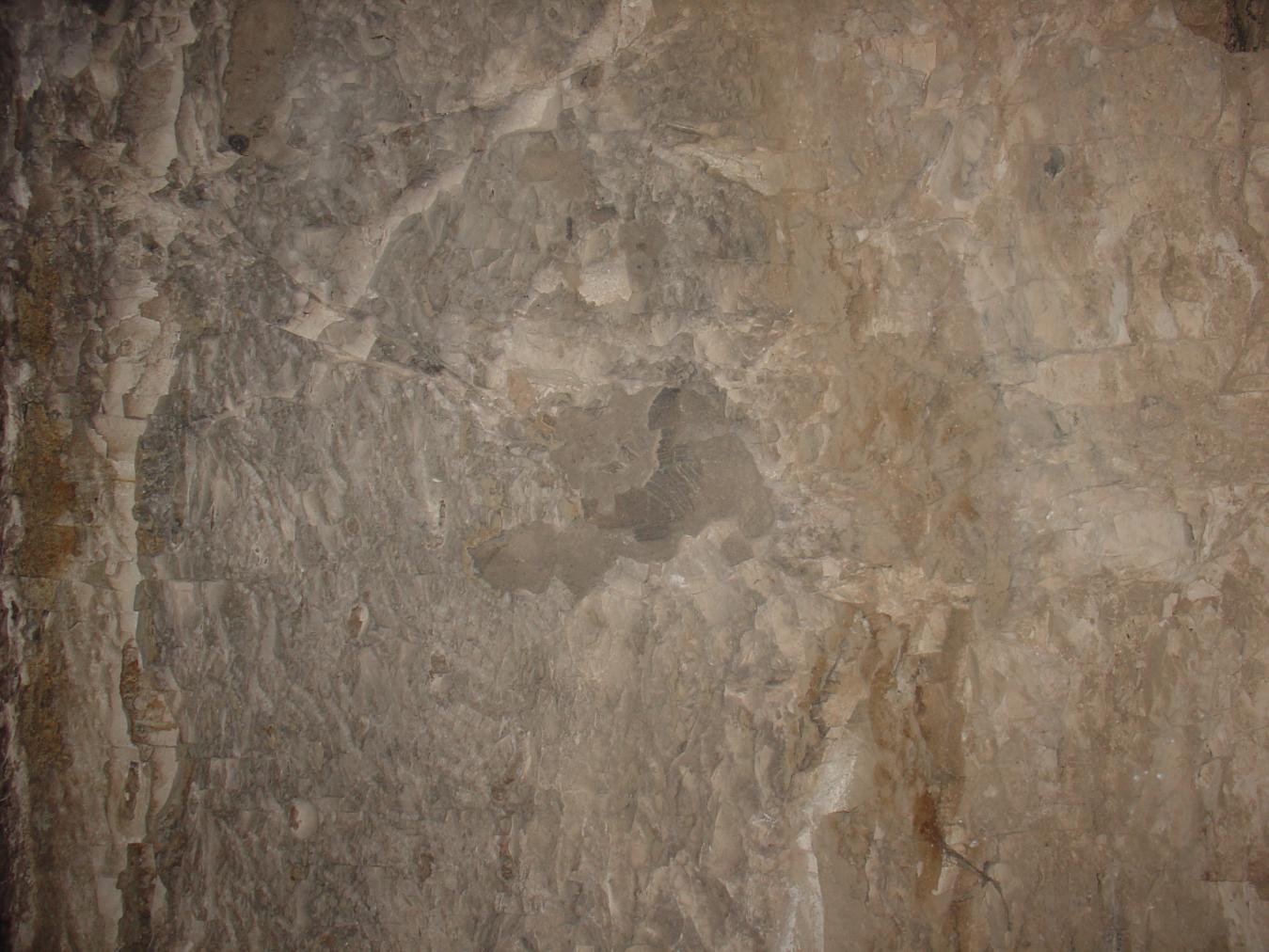
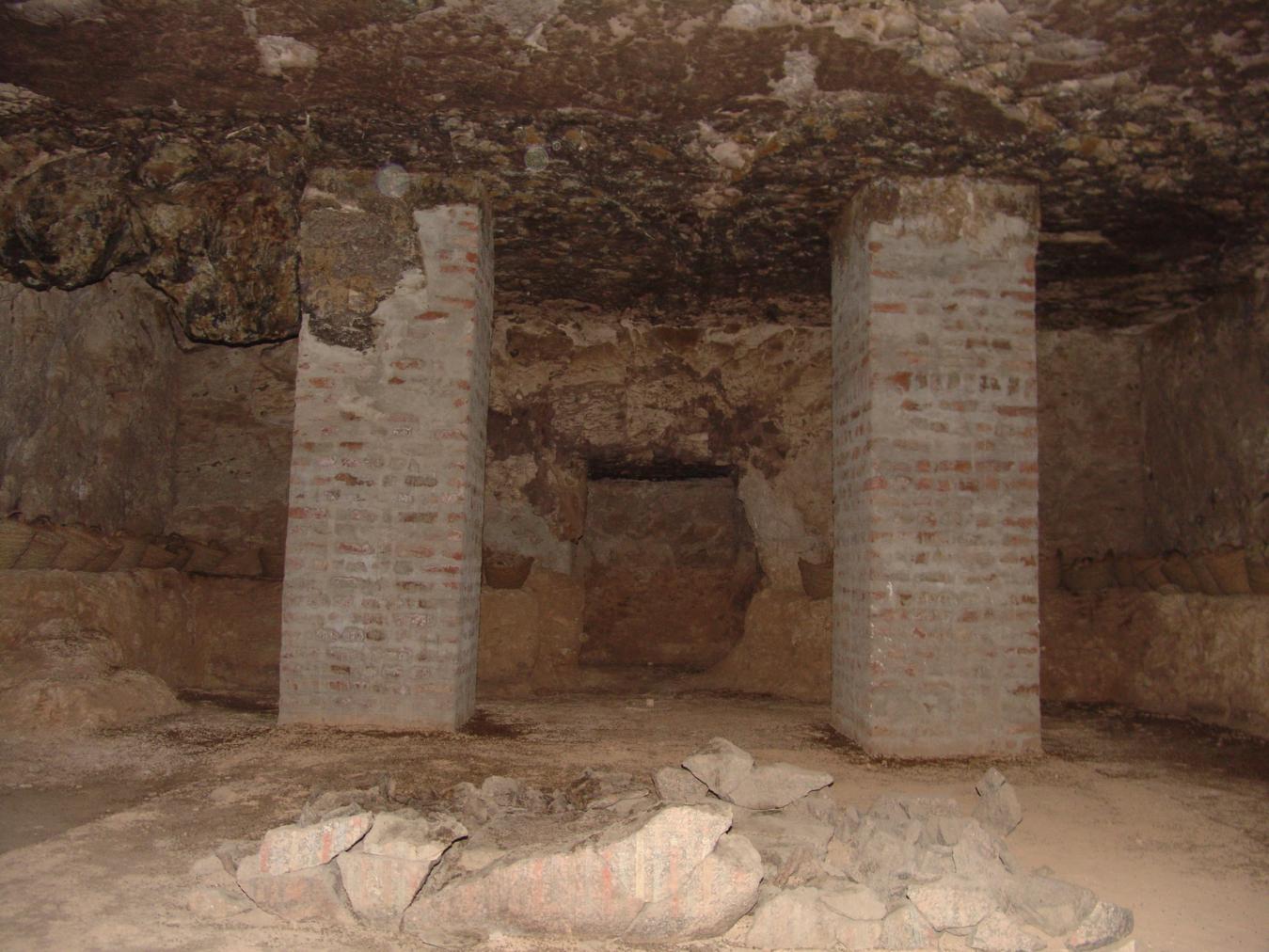
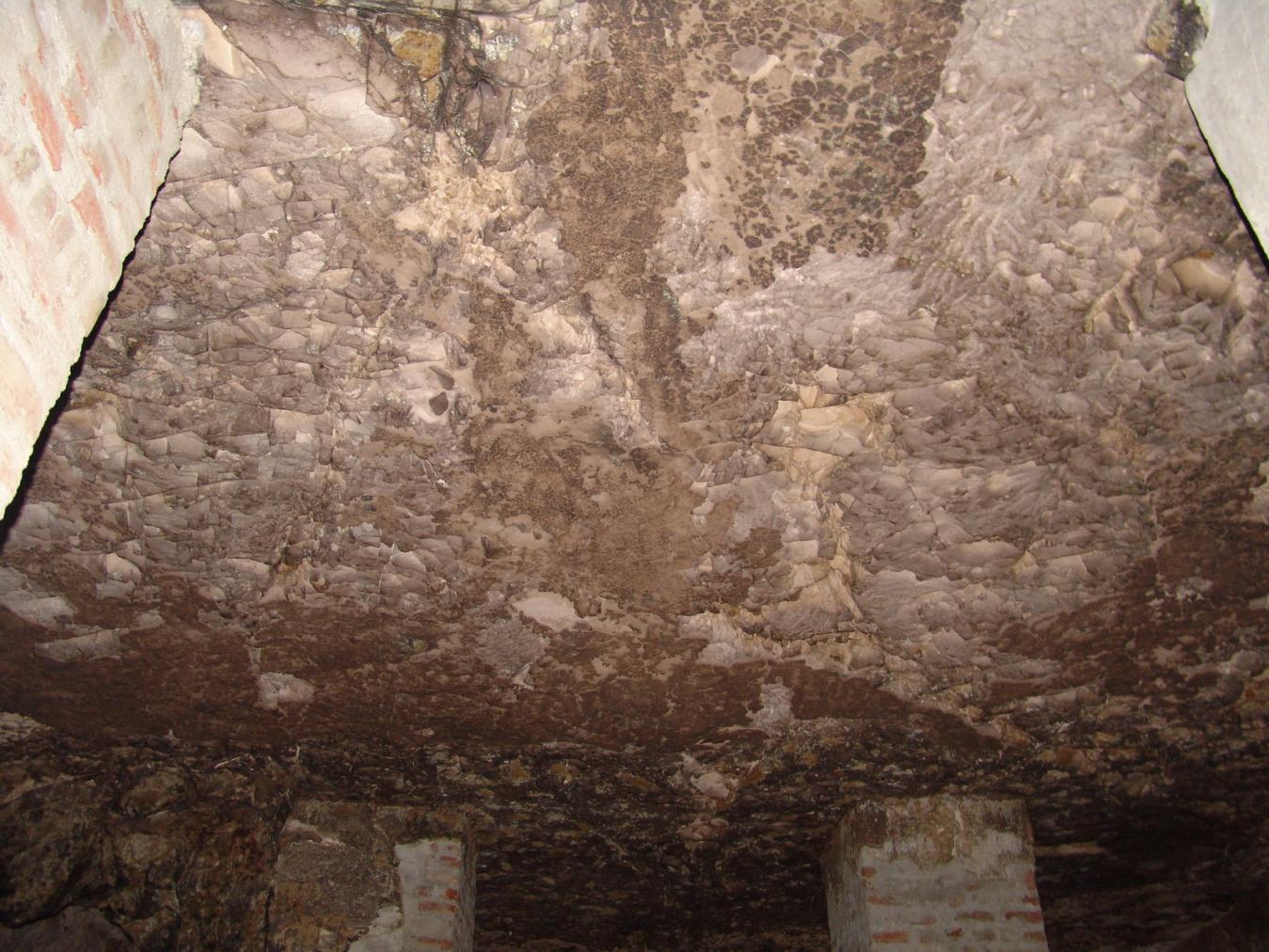
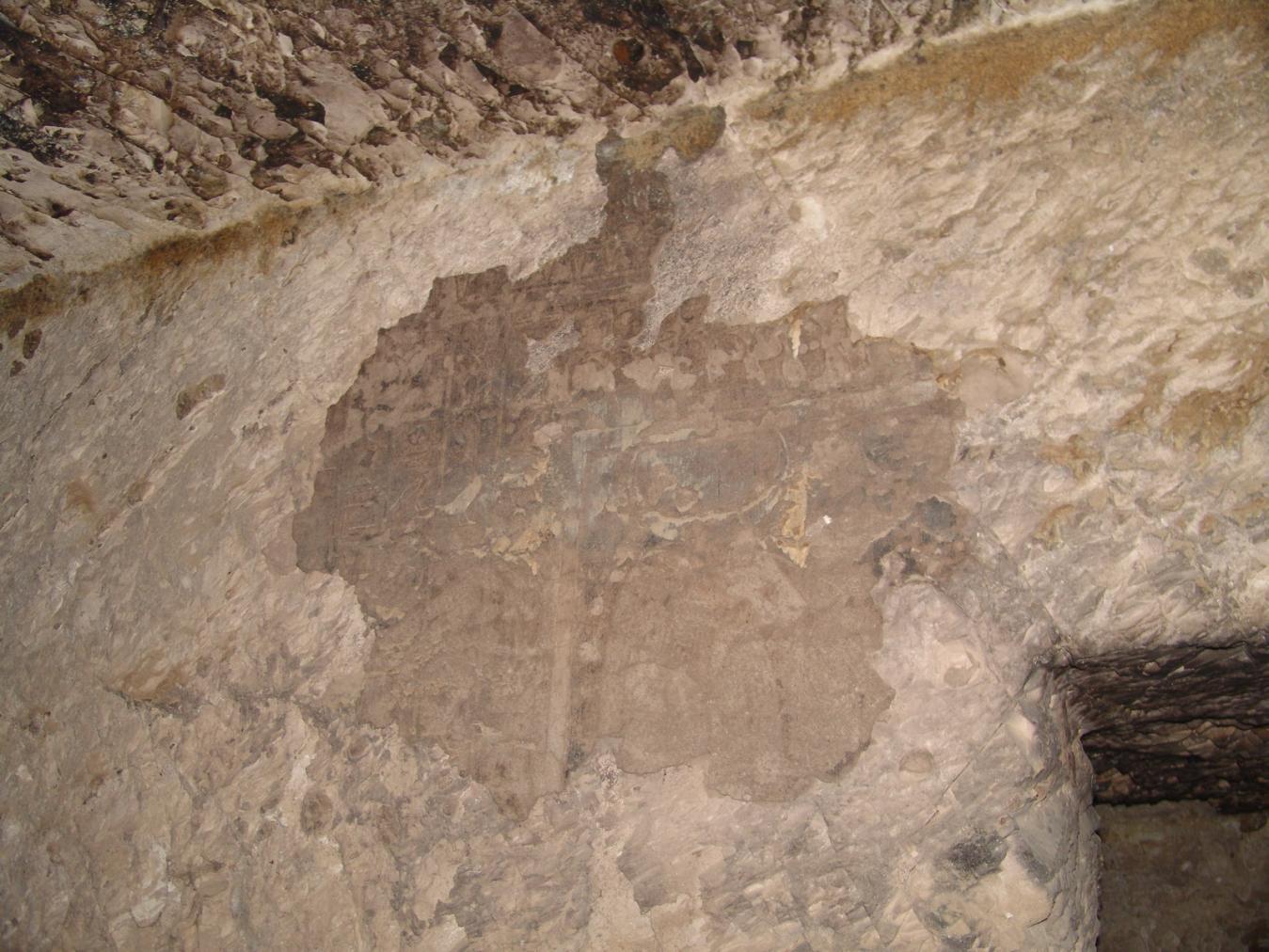
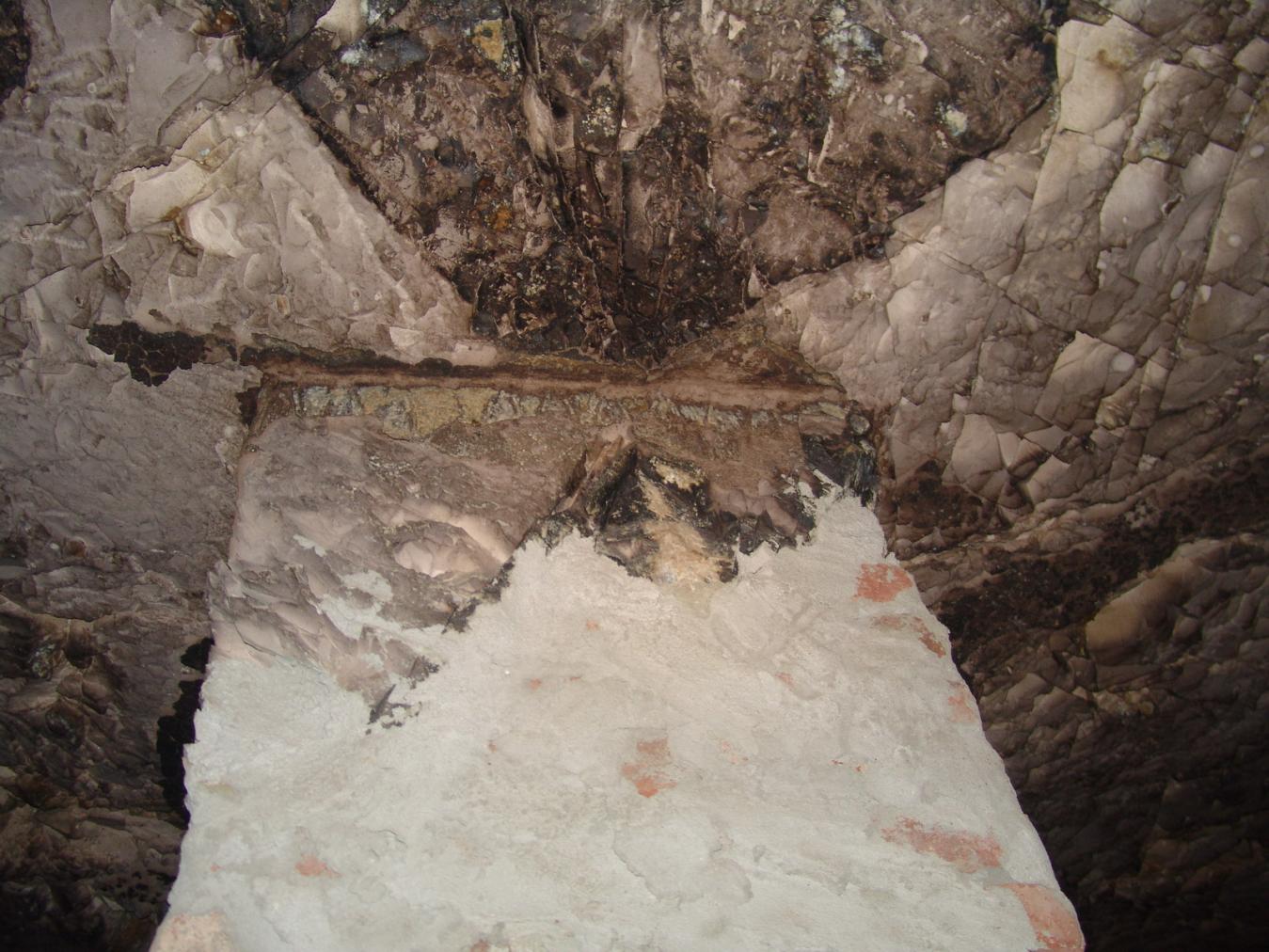
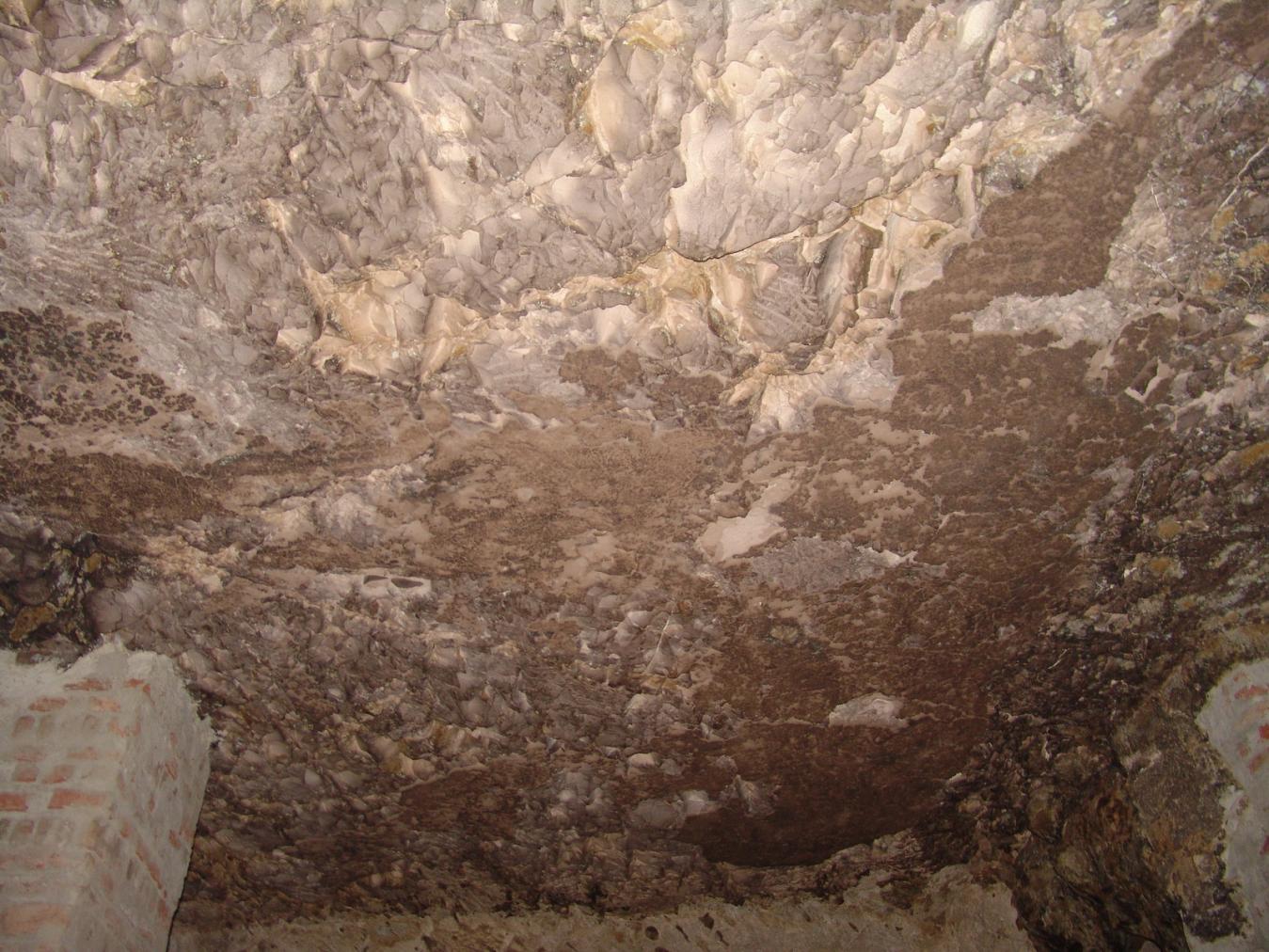
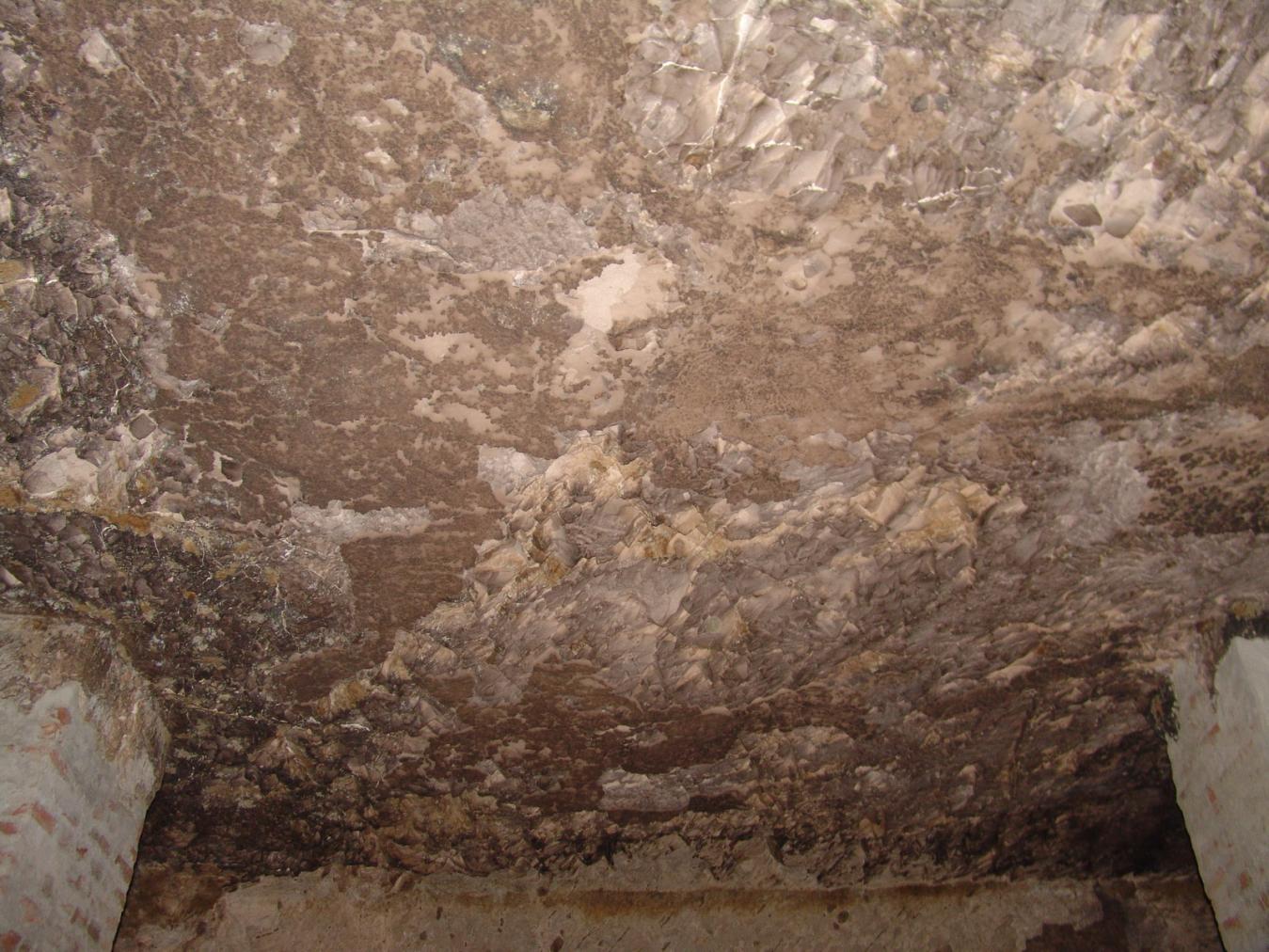
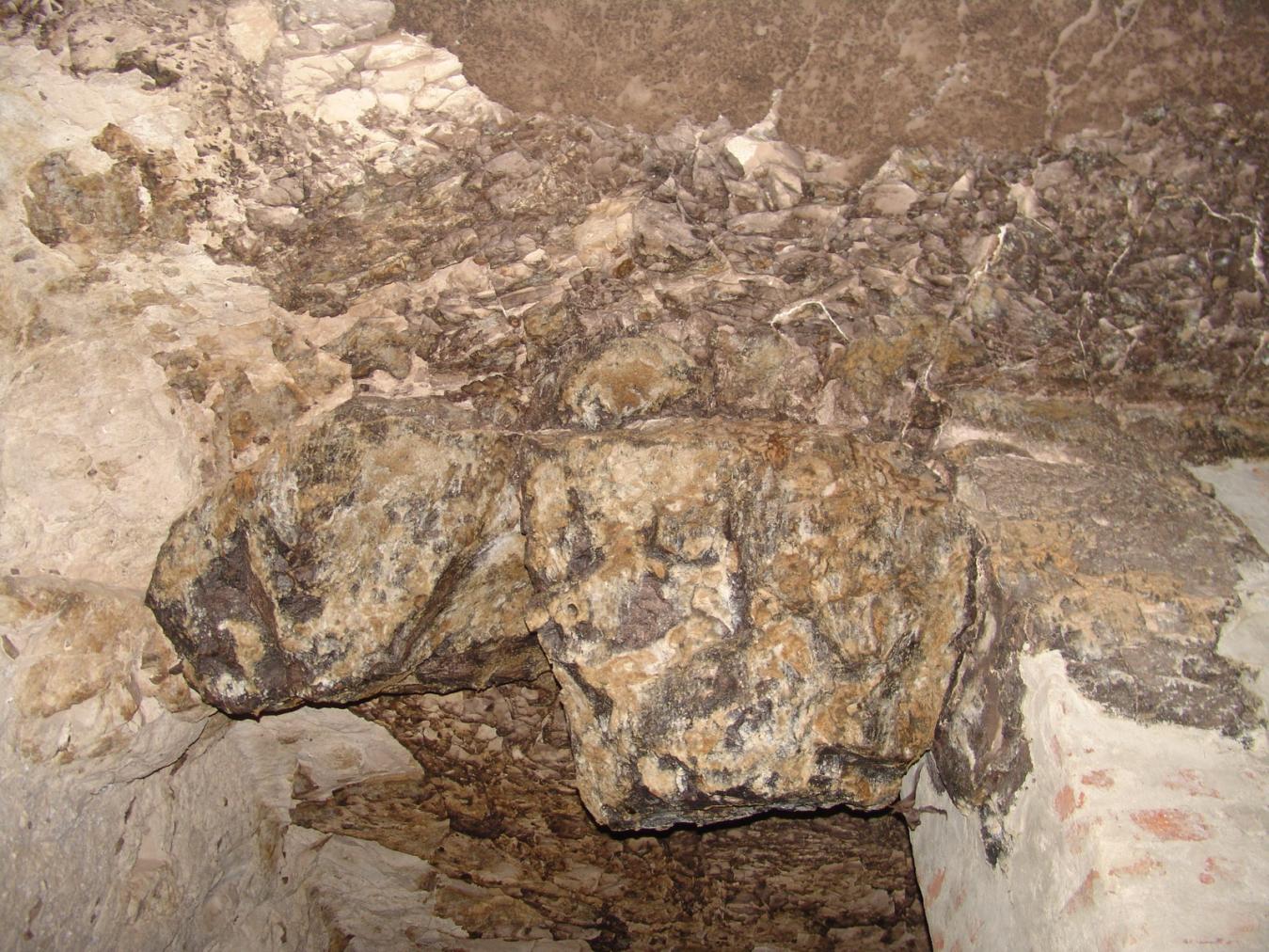
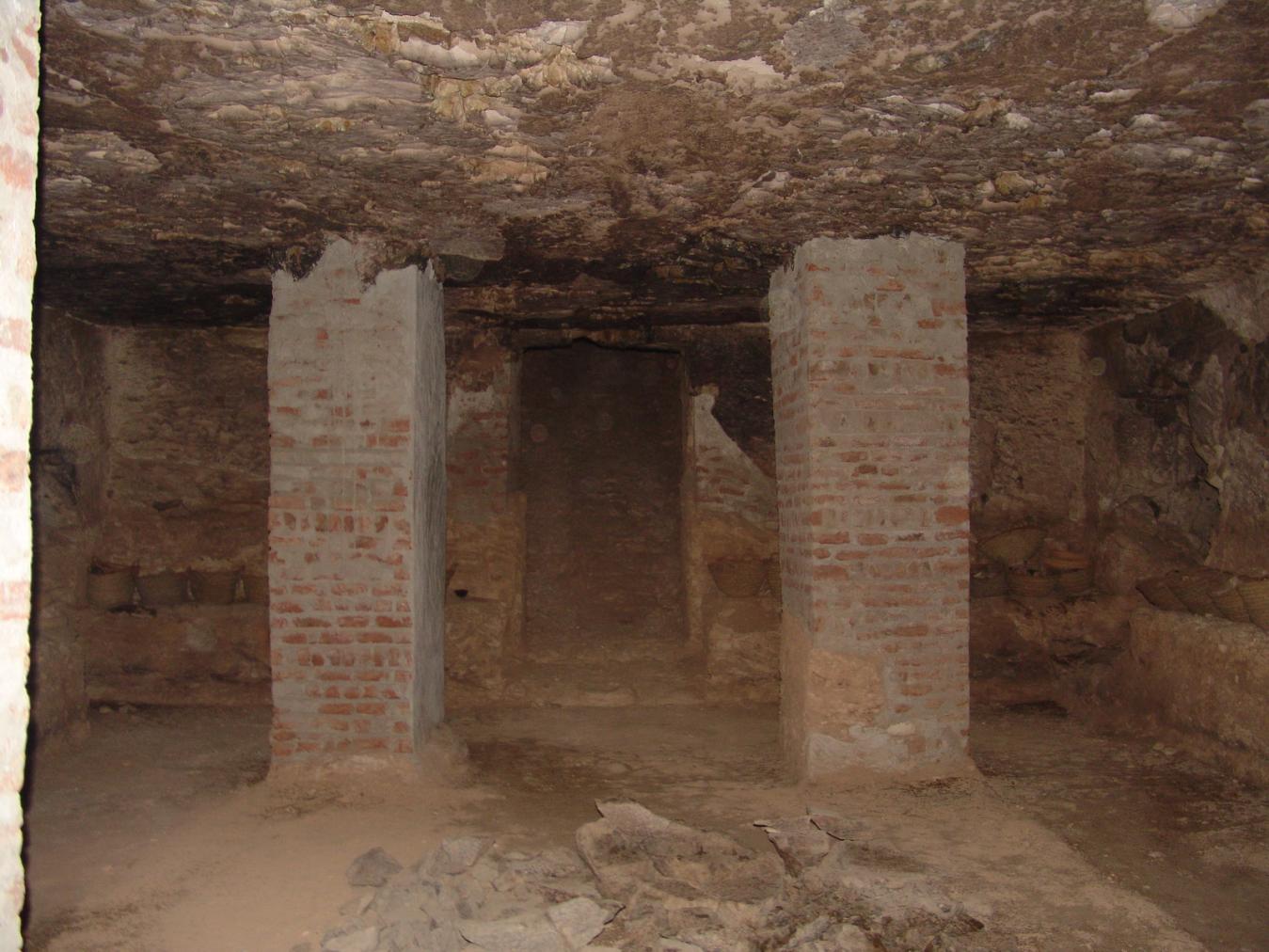
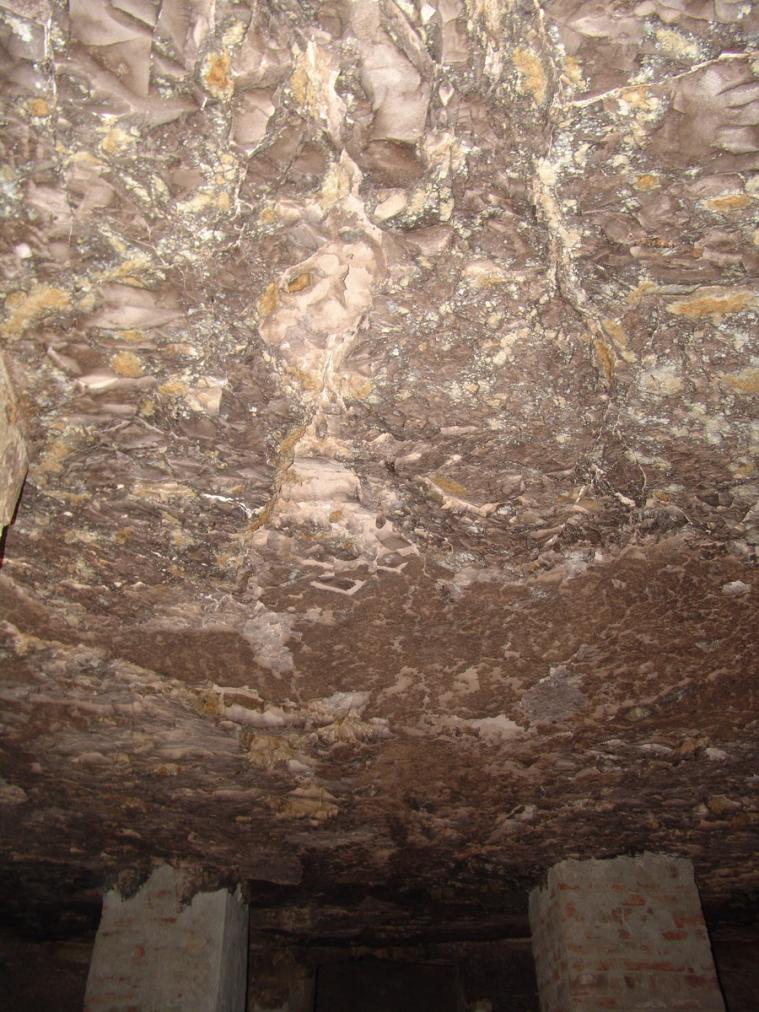
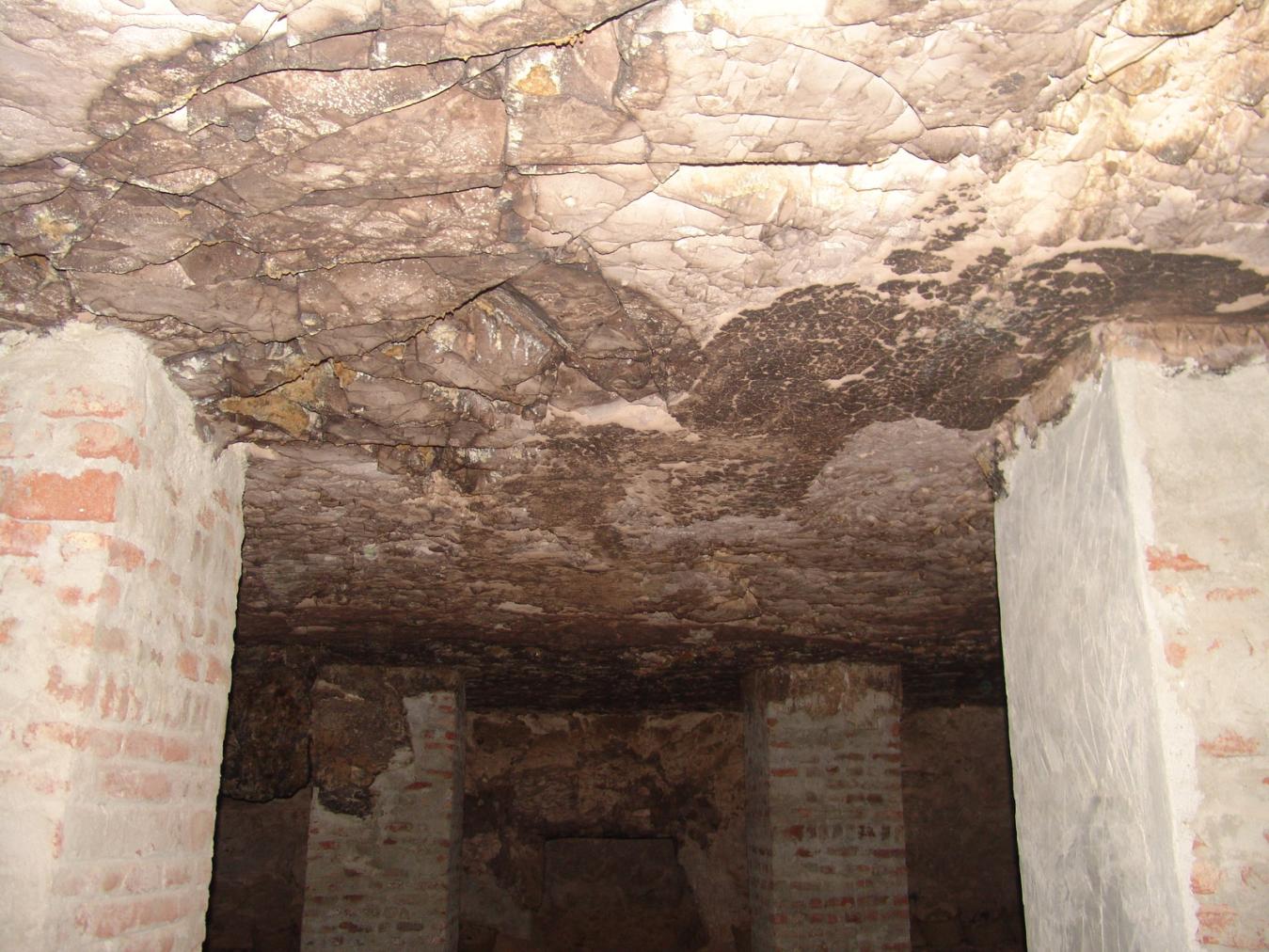
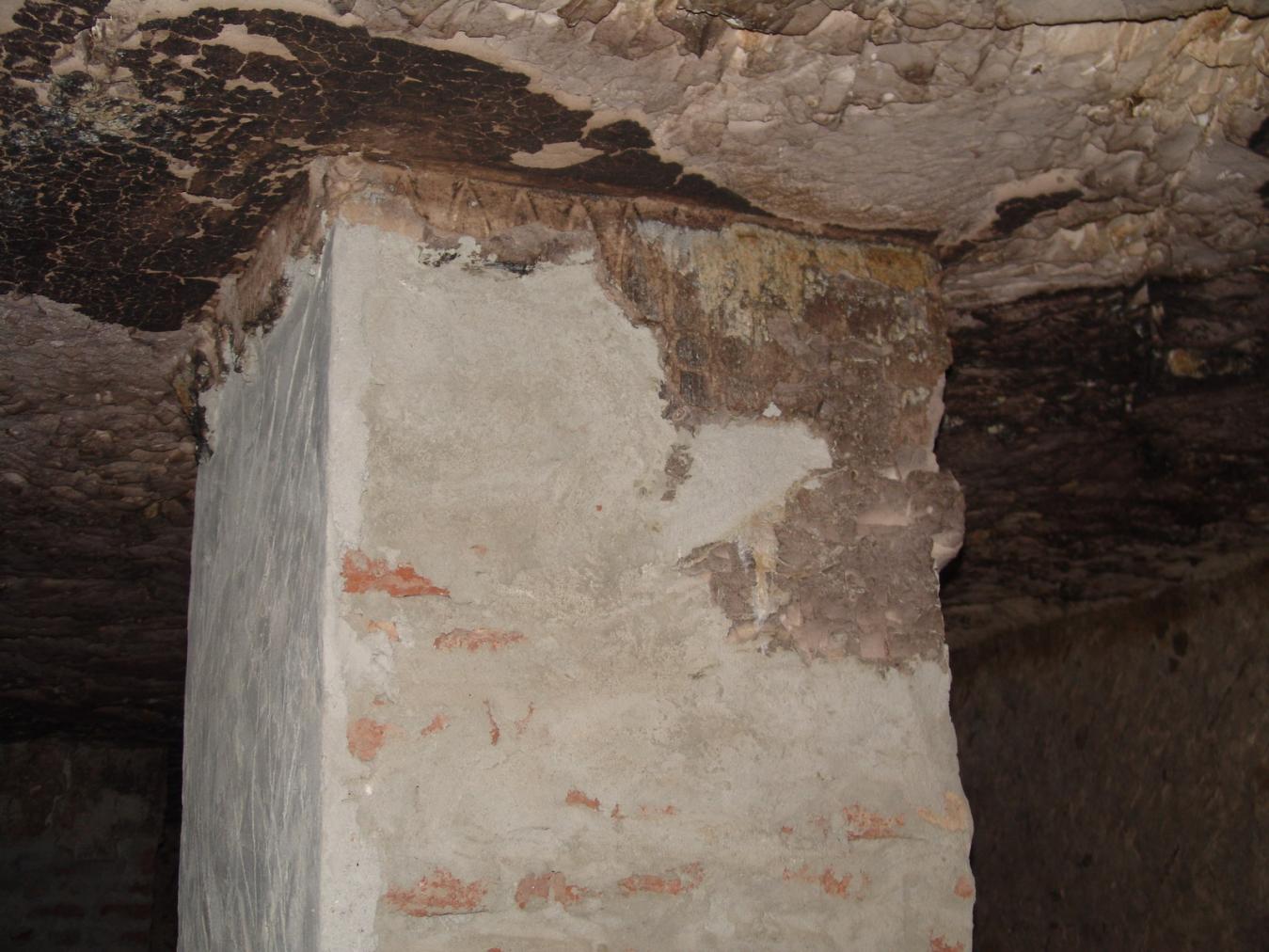
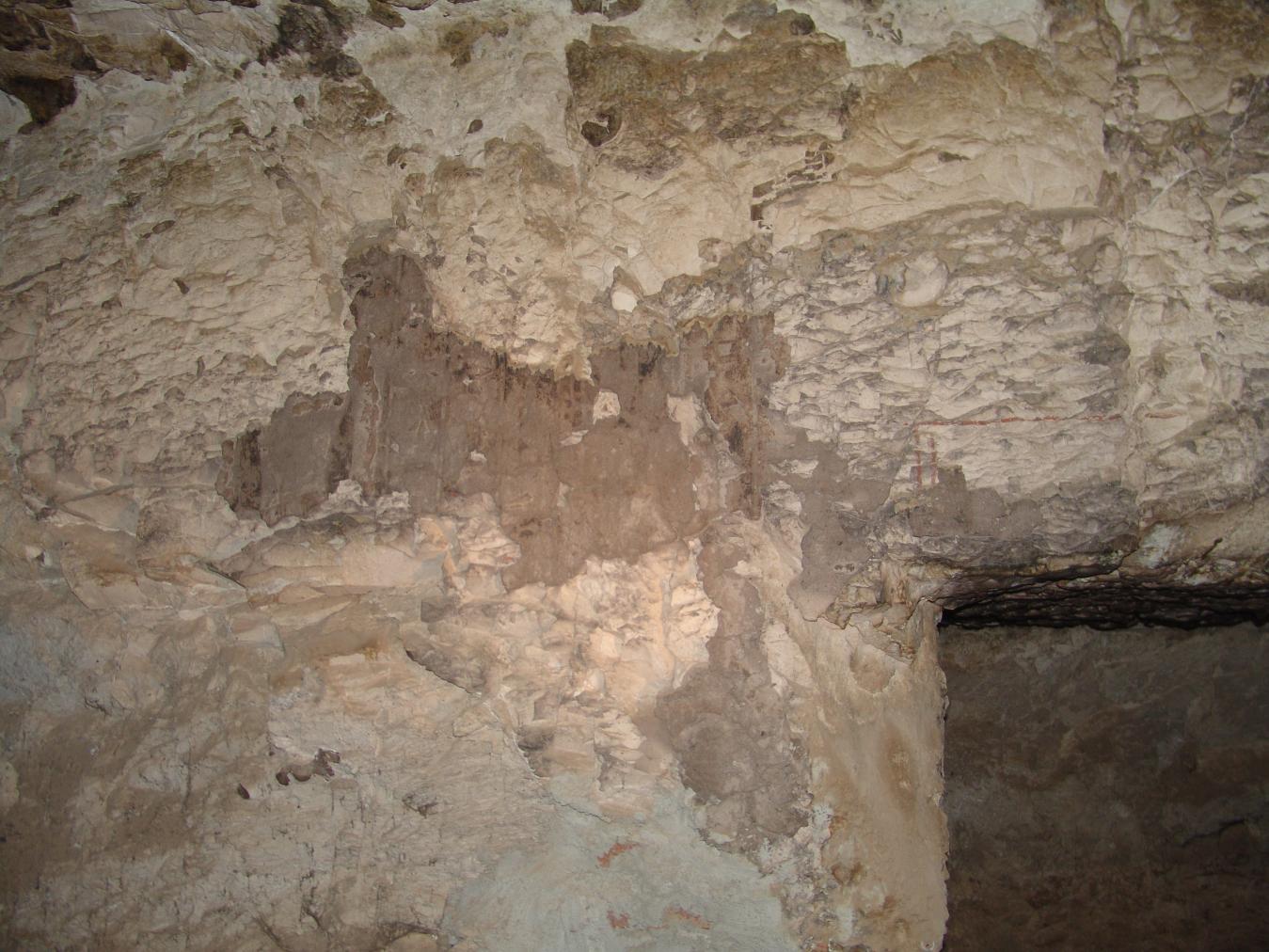
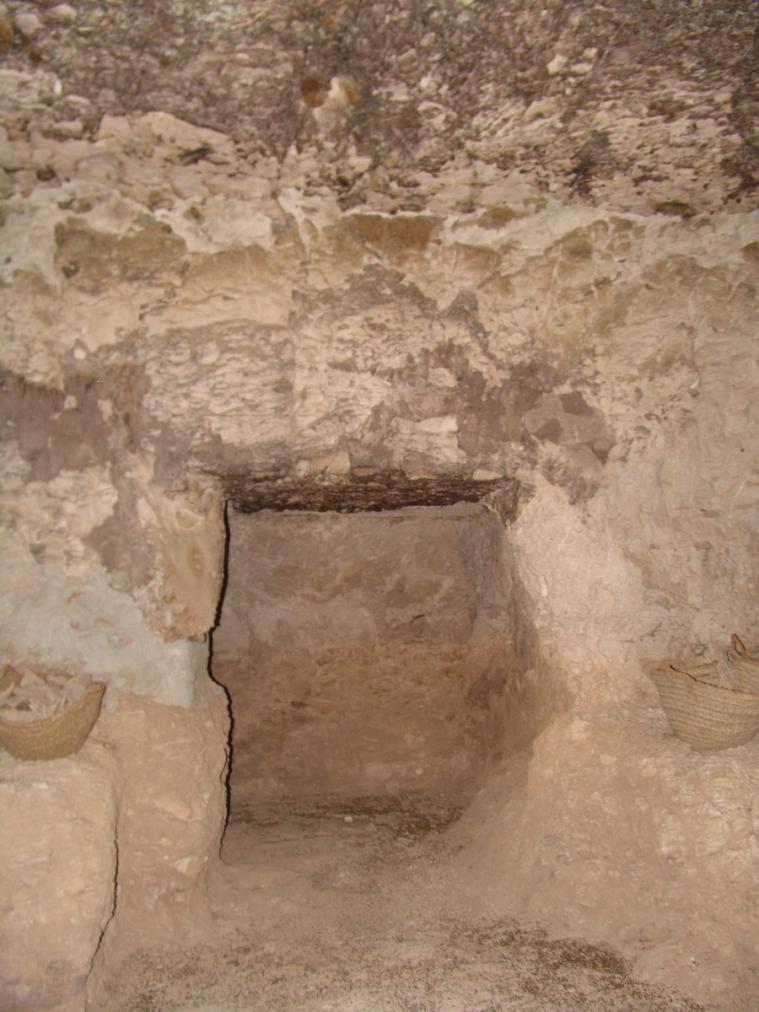
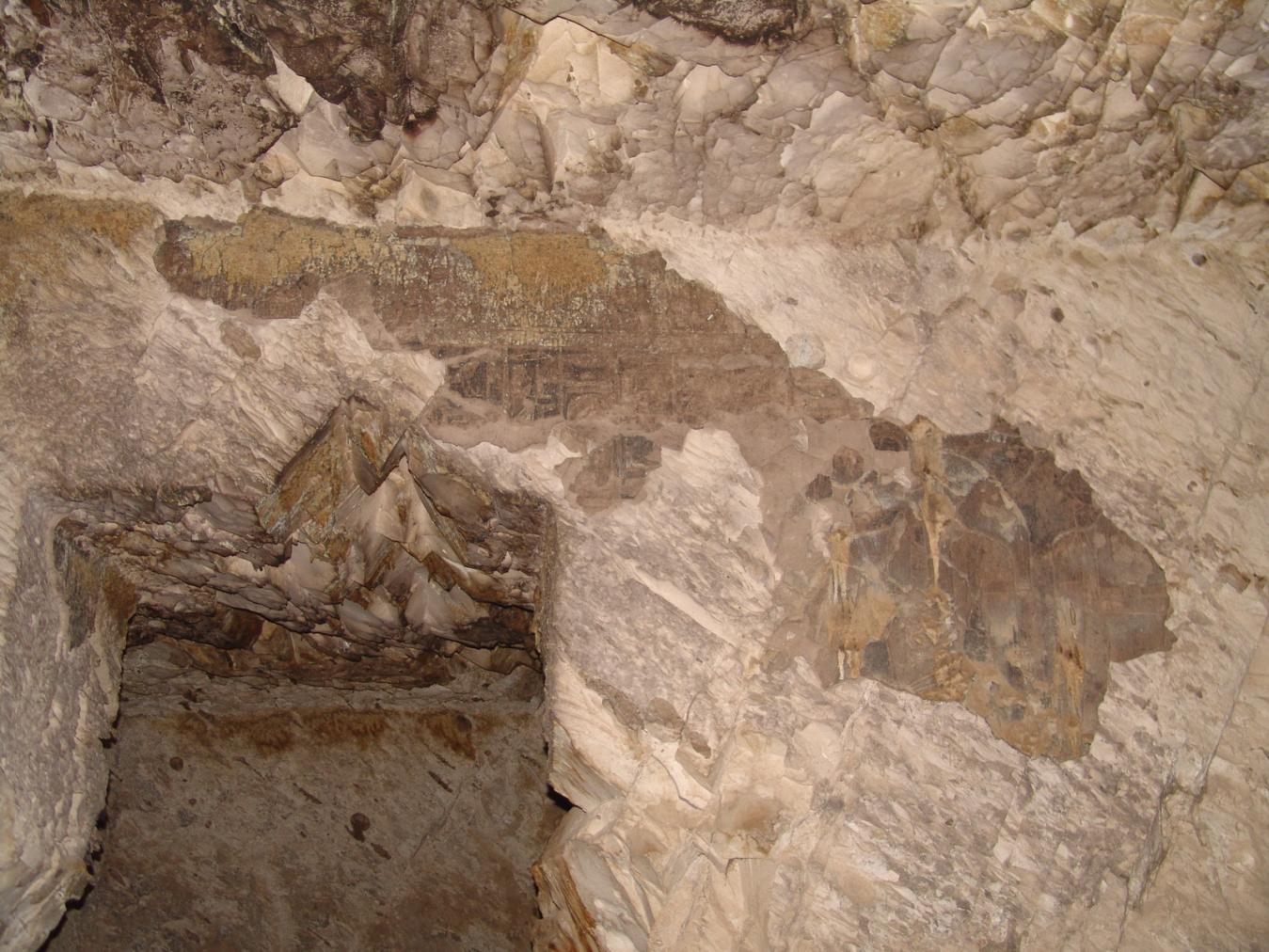
Gate Da
See entire tombThis gate is cut into the western wall of the burial chamber at its southern end and provides access to a small side chamber. The only remaining decoration consists of Nekhbet as a vulture on the left thickness.

Side chamber Da
See entire tombThis side chamber lies to the southwest of the burial chamber. It has little surviving decoration, consisting mainly of fragments of lower, infill packing plaster. As with the burial chamber, there is a sediment line along the walls and an overall loss of decoration at the lower parts, suggesting that it must have flooded in the past.
The only remaining identifiable decoration consists of a Djed pillar on the eastern wall.
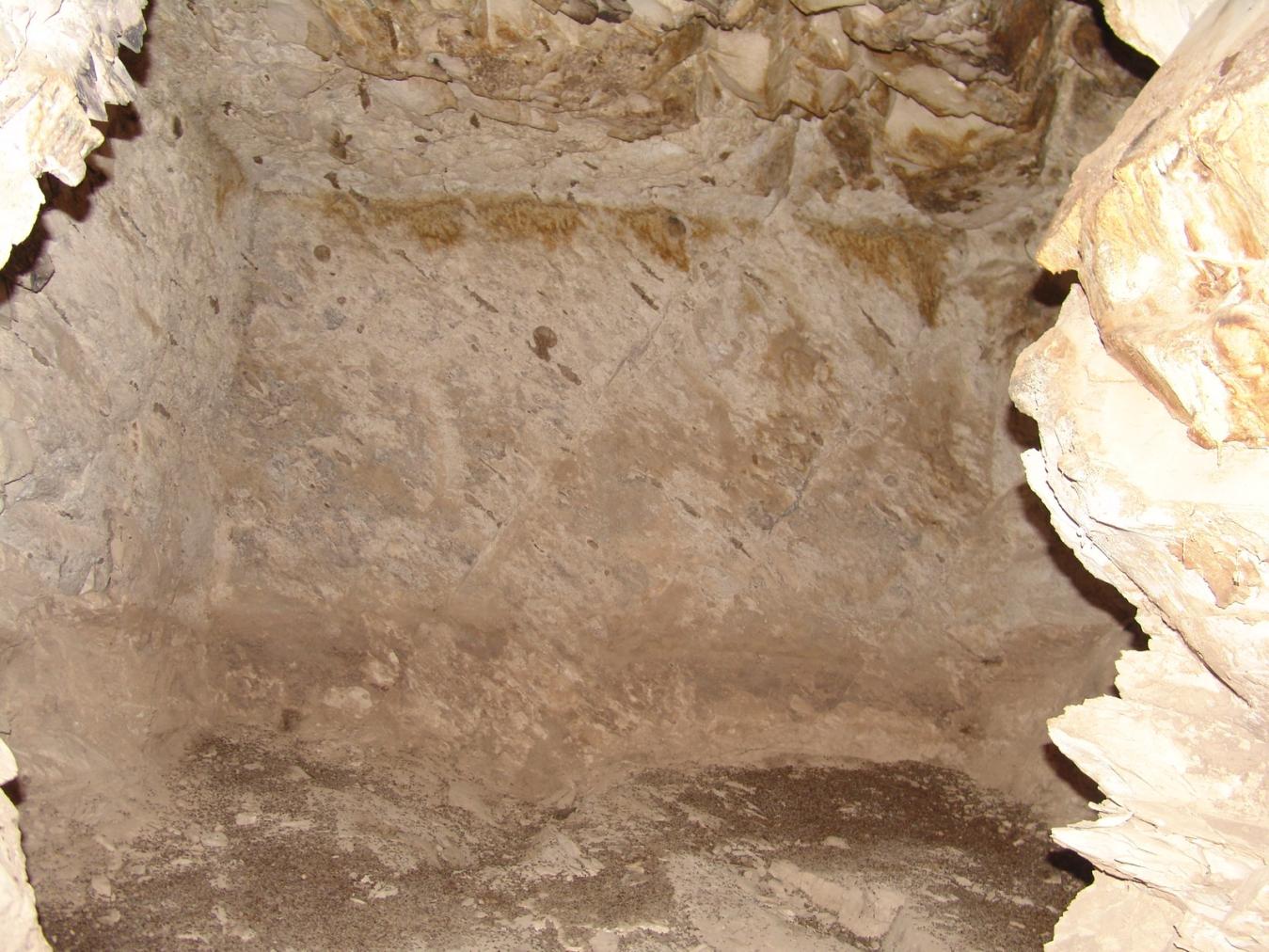
Gate Db
See entire tombThis gate is cut into the northern wall of the burial chamber and lies on axis with the tomb's entrance. The only remaining decoration consists of one red layout paint line on the level of the lintel.

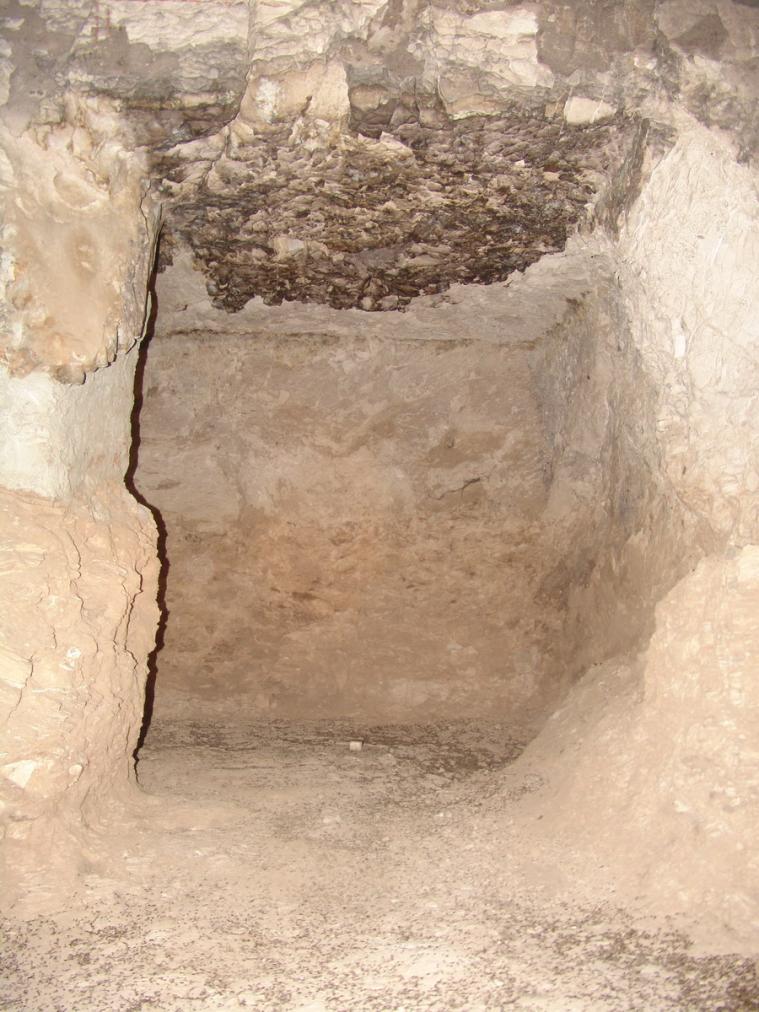

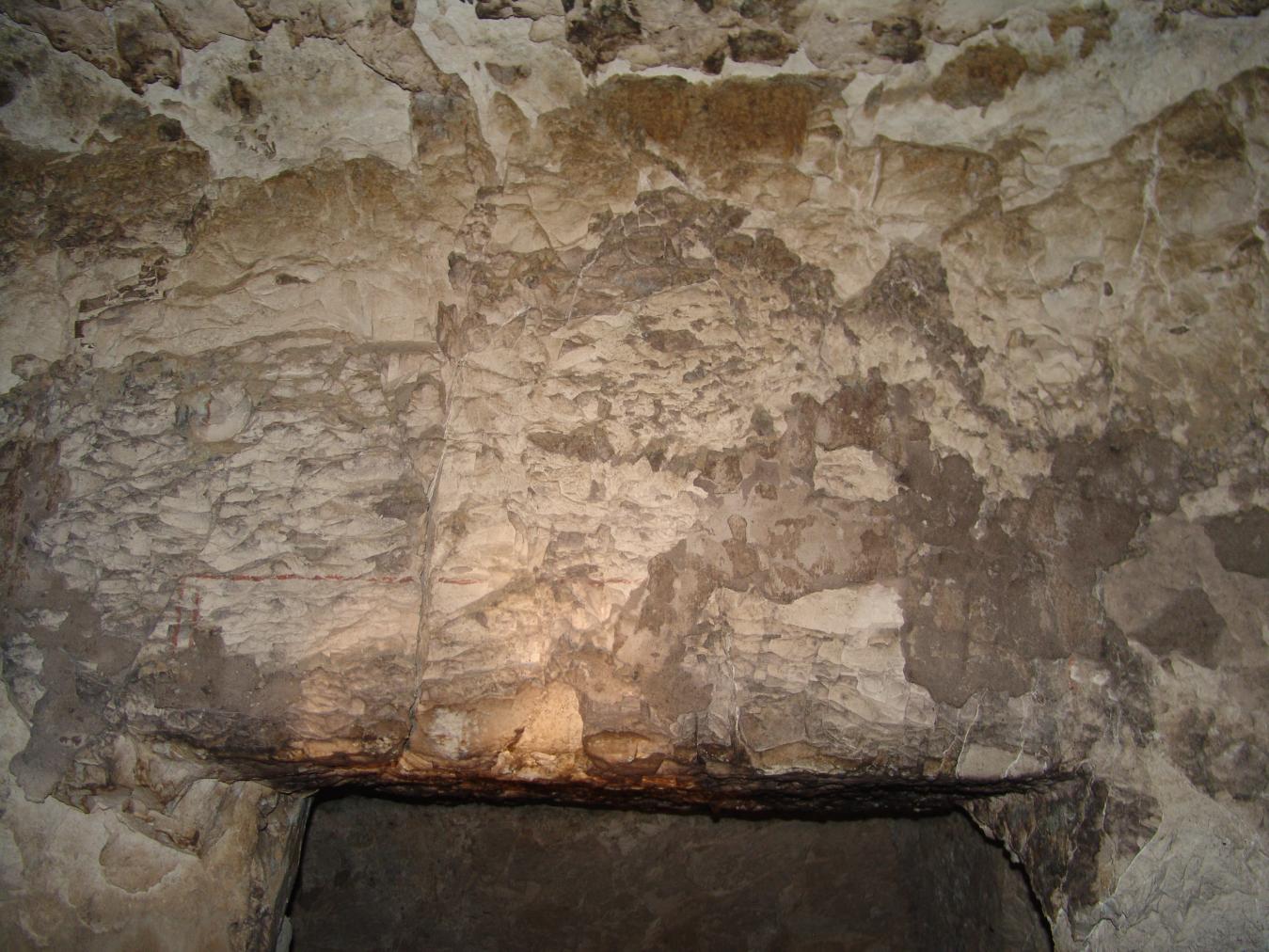
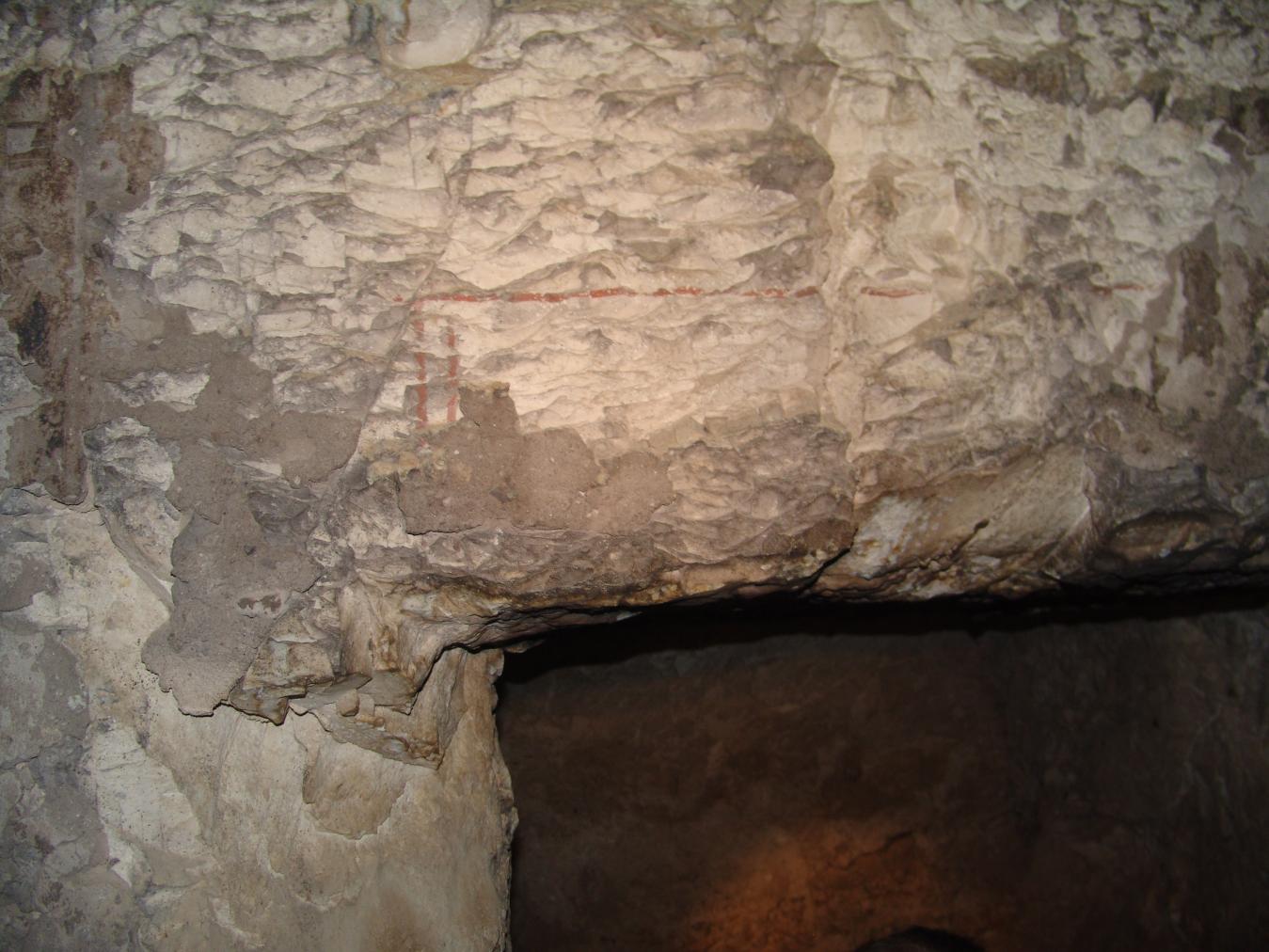

Side chamber Db
See entire tombThis side chamber lies to the north of the burial chamber. As with the burial chamber and side chamber Da, there is a sediment line and the overall loss of plaster at the base of walls, suggesting that the chamber flooded in the past. There is no remaining identifiable decoration on the walls.

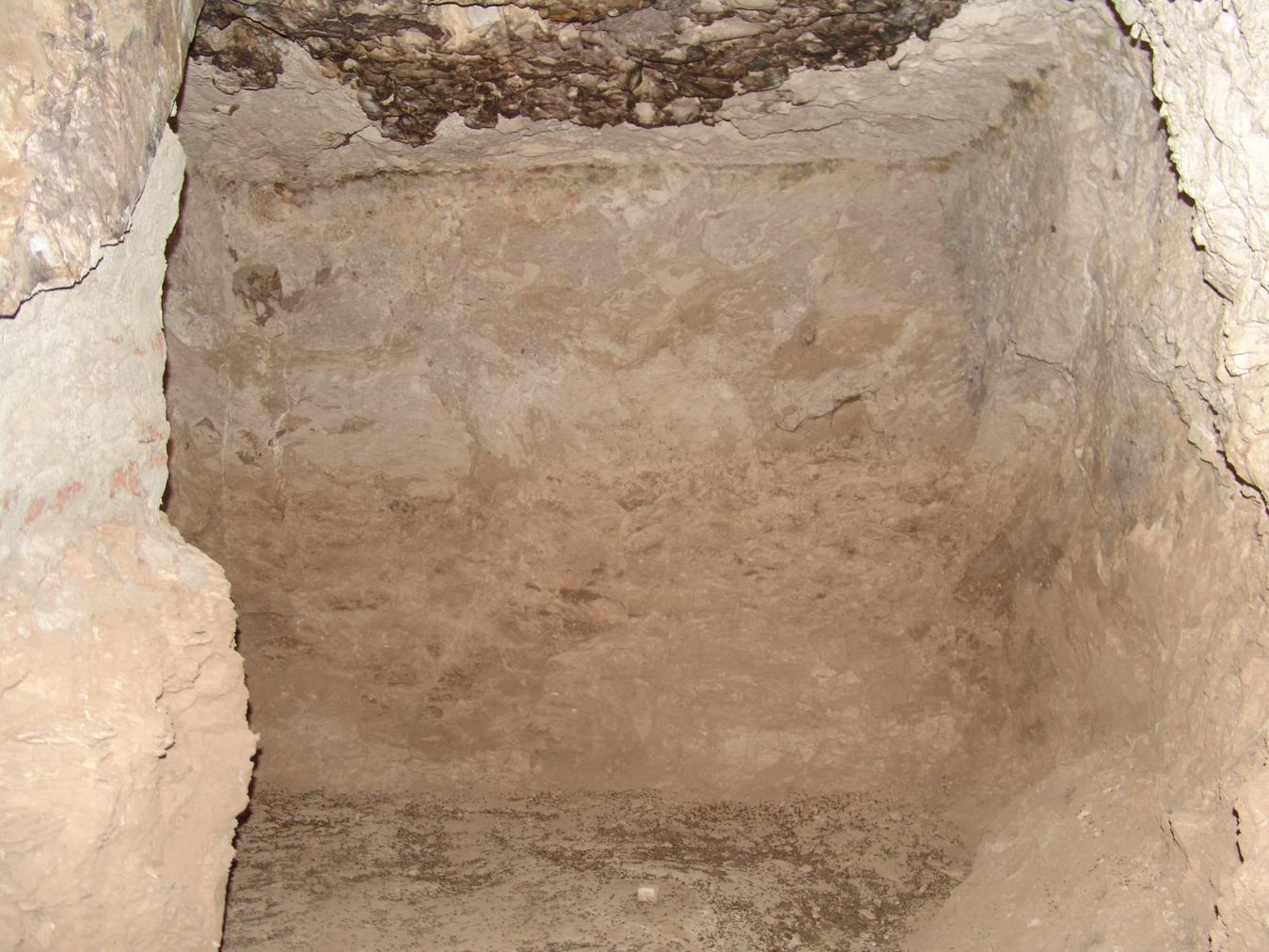
Gate Dc
See entire tombThis gate is cut into the eastern wall of the burial chamber at its southern end and provides access to a small side chamber. There is no surviving decoration on the jambs or lintel.
Side chamber Dc
See entire tombThis side chamber lies to the southeast of the burial chamber. As with the other side chambers at this lower level, there is little surviving decoration consisting mainly of fragments of infill packing plaster. There is also a sediment line and overall loss of decoration at the base of the walls, suggesting that the chamber flooded in the past.
About
About
QV 80 is located on the north side of the main Wadi, and together with QV 66, is considered one of the largest tombs in the Valley of the Queens. It also shares a very similar architectural plan with QV 66. The tomb is entered through a steep stepped Ramp (A) covered by a modern masonry arch that leads down into a chamber (B). The entrance and first door are partially rebuilt with fired brick and cement mortar, and five wooden posts and two beams have been installed to support the ceiling in chamber (B). Two lateral chambers (Ba) and (Bb) are situated on either side of the chamber (B). On axis with the tomb entrance, a stairwell (C) leads to the lower pillared burial chamber (D) with a Bench hewn from the rock wall and a pit in the center of the floor for the Sarcophagus. The four pillars were reconstructed sometime between 1974 and 1981 using modern fired brick. Two small side chambers (Da) and (Dc) are situated on either side of the southern end of the burial chamber (D), and a niche (Db) lies to the north, on axis. The walls of the tomb are fairly flat as it was excavated out of compact marl and therefore little subsequent packing was required. However, the walls were roughly cut and still required a thick layer of plaster before the final decoration. Areas of raised relief painted plaster survive throughout much of the tomb, though only in a fragmentary state. These surviving areas have lost most of their paint layer and the surface is blackened from fire.
QV 80 is attributed to Tuy (or Mut-Tuy), a non-royal wife of Seti I and mother of Rameses II and possibly Henutmire (QV 75). A Cartouche in the tomb preserves only the hieroglyph 'mwt...I', with the rest of the name missing. The title of 'great royal wife' was given to her posthumously. Her father and mother are known from a block at Madinat Habu to be Raia, a Lieutenant of Chariotry, and Ruia. There are a number of statues with her name - she is depicted in a divine birth scene at Madinat Habu, in Ramesside lists at Abu Simbel, and referenced in cuneiform letters to the Hittites. There is a small temple north of the Ramesseum dedicated jointly to Tuy and Nefertari and a cult chapel in the Ramesseum. She probably died in year 22 of her son, Rameses II, or after.
Although recorded by Robert Hay of Linplum (1826) and Carl Lepsius (1844), QV 80’s entrance was reburied by the time of Ernesto Schiaparelli's mission (1903-1905). It was rediscovered and excavated by the Franco-Egyptian Mission in 1972-76. Many original pharaonic finds, as well as vestiges of later occupation were recovered. Elizabeth Thomas relied on the notes of Hay and Lepsius for QV 80's description and probable location. Hay relates the form and layout of the tomb to those of the Valley of the Kings and notes only parts of two figures in the "highest relief", which he says are of the best quality in the QV. Hay also records the presence of plaster destroyed by fire, and the broken pillars, presumably in chamber (D). Currently the tomb is not open to visitation and the entrance is closed by a steel grid door covered with wire mesh.
Noteworthy features:
QV 80 is attributed to Tuy (or Mut-Tuy), a non-royal wife of Seti I and mother of Rameses II and possibly Henutmire (QV 75). With QV 66, it is considered one of the largest tombs in the Valley of the Queens.
Site History
The tomb was constructed in the 19th Dynasty. It was substantially reused and damaged in antiquity. The reuse dates to the Third Intermediate, Roman, and Coptic Periods.
Dating
This site was used during the following period(s):
Exploration
Conservation
Conservation History
According to the GCI-SCA, previous interventions to stabilize the tomb include the erection of shoring in chamber (B) to support the fractured ceiling rock. The shoring consists of two wooden horizontal beams, each supported by two wooden posts, and an additional fifth post in direct contact with the ceiling. The four pillars in burial chamber (D) were rebuilt using modern fired brick, and the axial door jambs have been similarly rebuilt, either partially or completely. Areas of wall rock loss adjacent to a door in chamber (B) were also filled. These rock stabilization interventions, both permanent and temporary, are in good condition. The ceiling of the entrance Ramp (A) has also been rebuilt and an arched entrance cover with retaining walls and stairway has been constructed.
Site Condition
According to the GCI-SCA, the tomb is in a generally in good condition. Chamber (B) has three major ceiling fractures and loss of rock in doorways. Fracturing is additionally present in the ceiling of side chambers (Ba) and (Bb), and in the ceiling of stairwell (C) and burial chamber (D), continuing to the east wall. There is little rock loss in the tomb in general except in the doorways and the four pillars of the burial chamber (D). This loss indicates that during the many decades that the tomb has been excavated, flooding has likely occurred, as these are the most exposed and fragile parts of the tomb structure.
Two principal fault zones are present in the tomb, one running laterally (east-west) in chamber (B), and side chambers (Ba) and (Bb) where there is adjacent rock loss. The other fault zone is visible in the northwestern corner of the burial chamber (D). Salt infill of fractures and faults is present throughout the tomb. Extensive salt efflorescence and large crystal growth is present on the east wall of the burial chamber (D).
The extensive loss of decoration in QV 80, in most cases leaving the rock completely exposed, can be partially attributed to fire, partially to flooding in the lower parts of the tomb, and to fracturing of the rock due to widening of joints filled with salt. A large area of painting survives in chamber (B) in the southeast corner, where the lower half of the wall appears to have been protected from fire, perhaps from overplastering during later reuse of the tomb. There are traces of this overplastering still remaining on the surface, and only very small areas of paint are left. The paintings in stairwell (C) and burial chamber (D) have suffered severe fire damage. Only small patches of plaster survive where the paint layer has been essentially carbonized and the plaster layer is fractured from the heat. Some decorated plaster survives at the lower half of walls in the upper chambers of the tomb (B), (Ba) and (Bb), but a sediment line and the overall loss of decoration at the base of walls in the lower chambers suggest that the lower parts suffered from the past flooding events. Substantial bat presence was noted by the GCI-SCA assessment team from 2006-2008 and significant quantities of crystalline bat urine and bat feces have been observed and the resulting odor is strong. There are also many insect nests covering the surfaces of the tomb. Evidence of reuse in antiquity is also a principal reason for its poor condition.
Hieroglyphs
Queen Tuy
 Great Royal Wife, God's Wife, King's Mother, Tuy
Hmt-wrt-nswt Hmt-nTr mwt-nswt twy
Great Royal Wife, God's Wife, King's Mother, Tuy
Hmt-wrt-nswt Hmt-nTr mwt-nswt twy











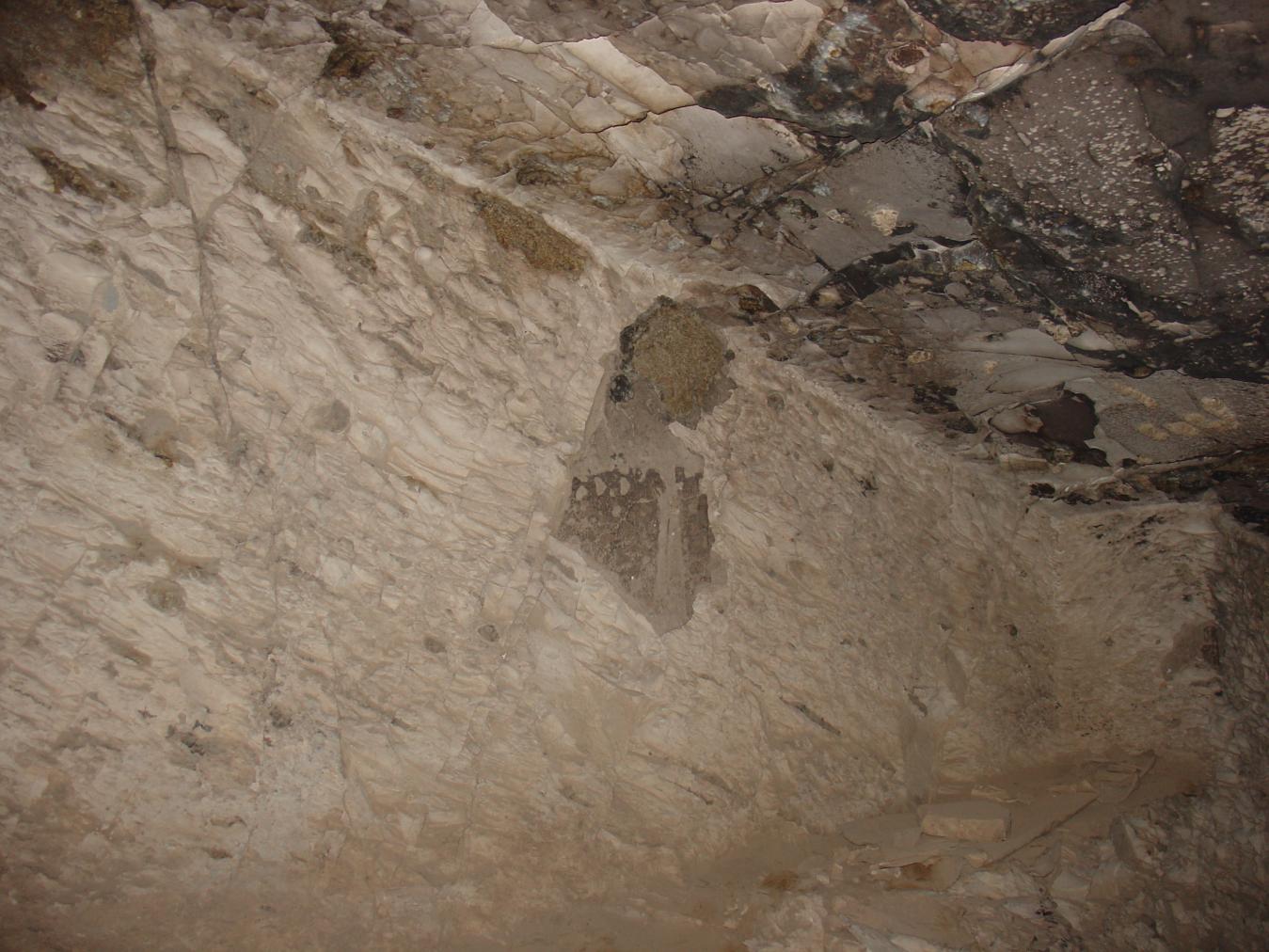
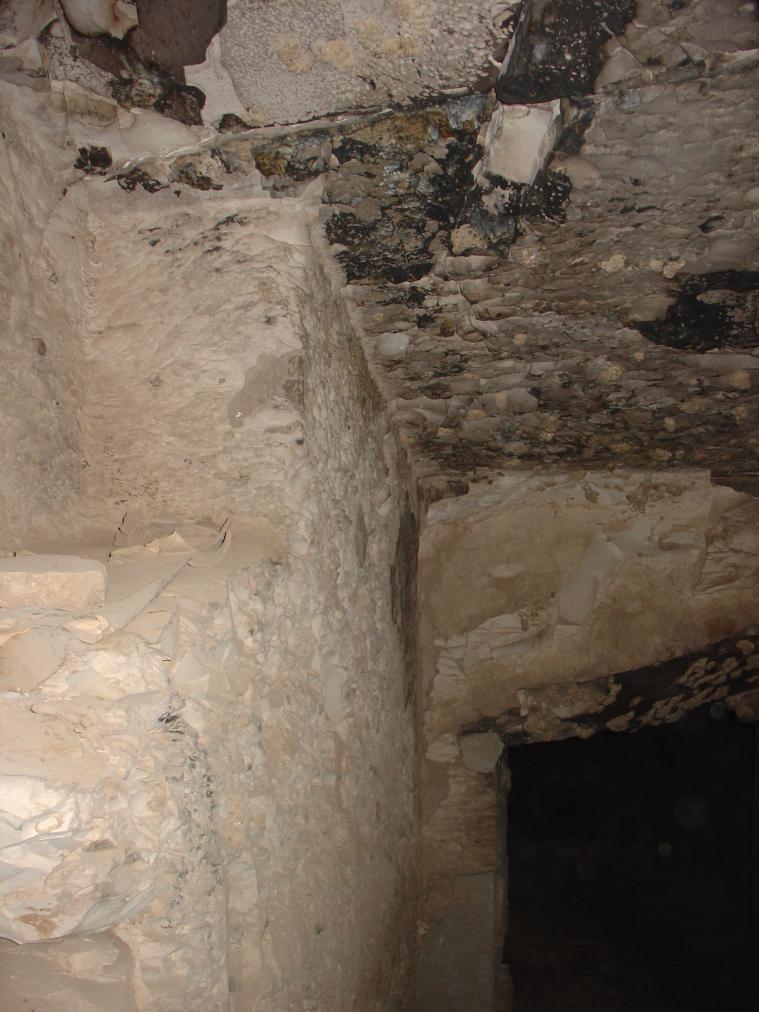
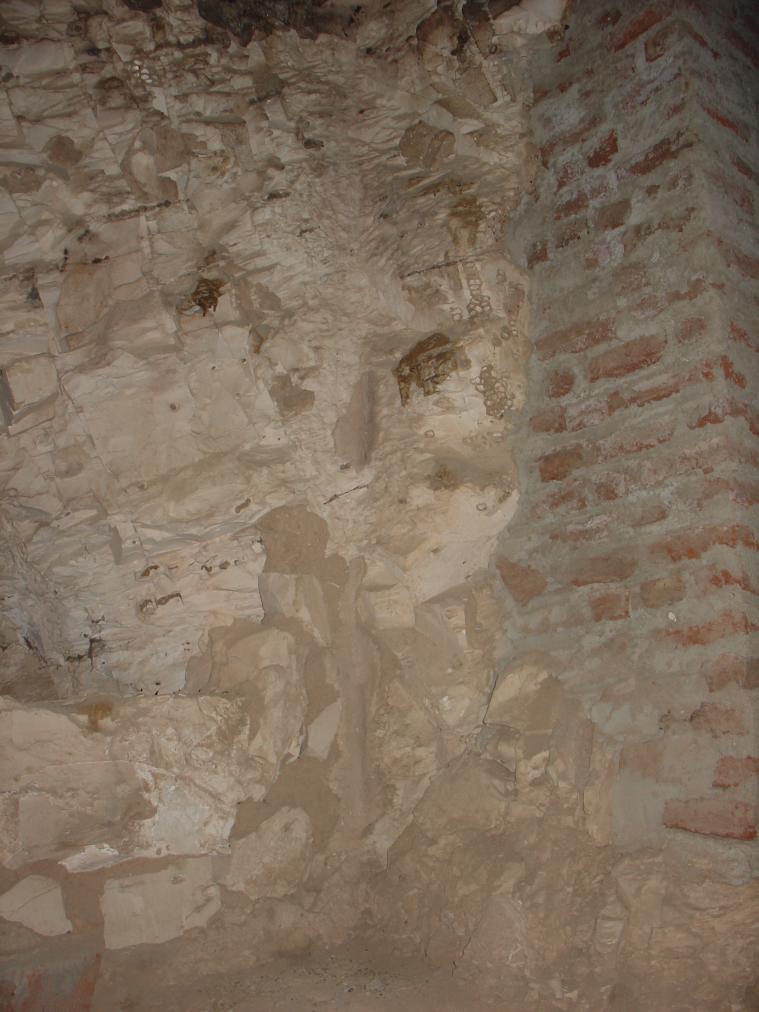
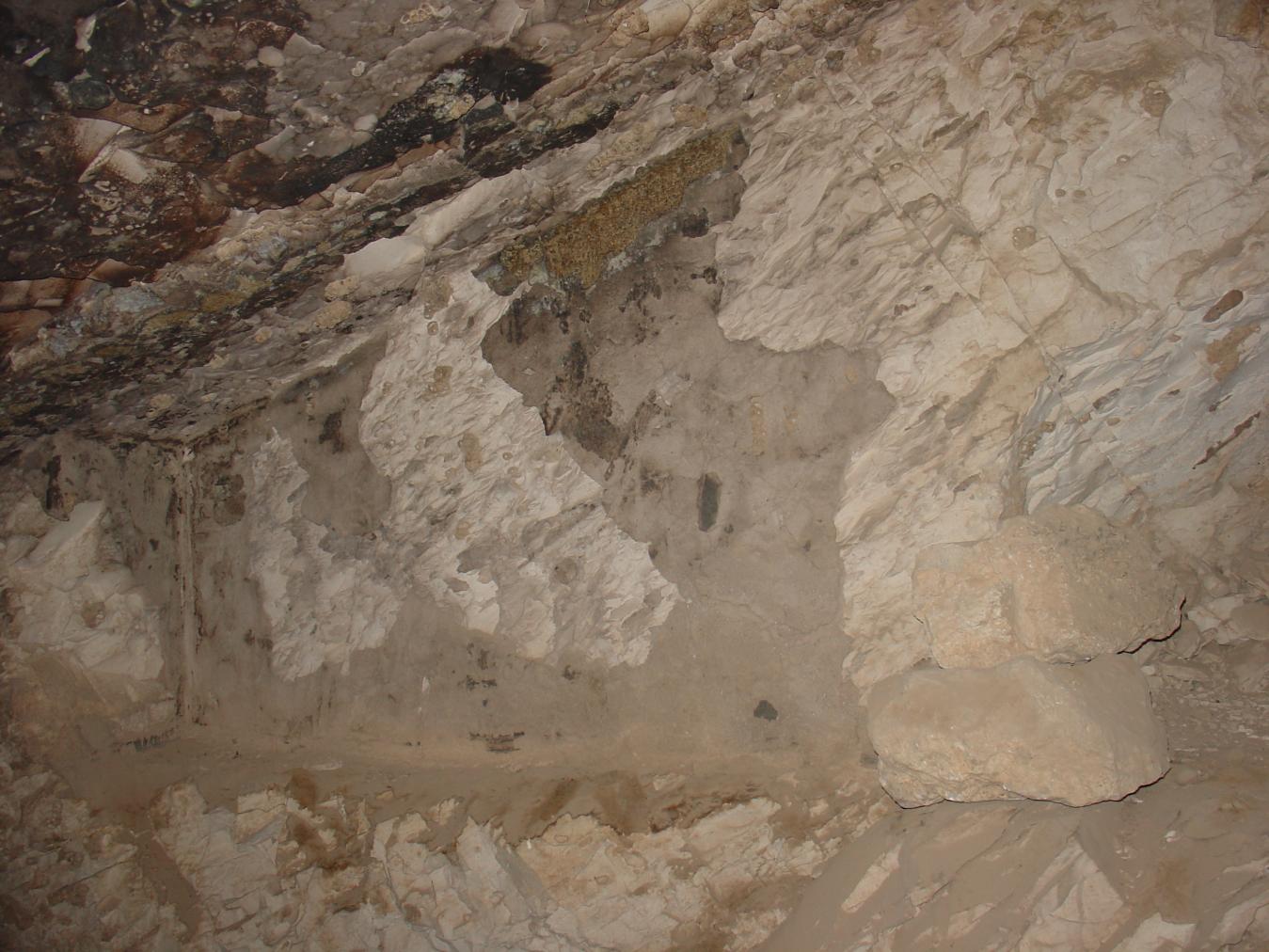
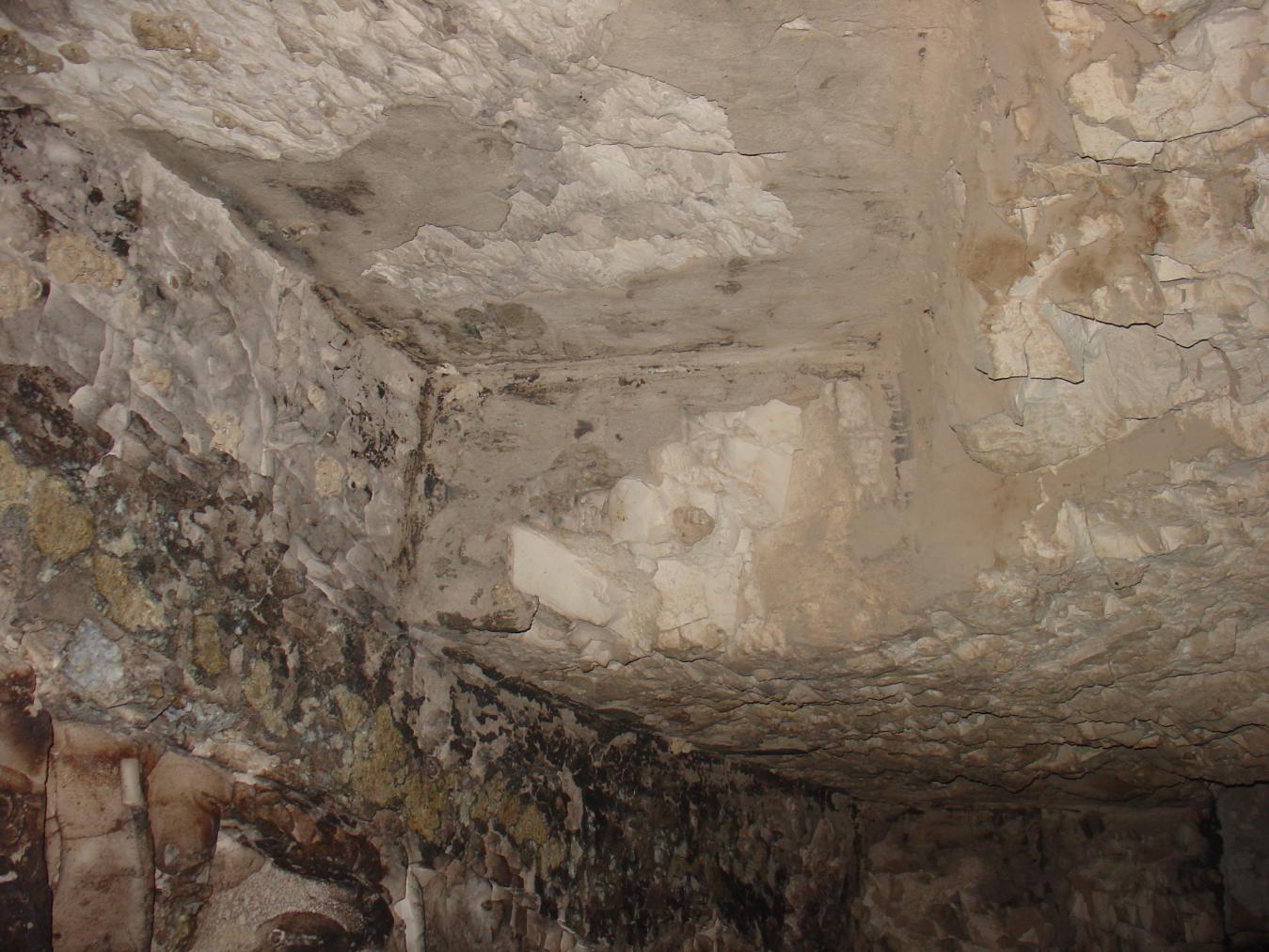
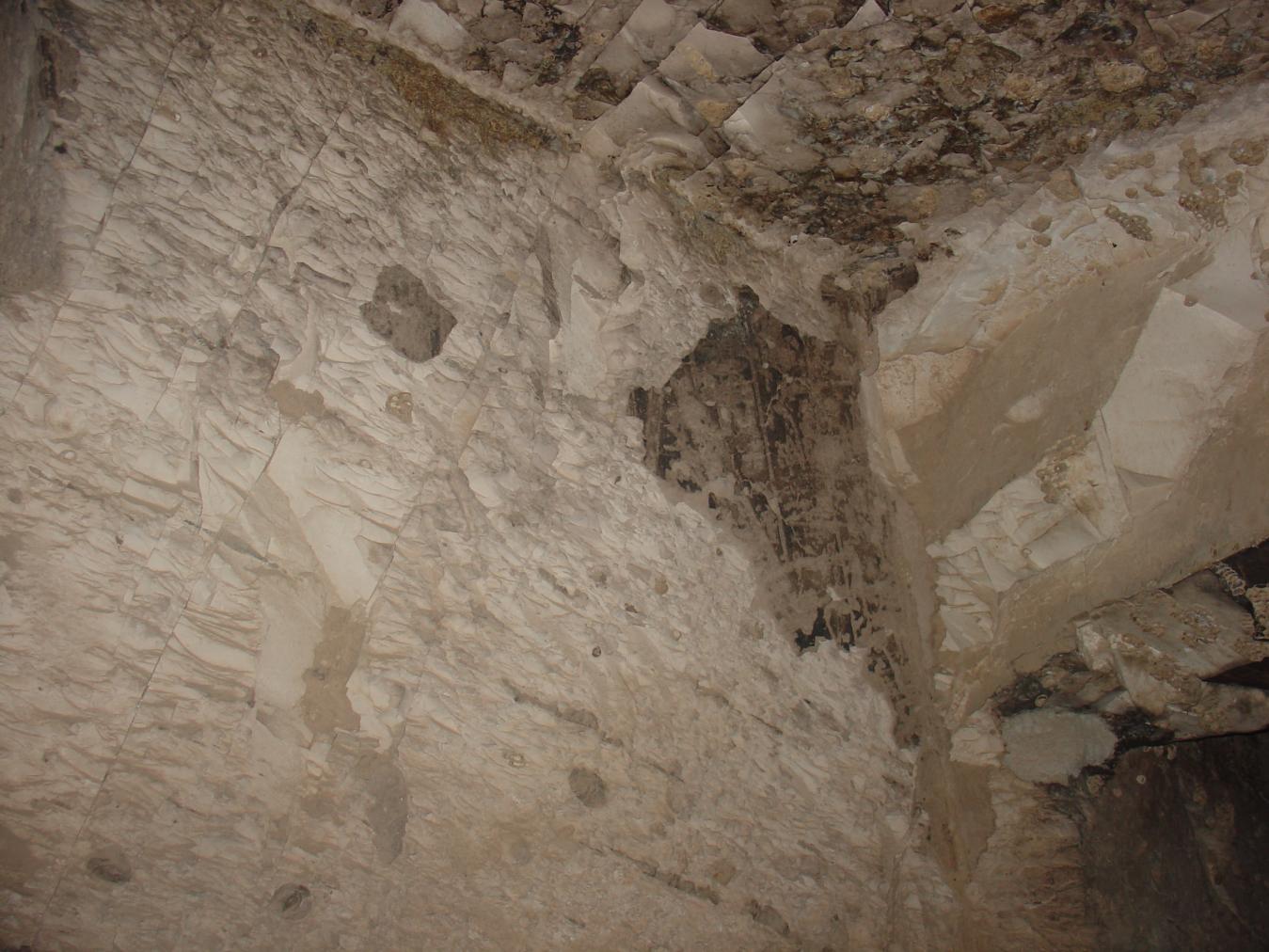
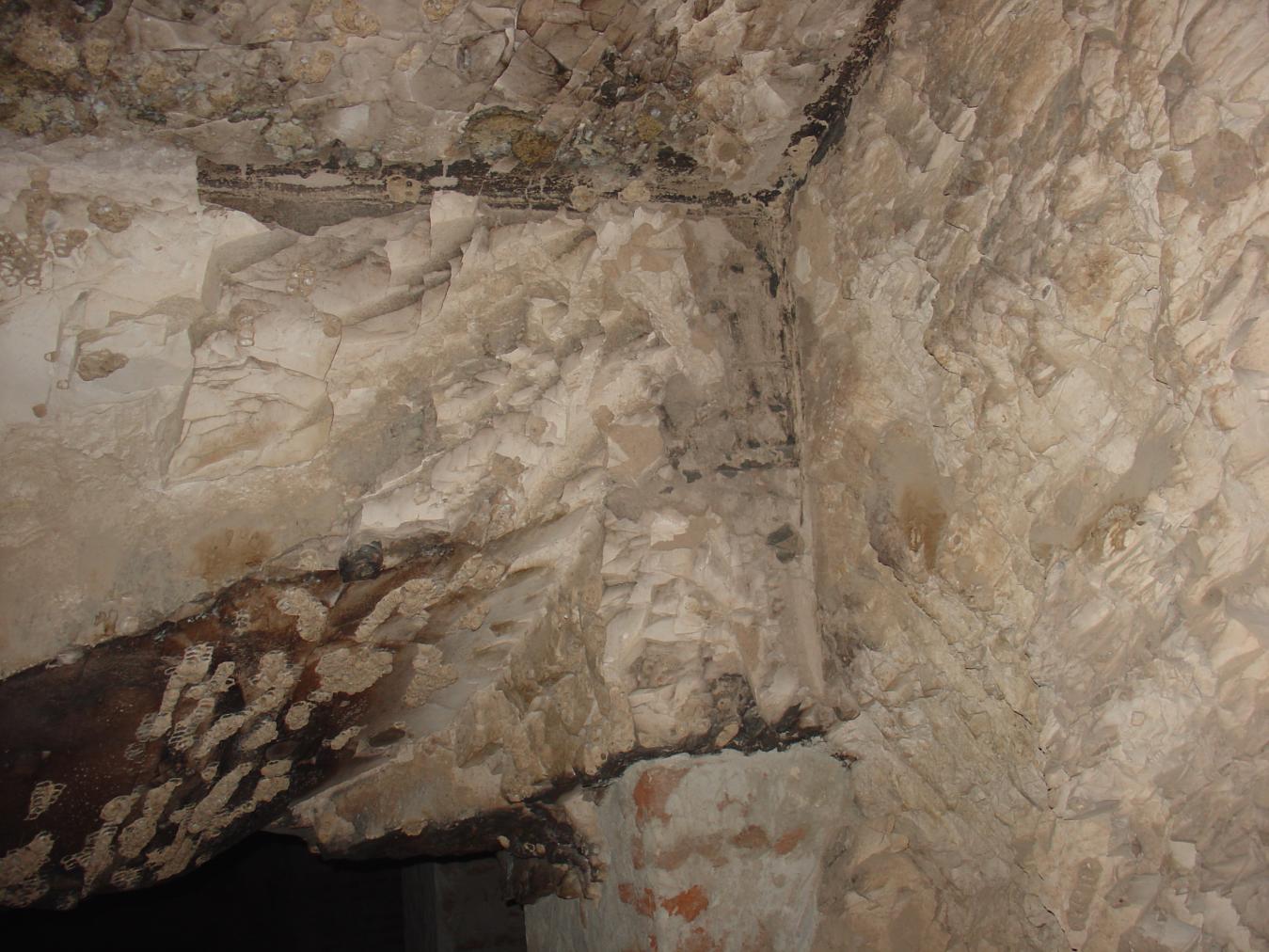
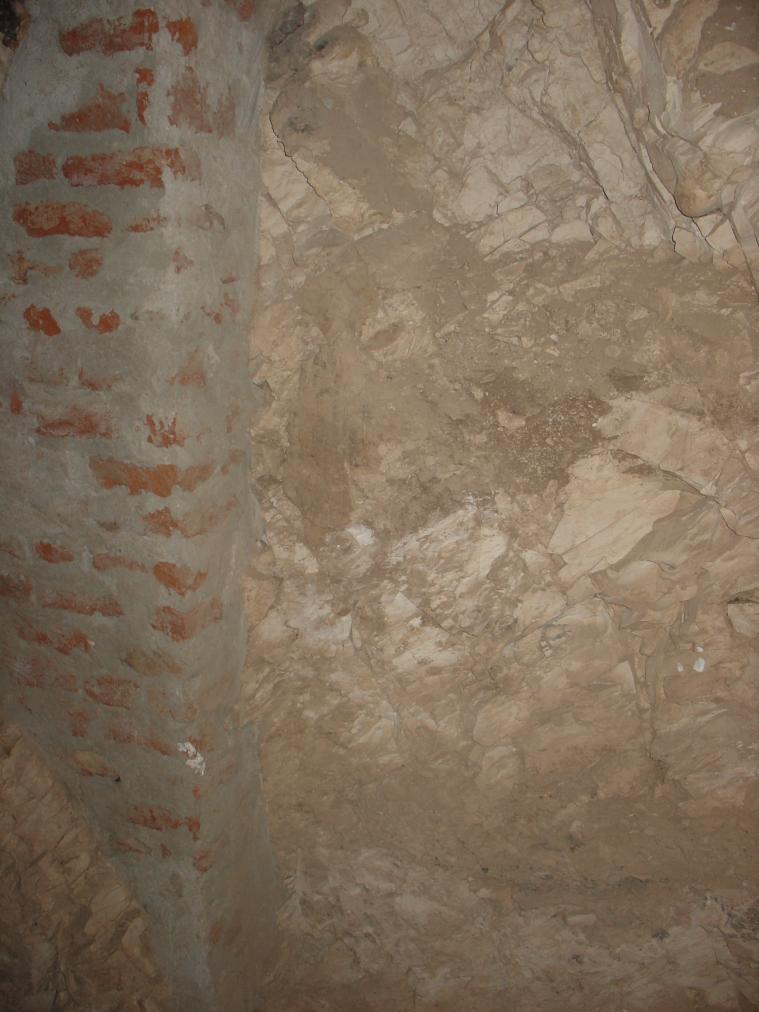
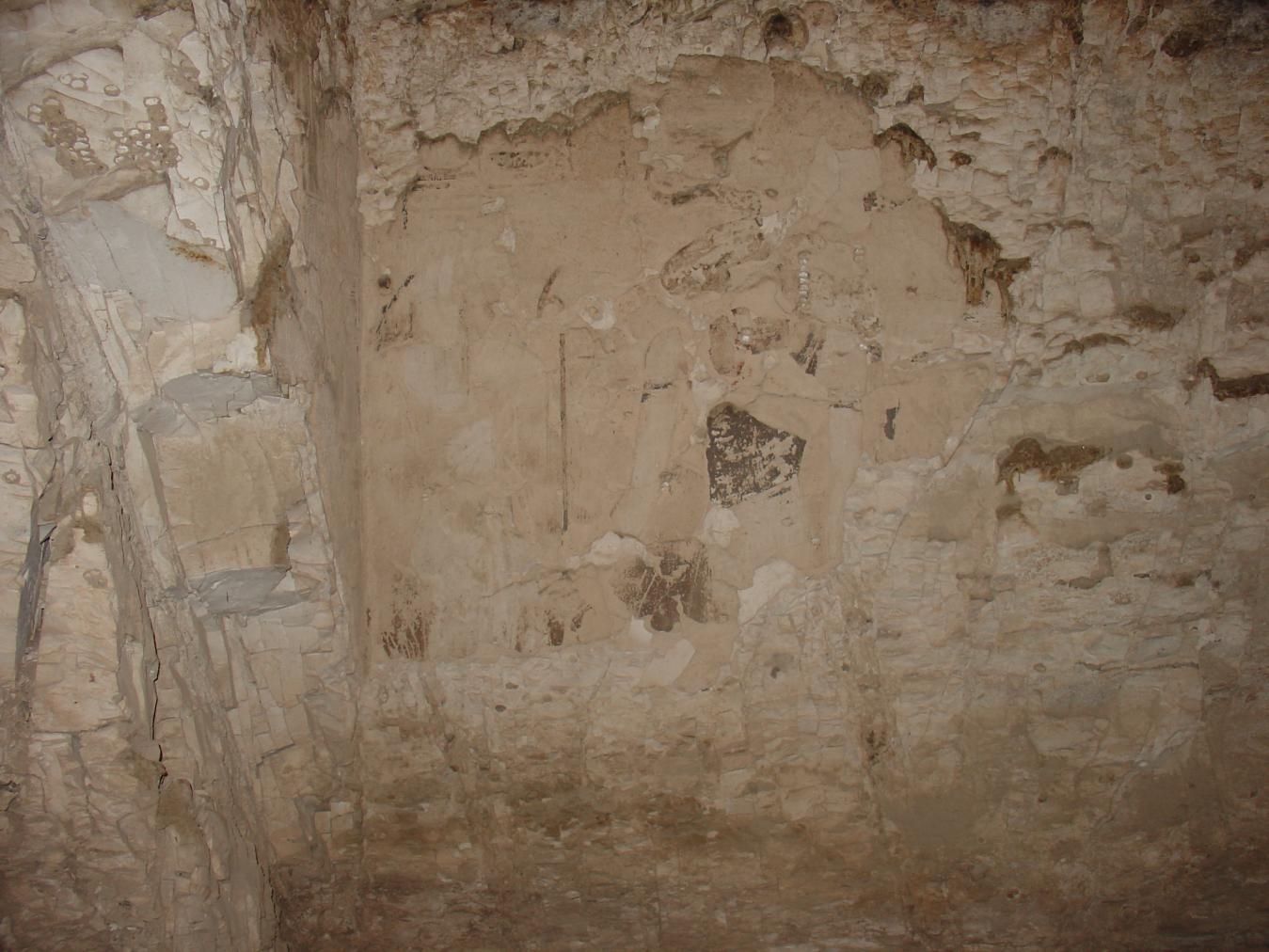
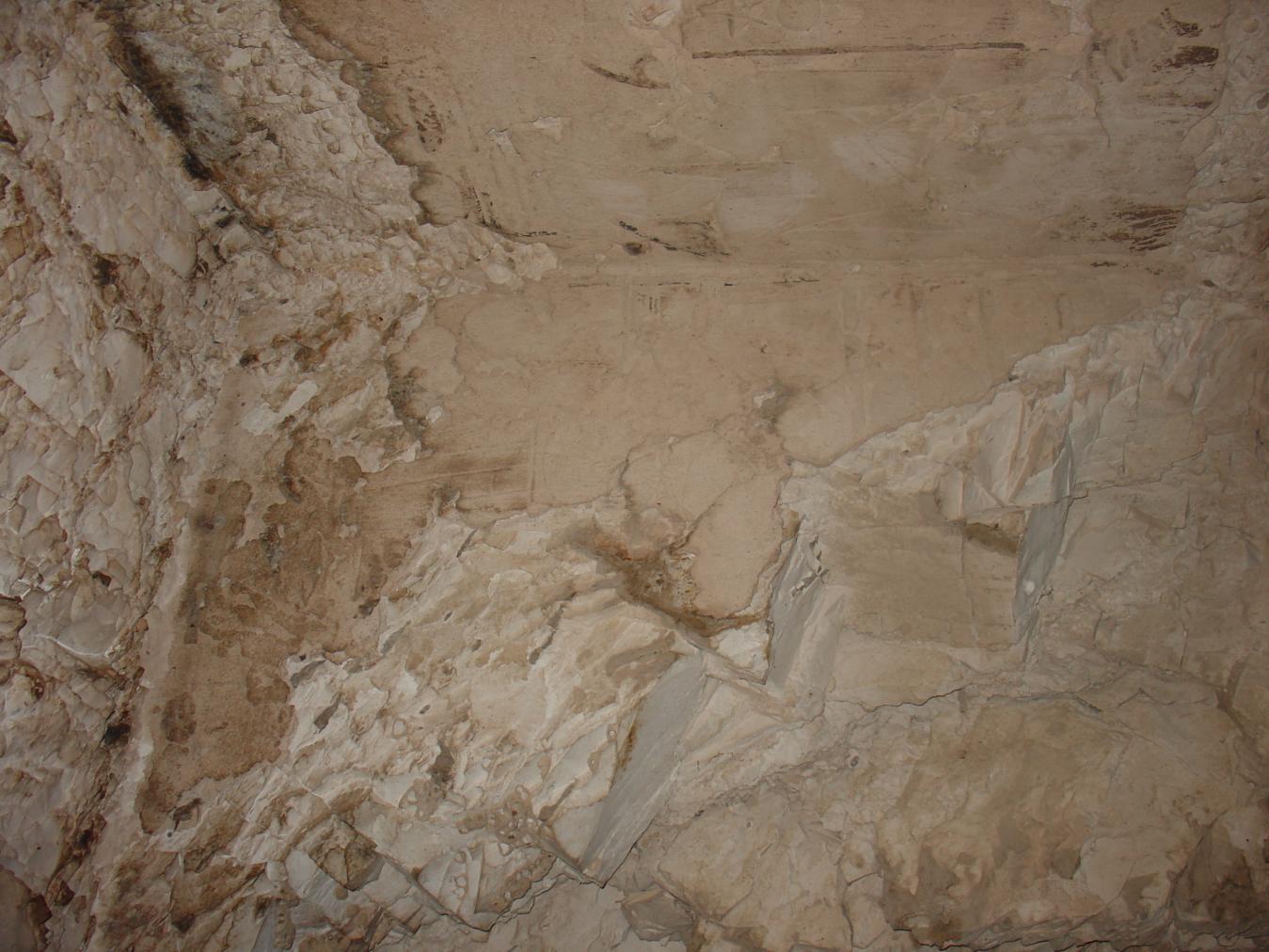
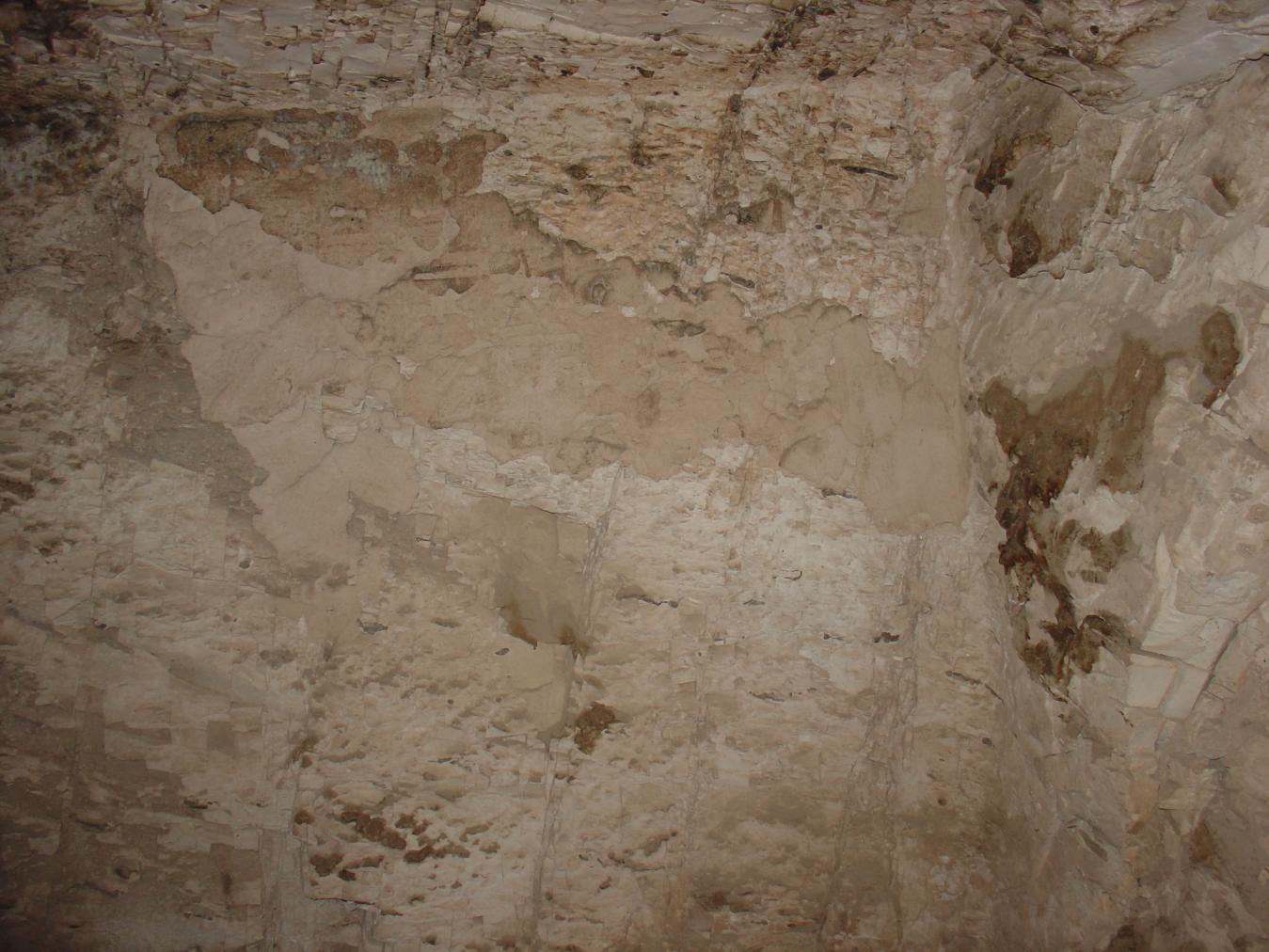
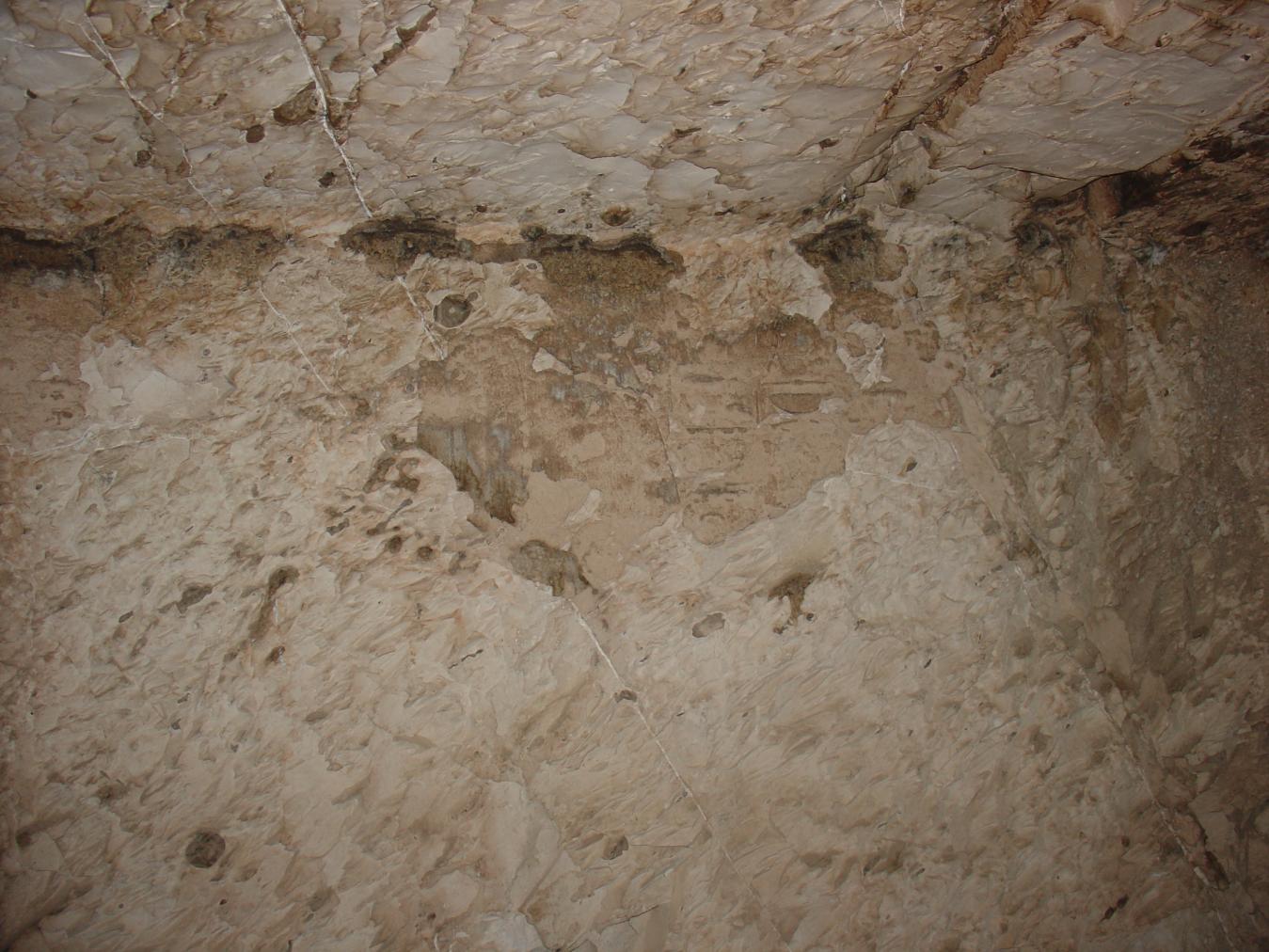
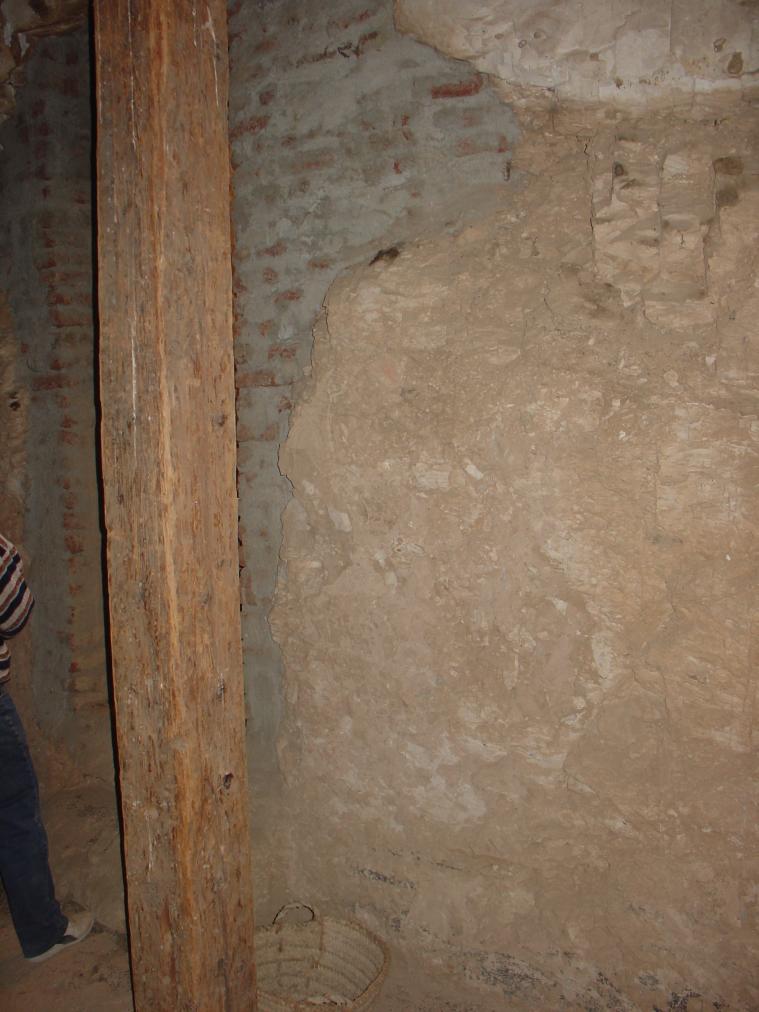
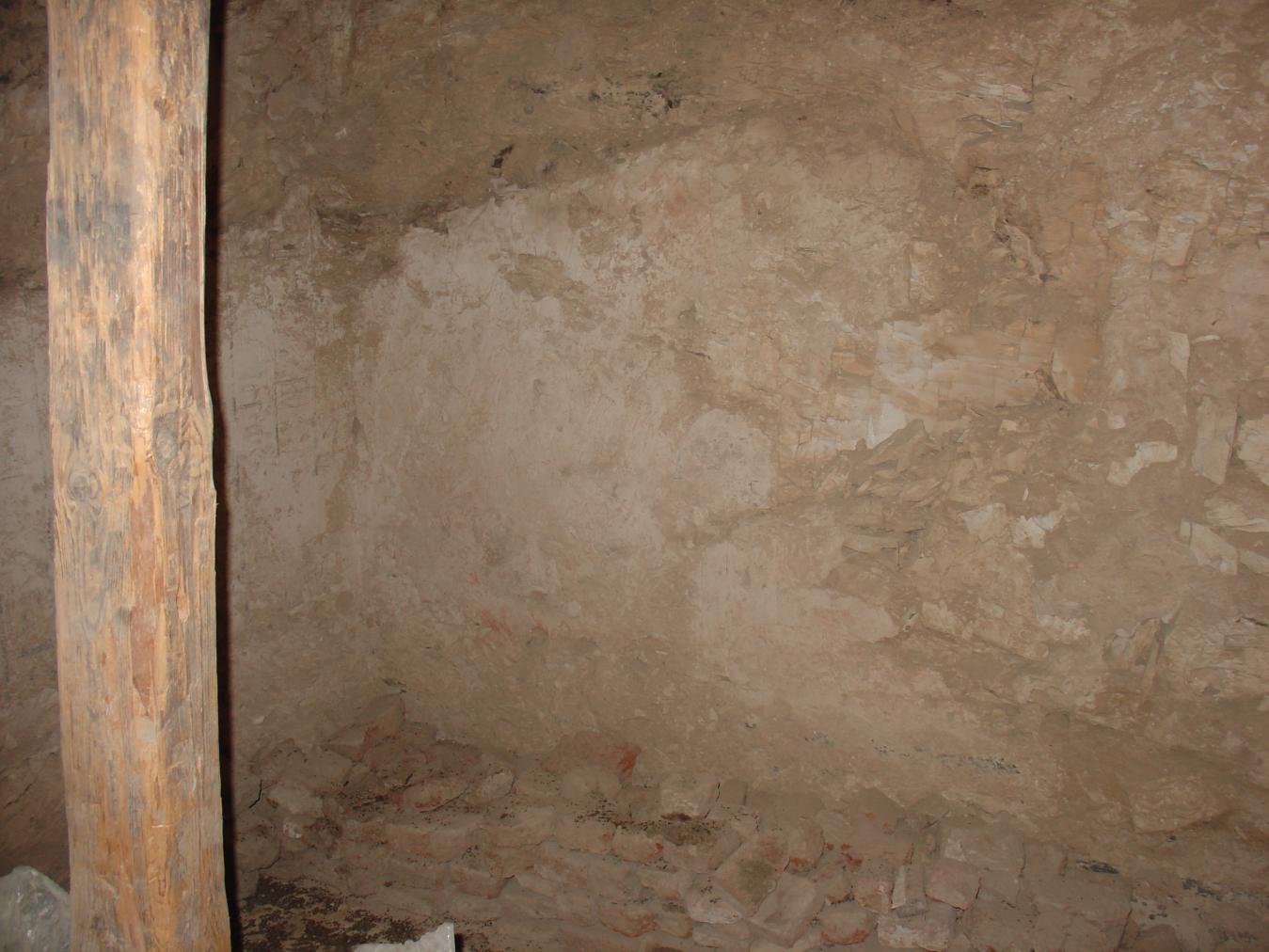
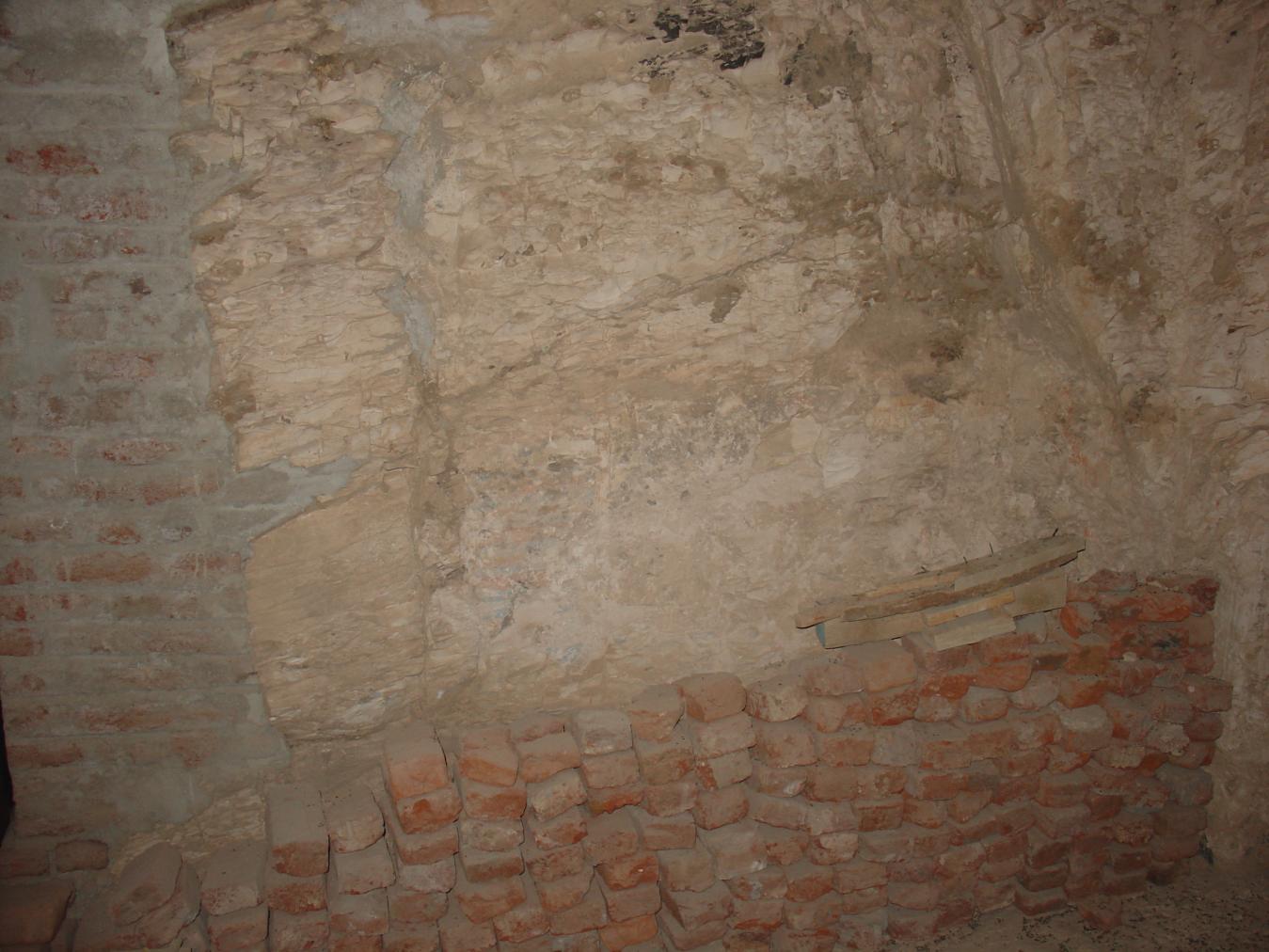
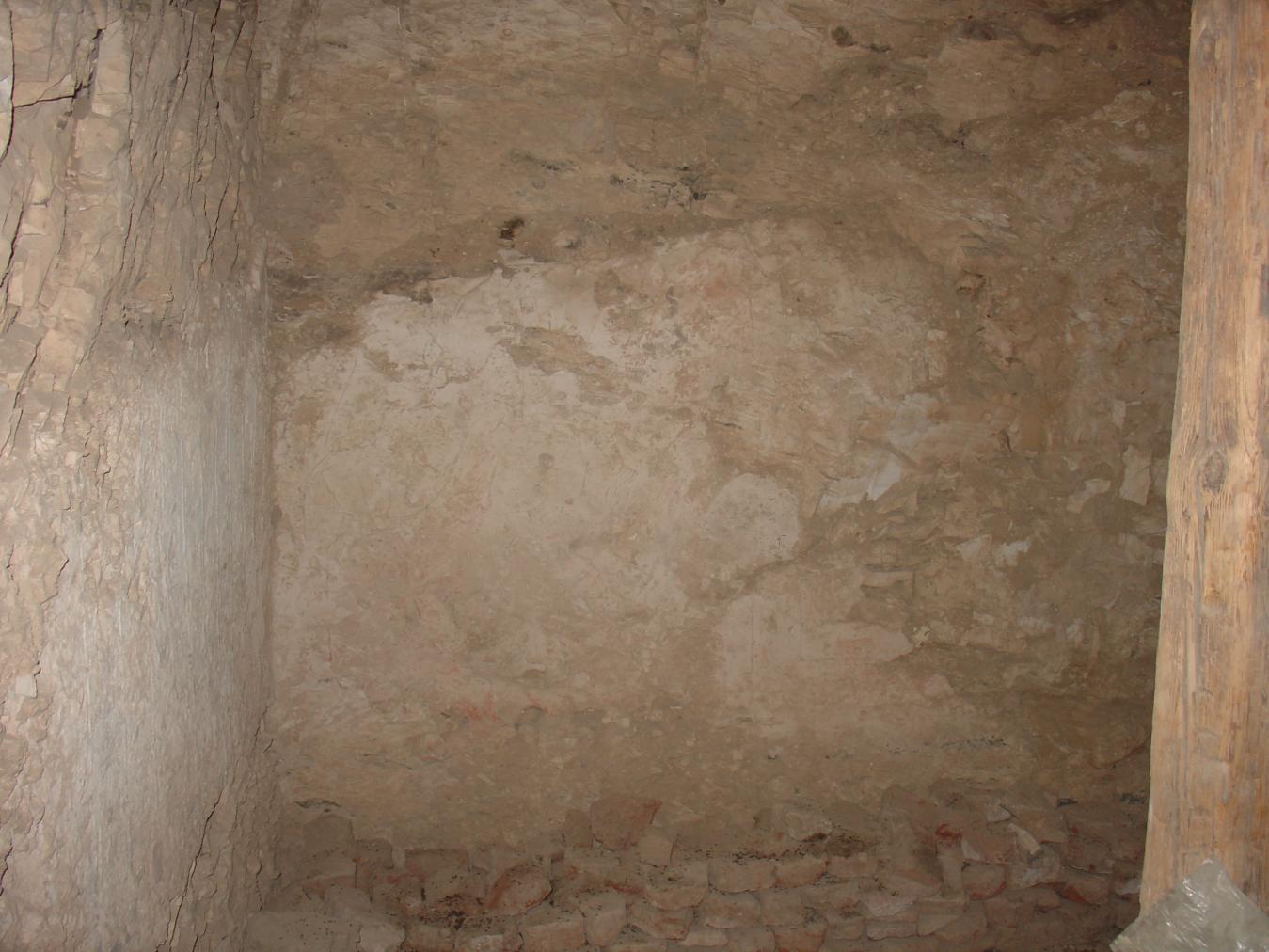
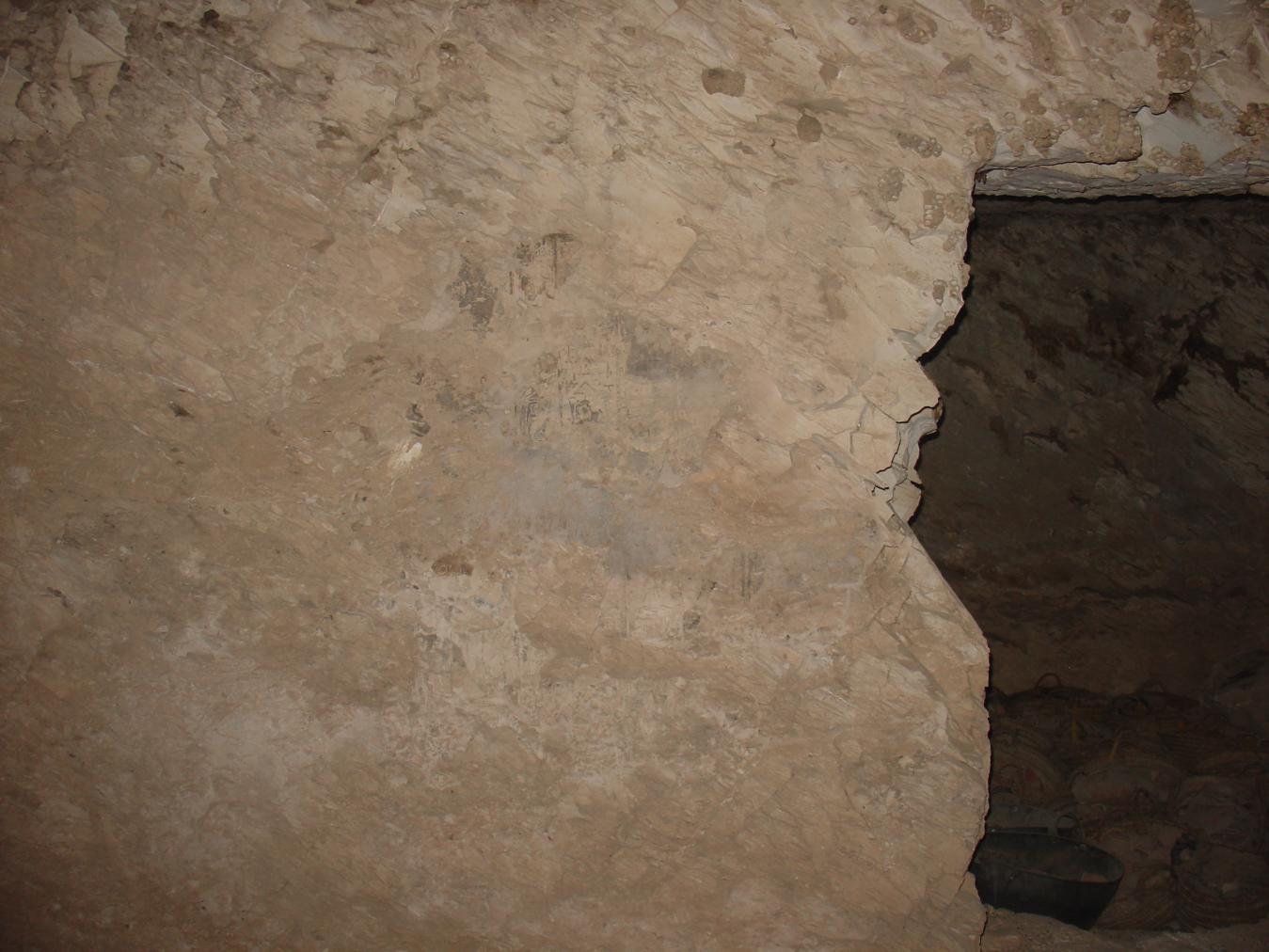
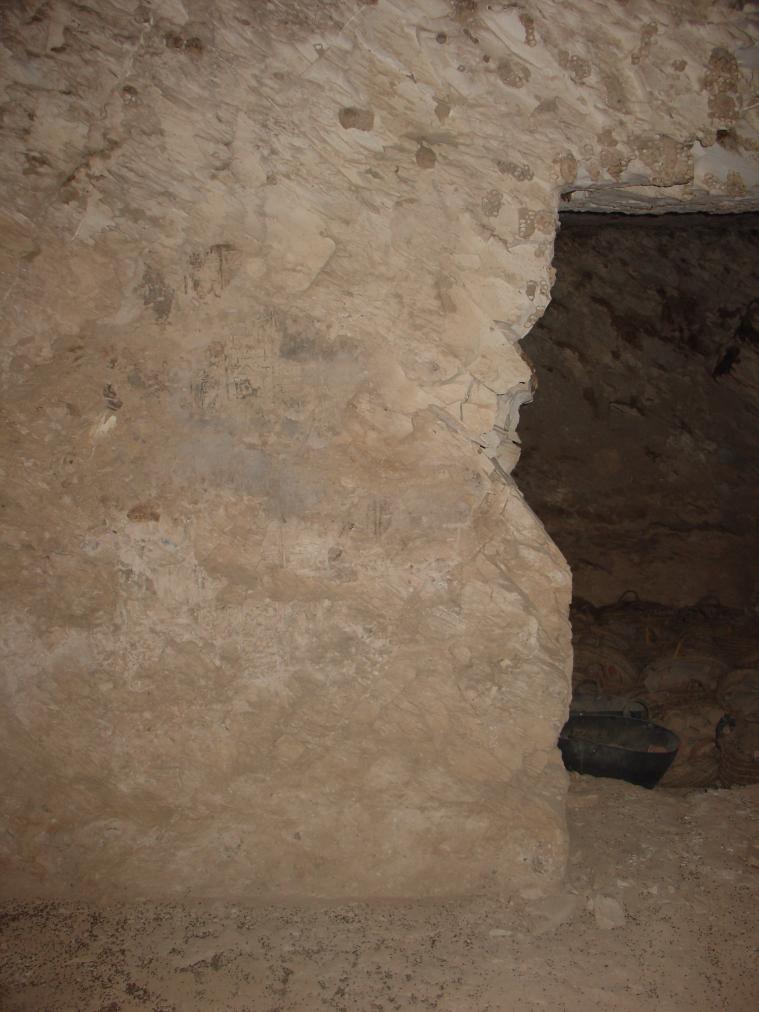

























































































Bibliography
Leblanc, Christian. Nefertari, l'aimée-de-Mout: épouses, filles et fils de Ramsès II. Monaco: Éditions de Rocher, 1999.
Lecuyot, Guy. Ta Set Neferu: A Brief History of Excavations in the Valley of the Queens. KMT: A Modern Journal of Ancient Egypt 11, 2 (2000): 42-55.
Lepsius, Richard. Denkmäler aus Aegypten und Aethiopien: Texten. Vol. 3. Leipzig: J.C. Hinrich, 1897-1913.
Masquelier-Loorius, Julie. Séthi Ier et le début de la XIXe dynastie. Les grands pharaons. Paris: Pygmalion, 2013. Pp. 322-324.
Porter, Bertha and Rosalind L.B. Moss. Topographical Bibliography of Ancient Egyptian Hieroglyphic Texts, Reliefs, and Paintings, I: The Theban Necropolis, Part 2: Royal Tombs and Smaller Cemeteries. Oxford: Oxford University Press, 1964.
Schneider, Hans D. Shabtis: An introduction to the History of Ancient Egyptian Funerary Statuettes with a Catalogue of the Collection of Shabtis in the National Museum of Antiquities at Leiden. Leiden: Rijksmuseum van Oudheden, 1977.
Schumann-Antelme, Ruth. Bouchon de vase canope représentant la tête de la reine Touy. In: Ramsès le Grand: catalogue d'exposition, galeries nationales du Grand-Palais de Paris: Paris: Musées nationaux, 1976: 28-31.
Thomas, Elizabeth. The Royal Necropoleis of Thebes. Princeton: privately printed, 1966.
Wüst, Raphael. Valley of the Queens: Geological Investigations 2008 (Feb. 11-18). Report for the Getty Conservation Institute, 2008.

